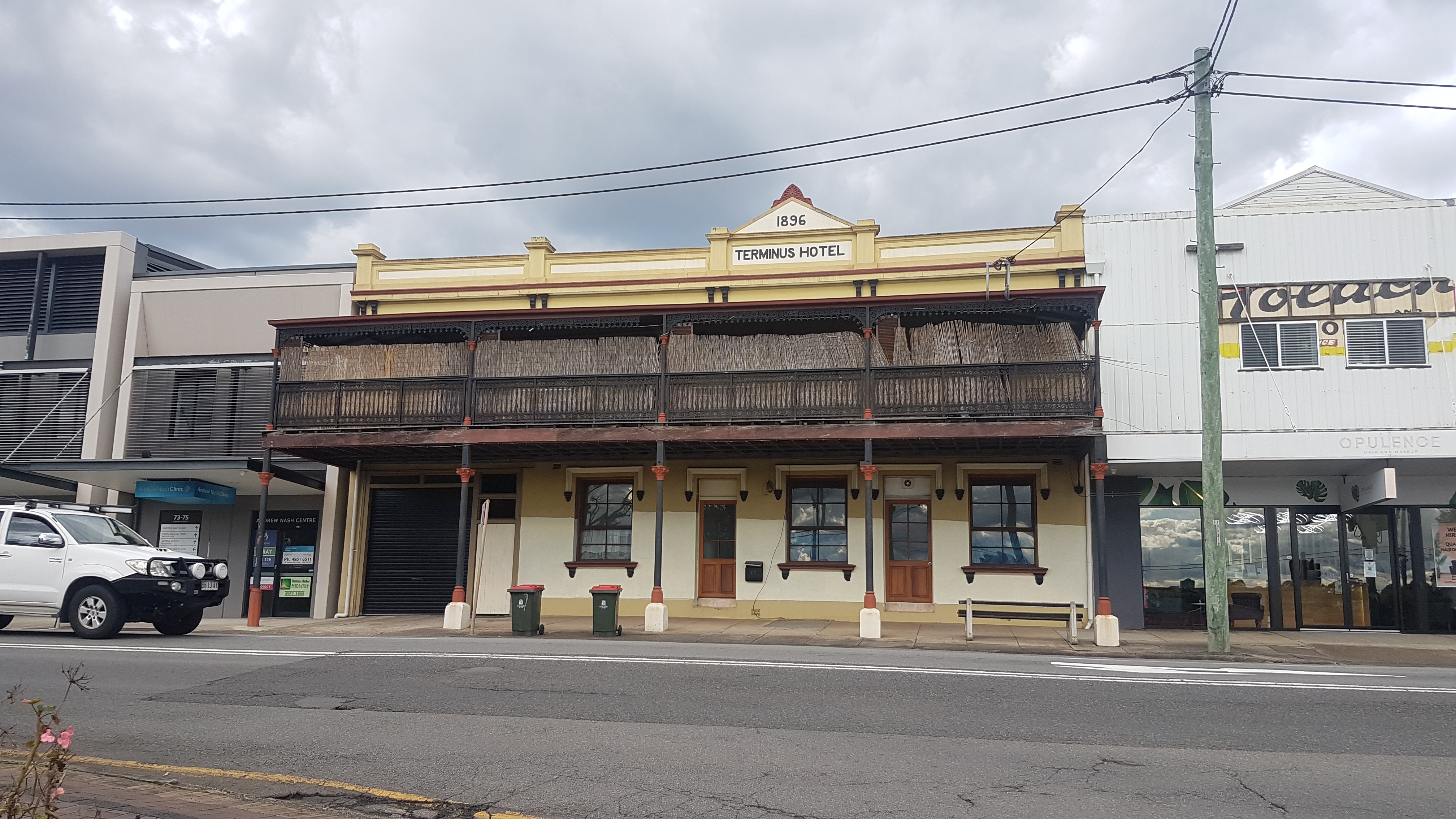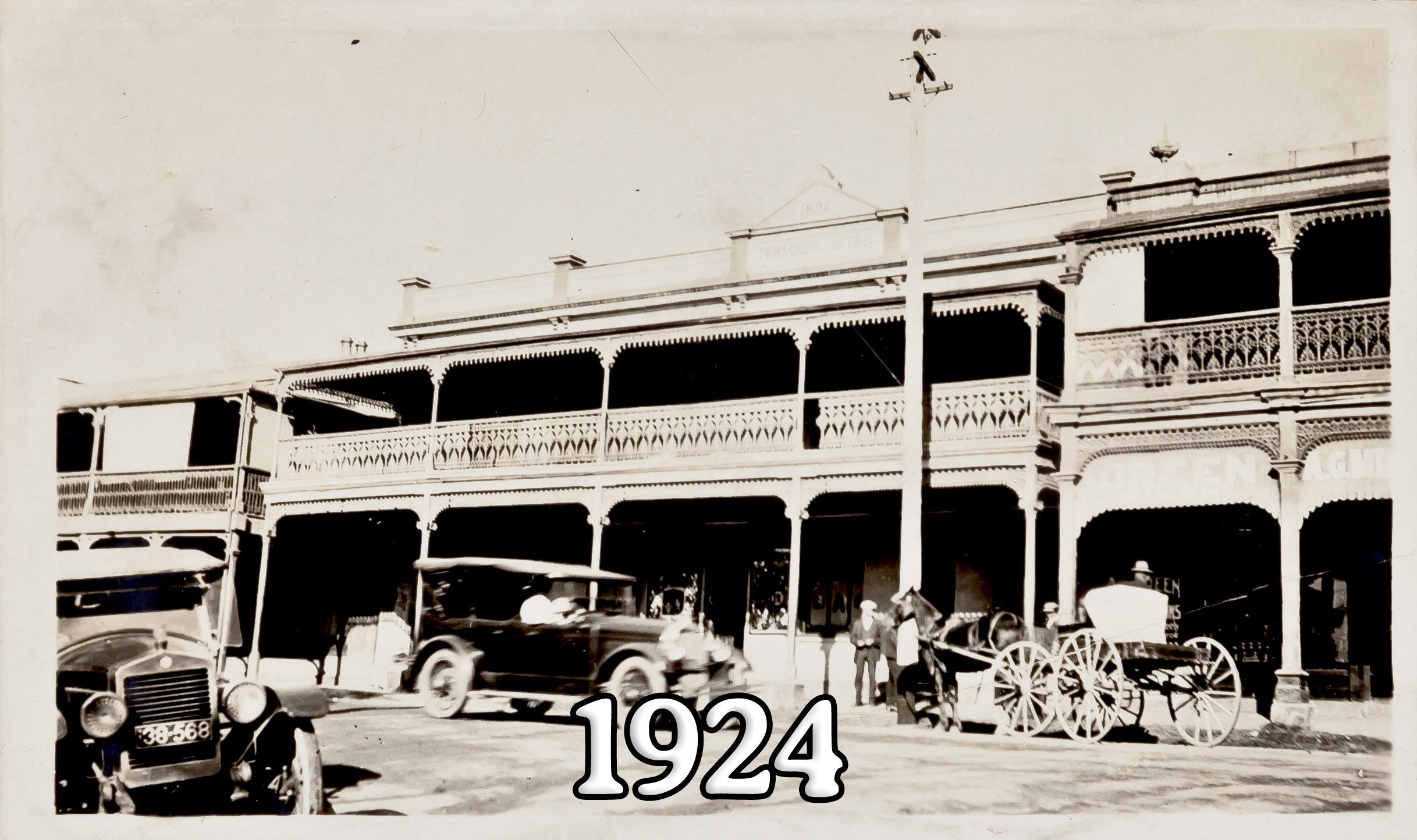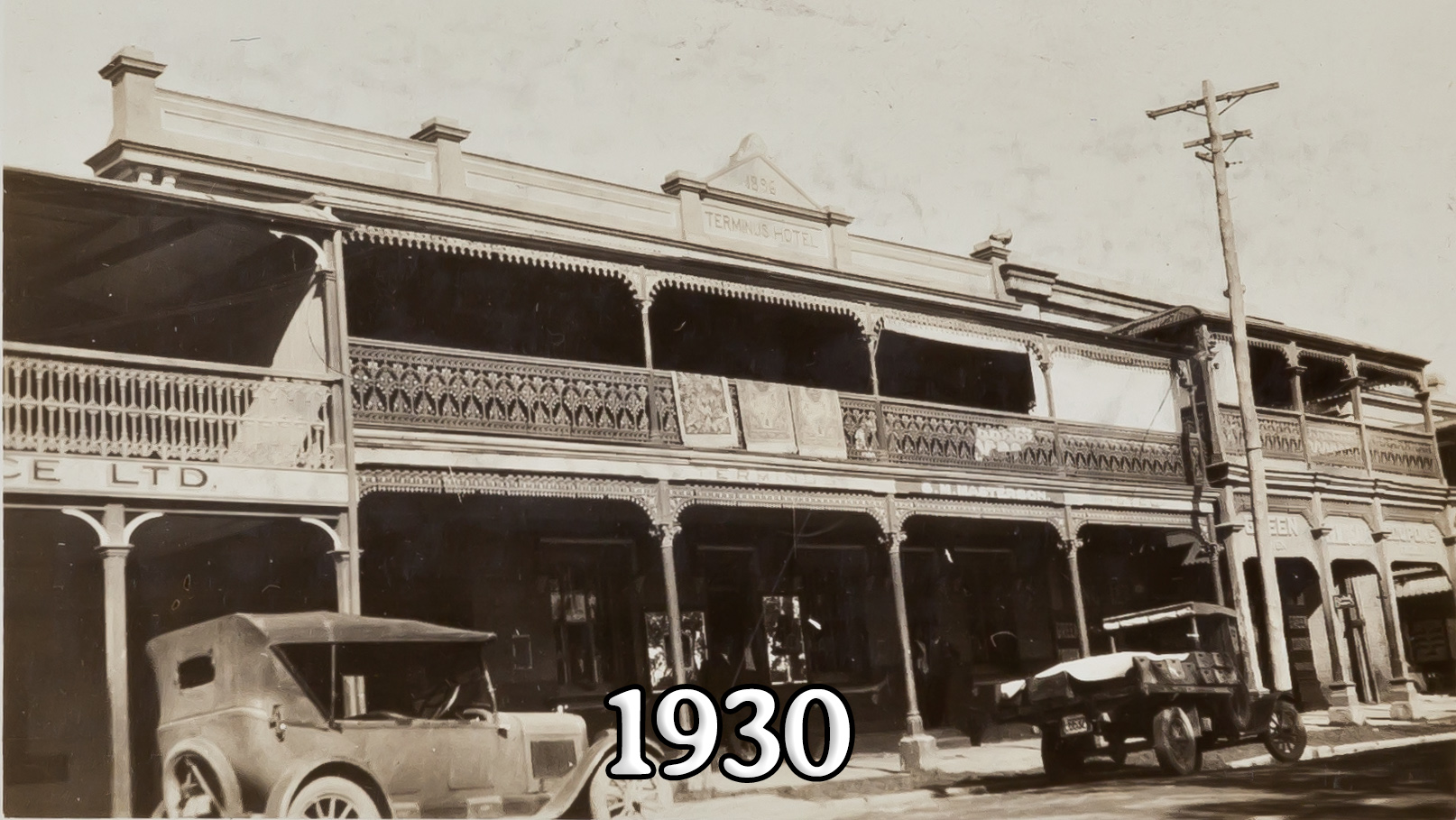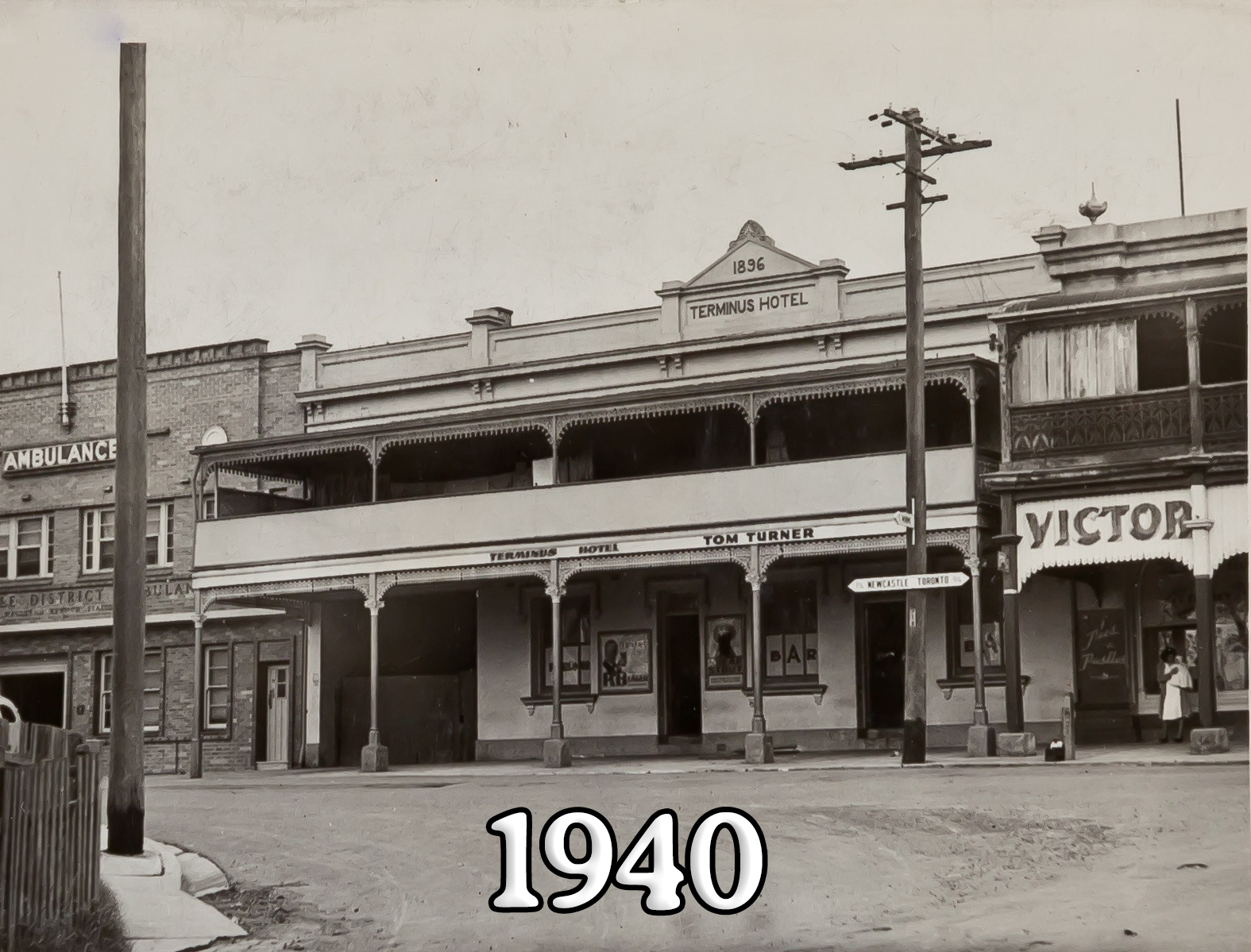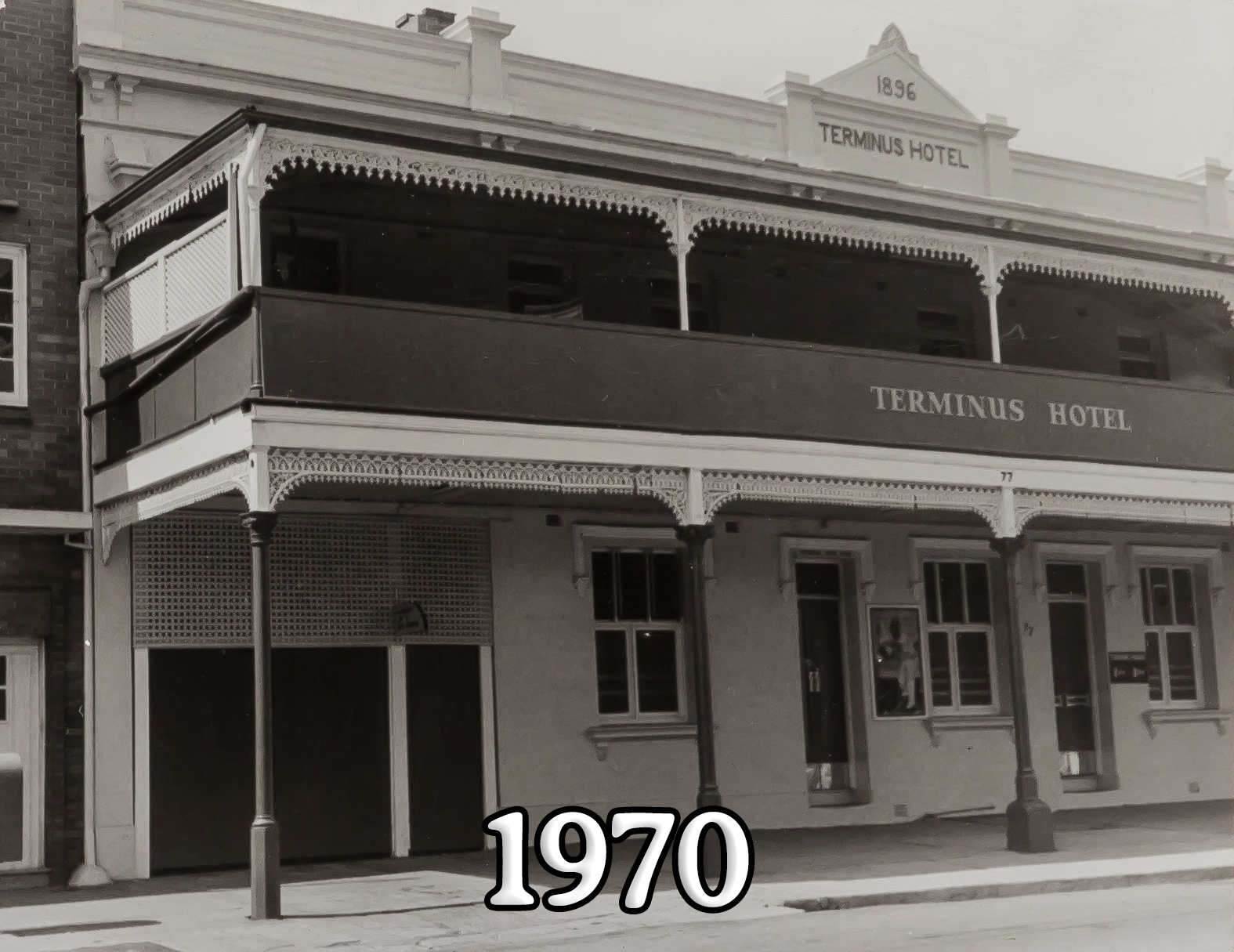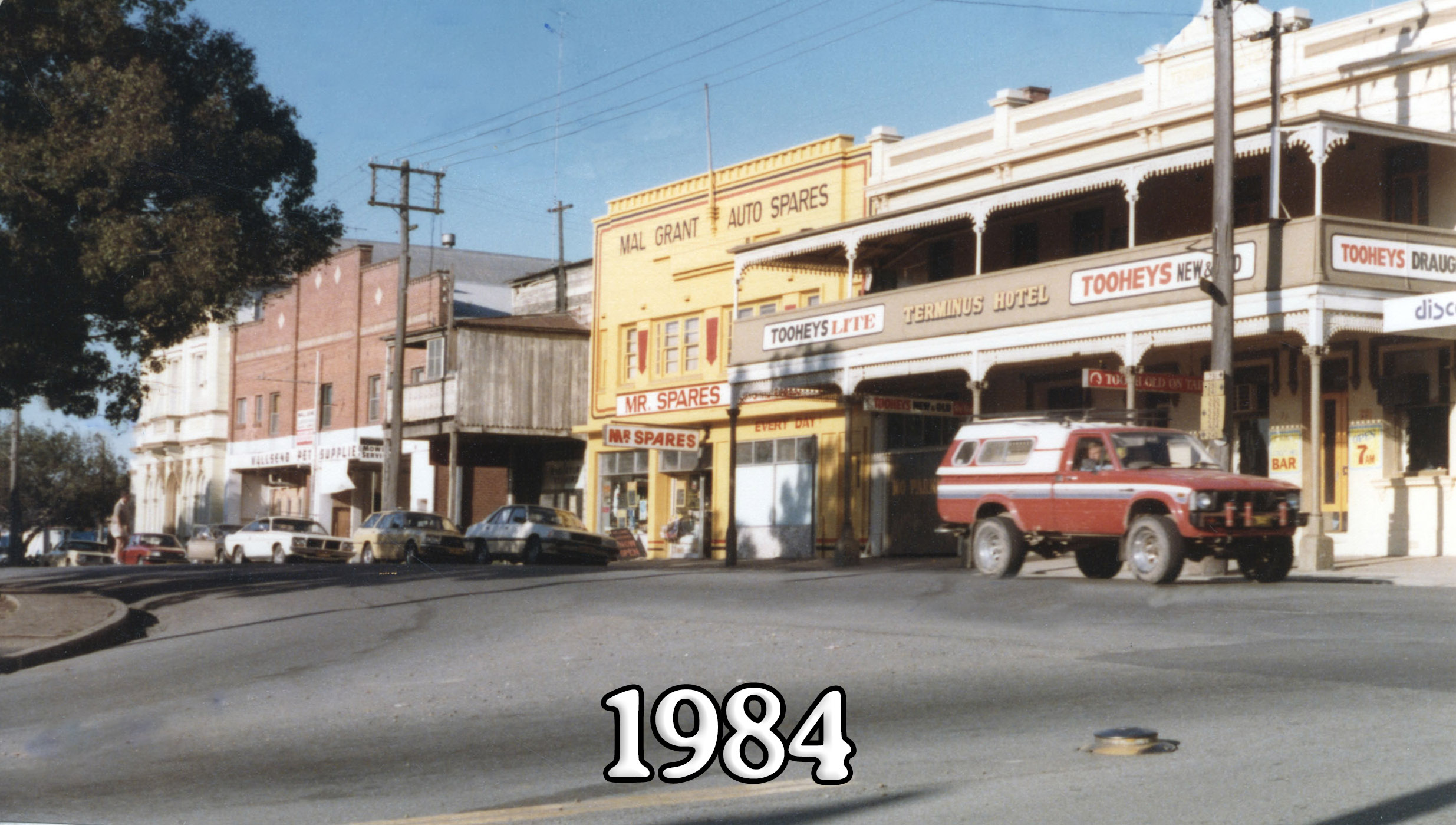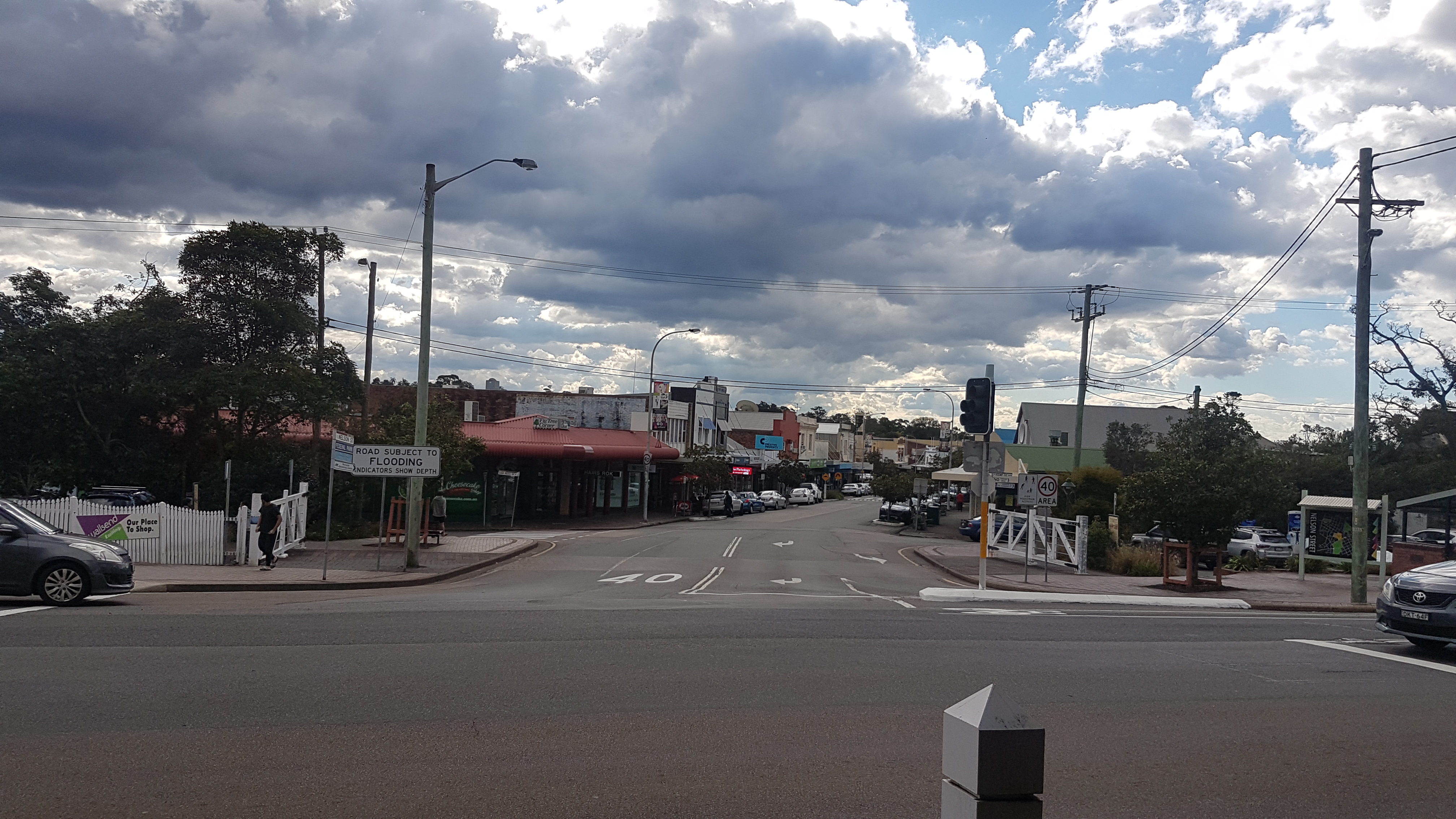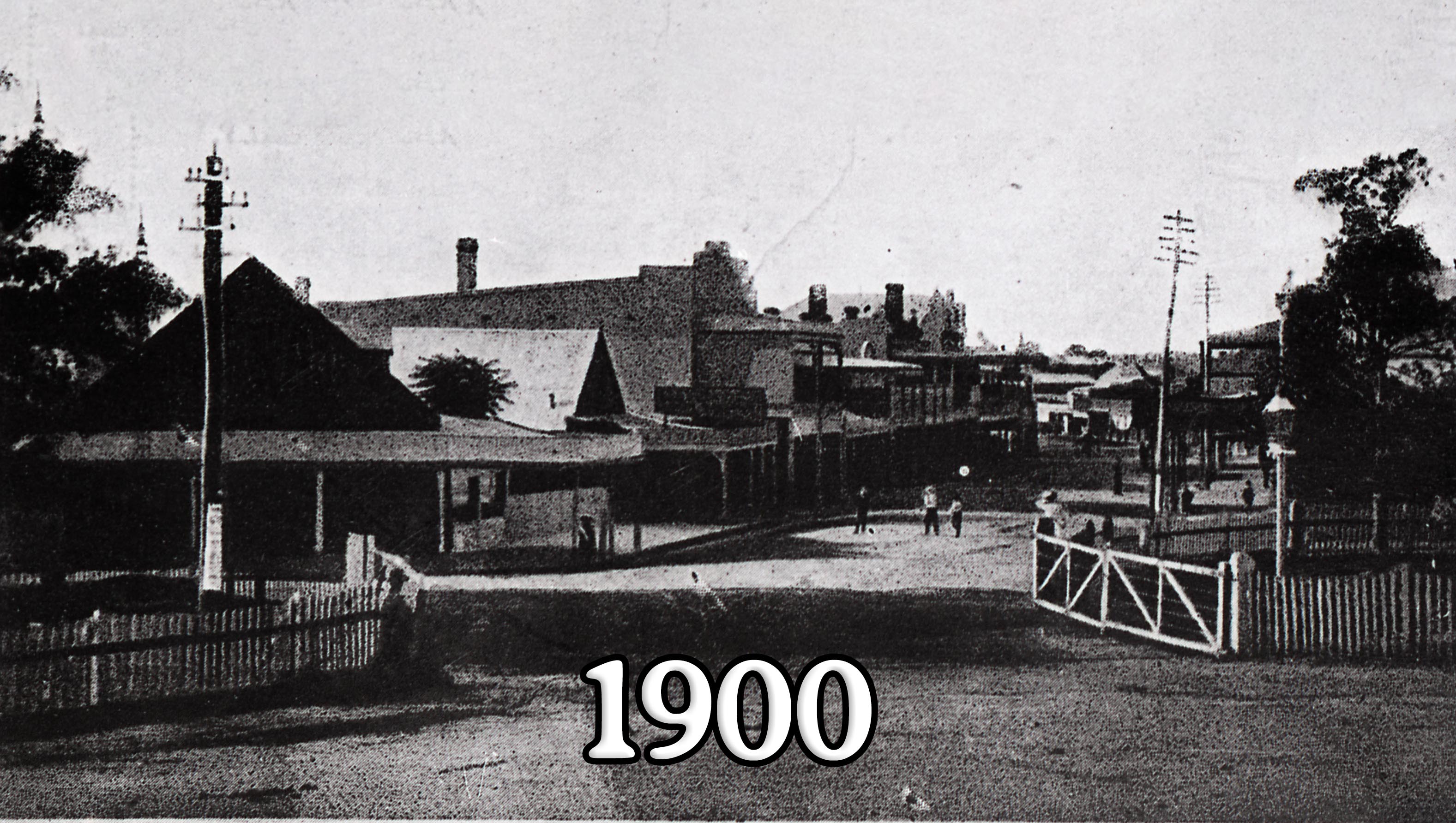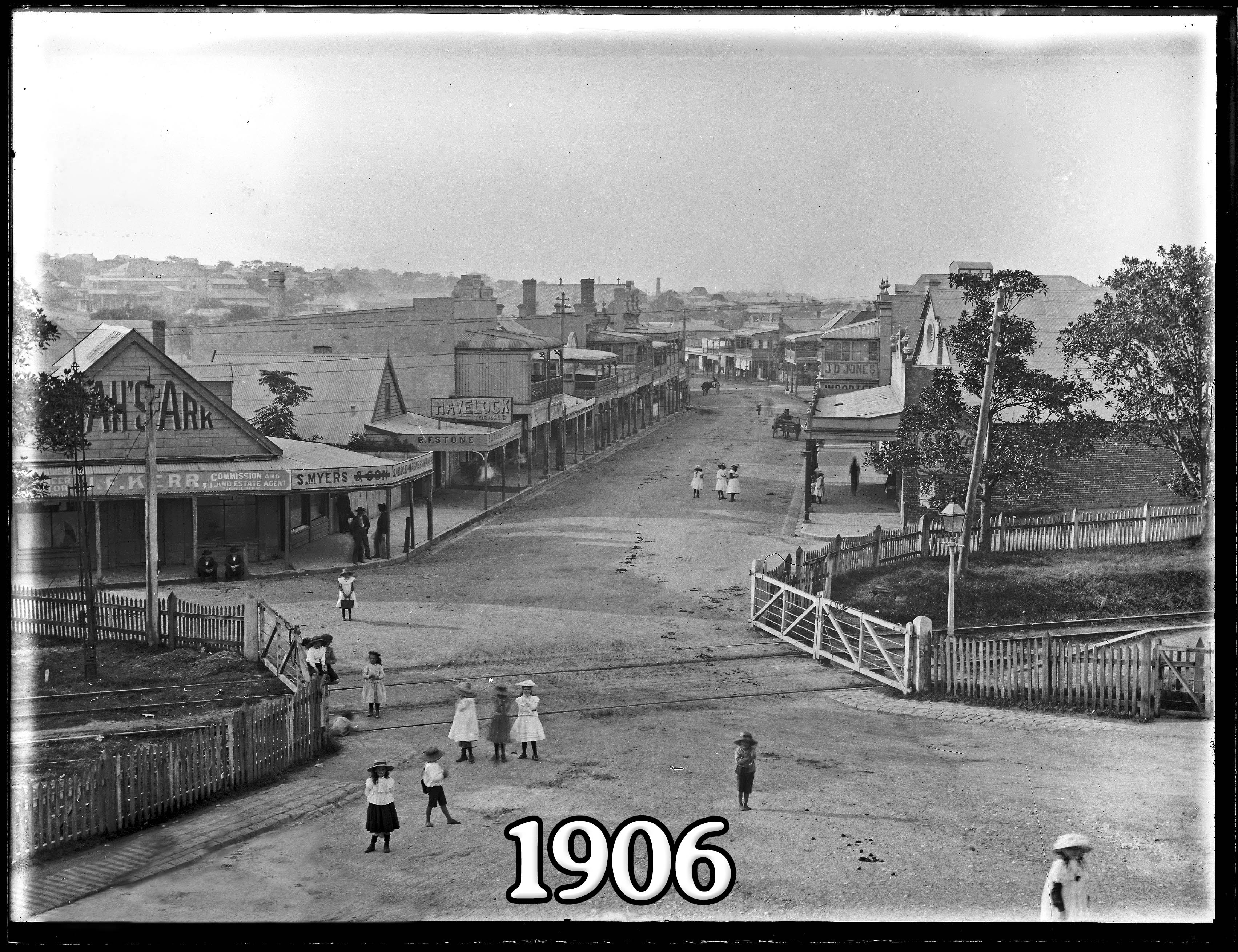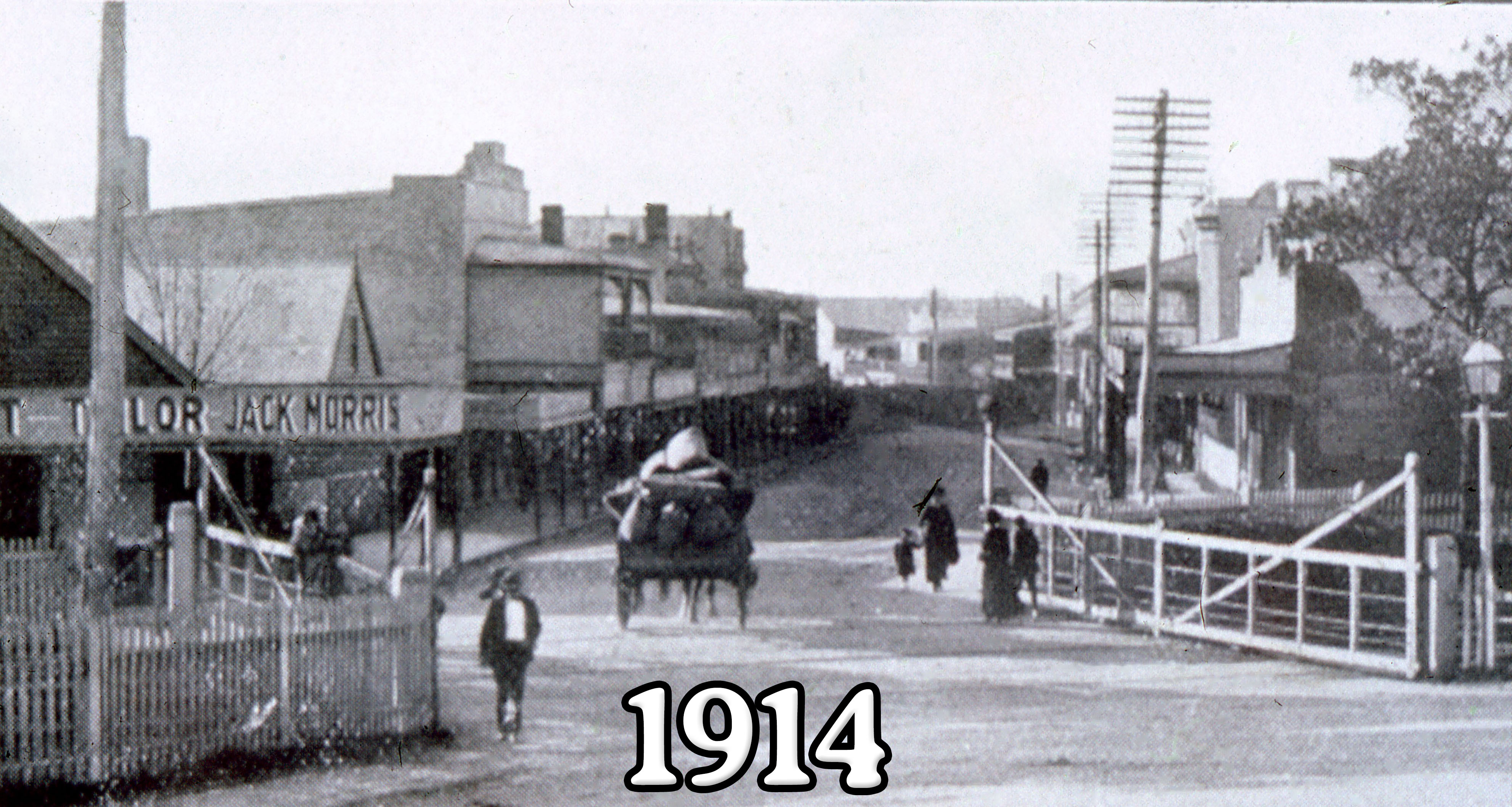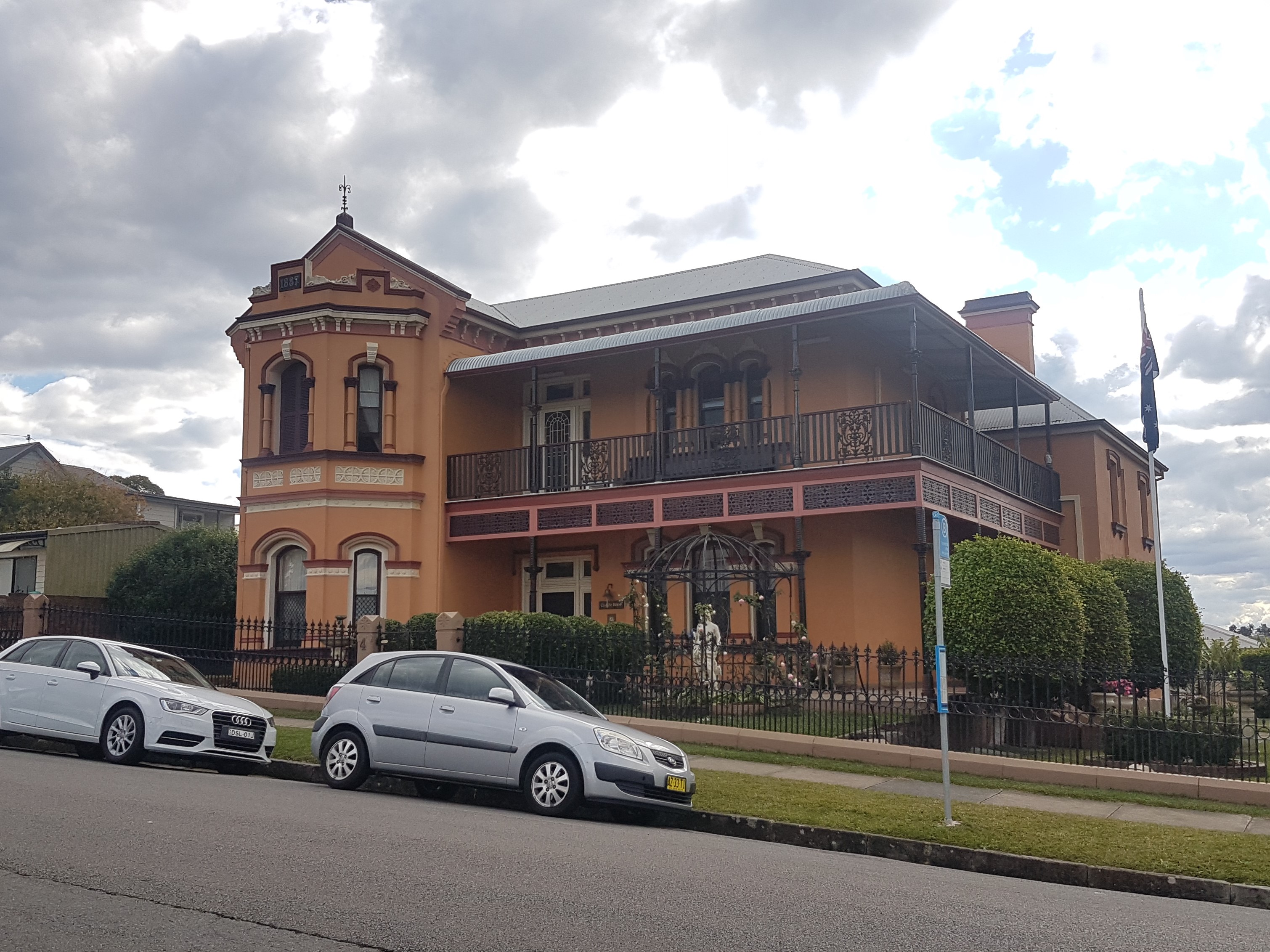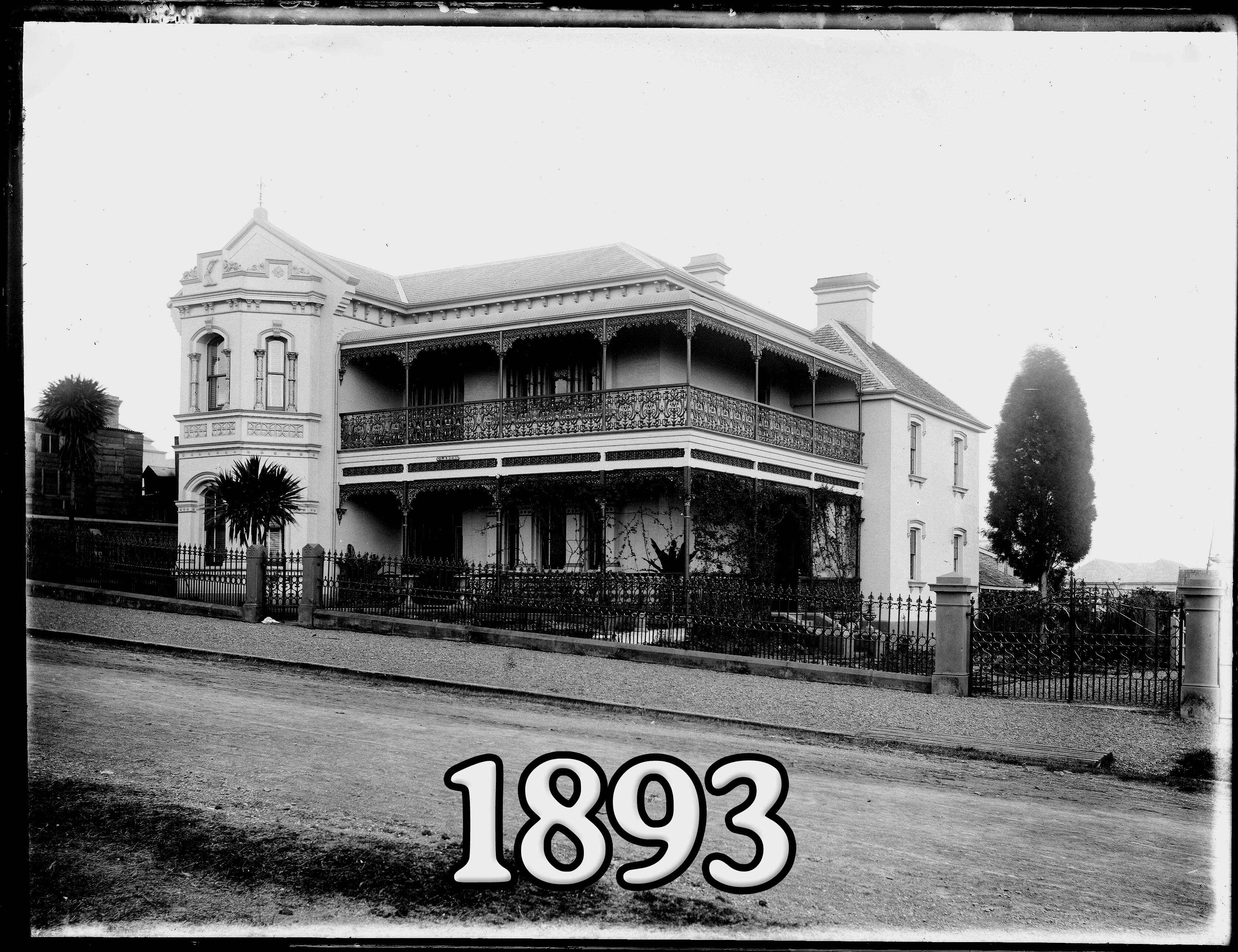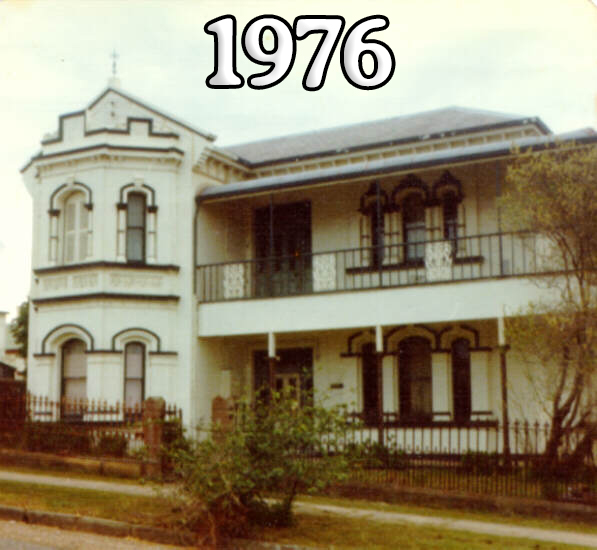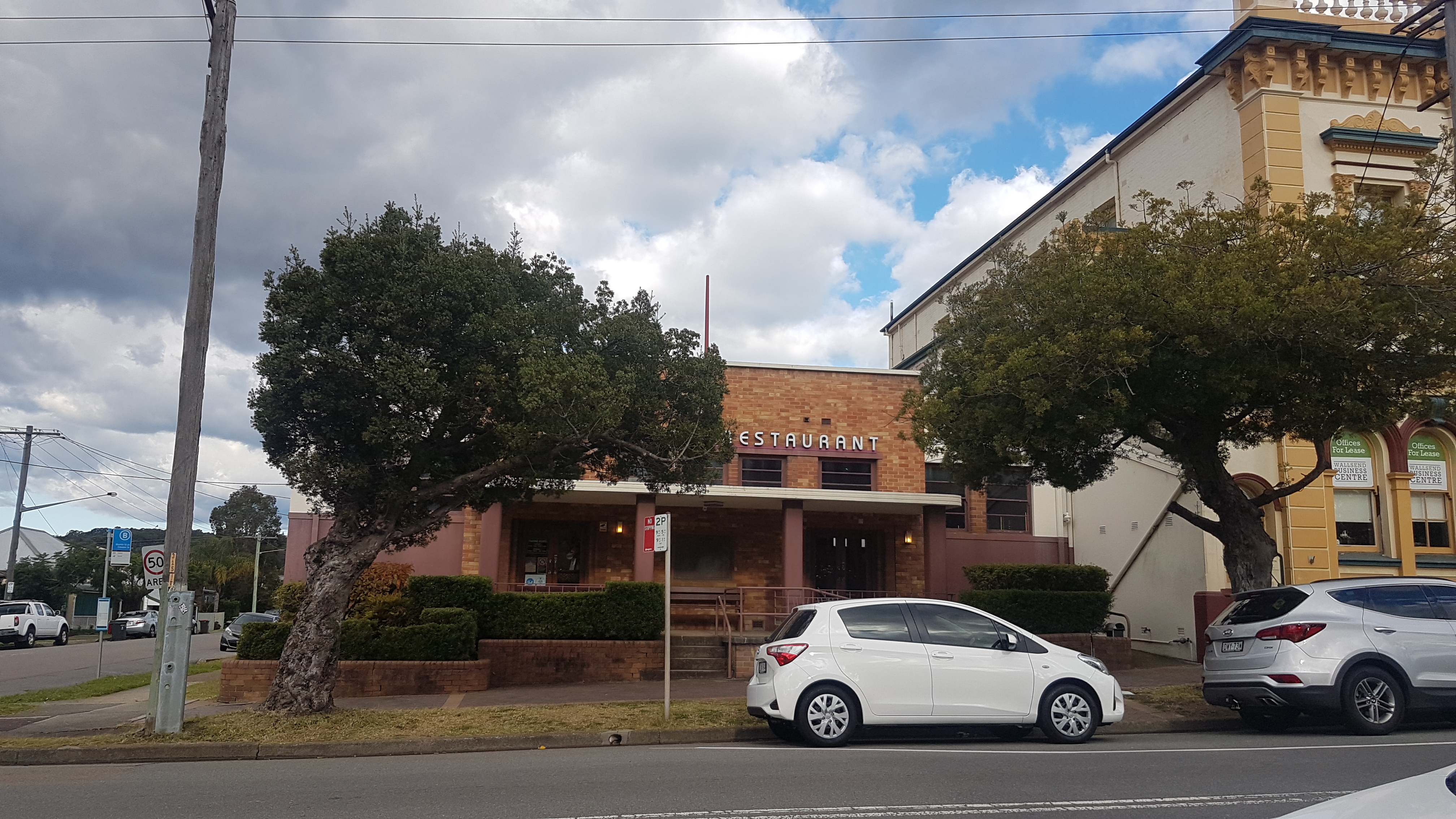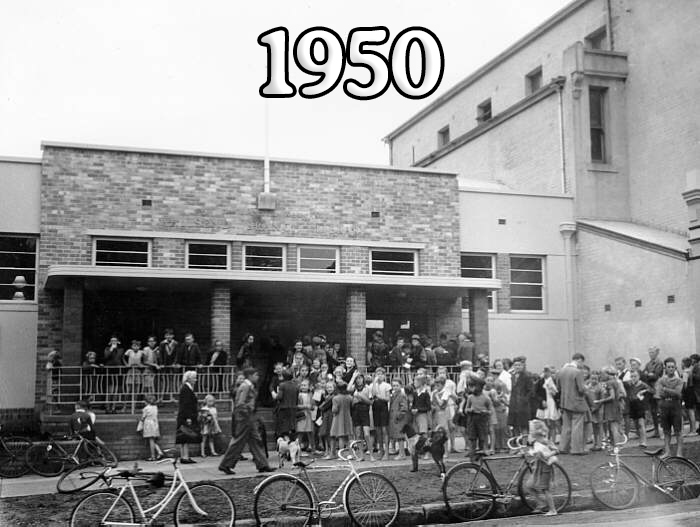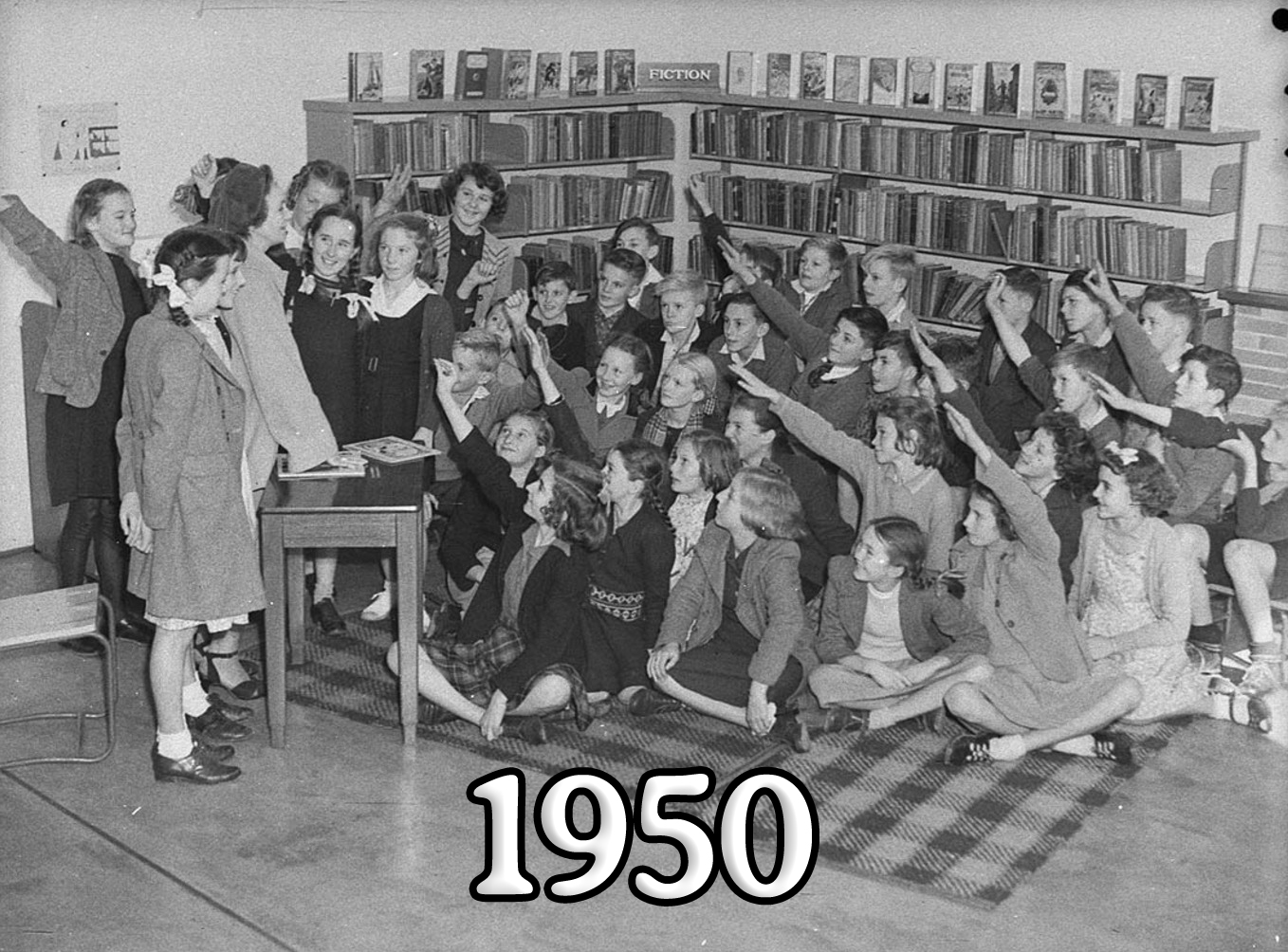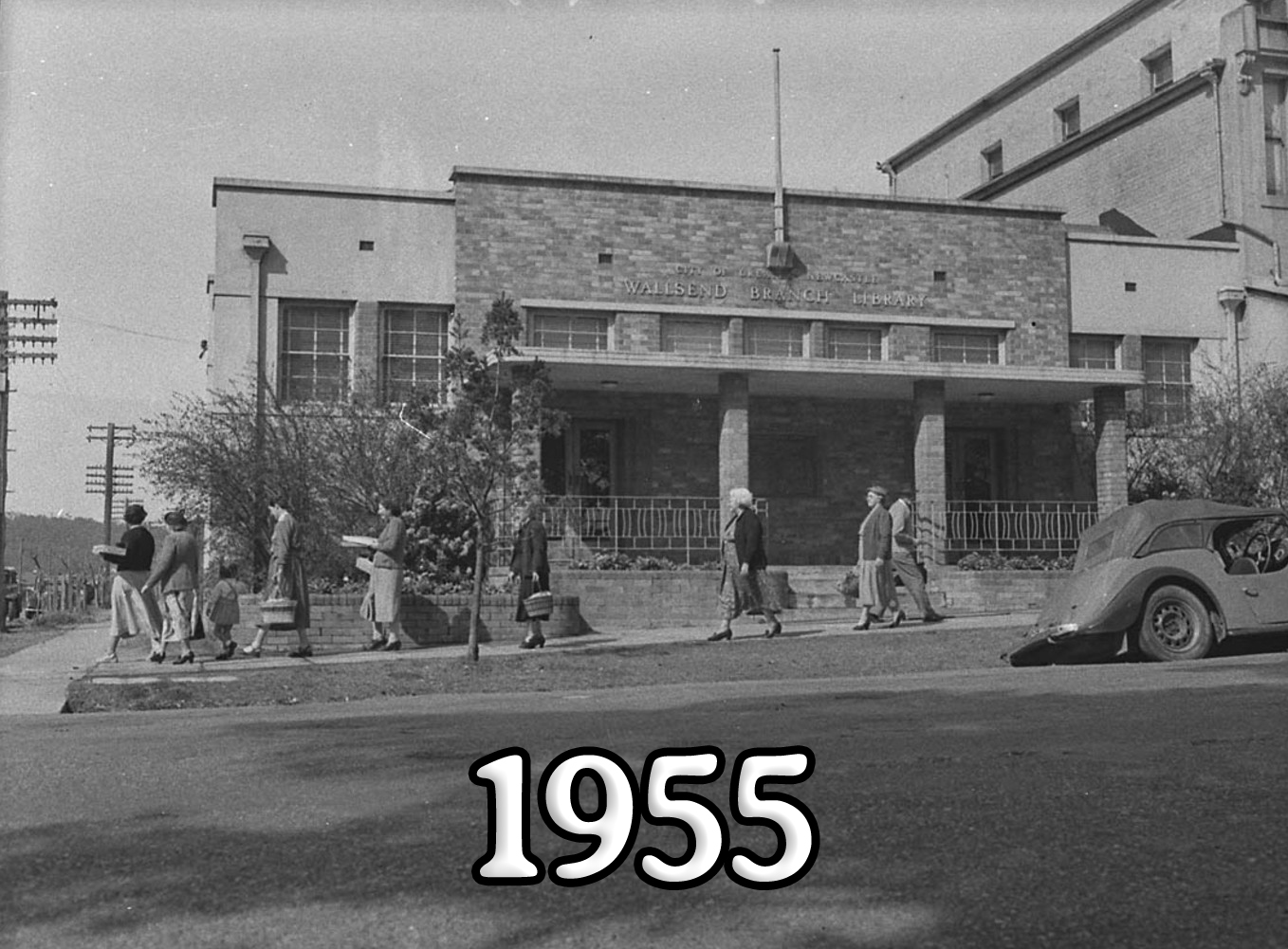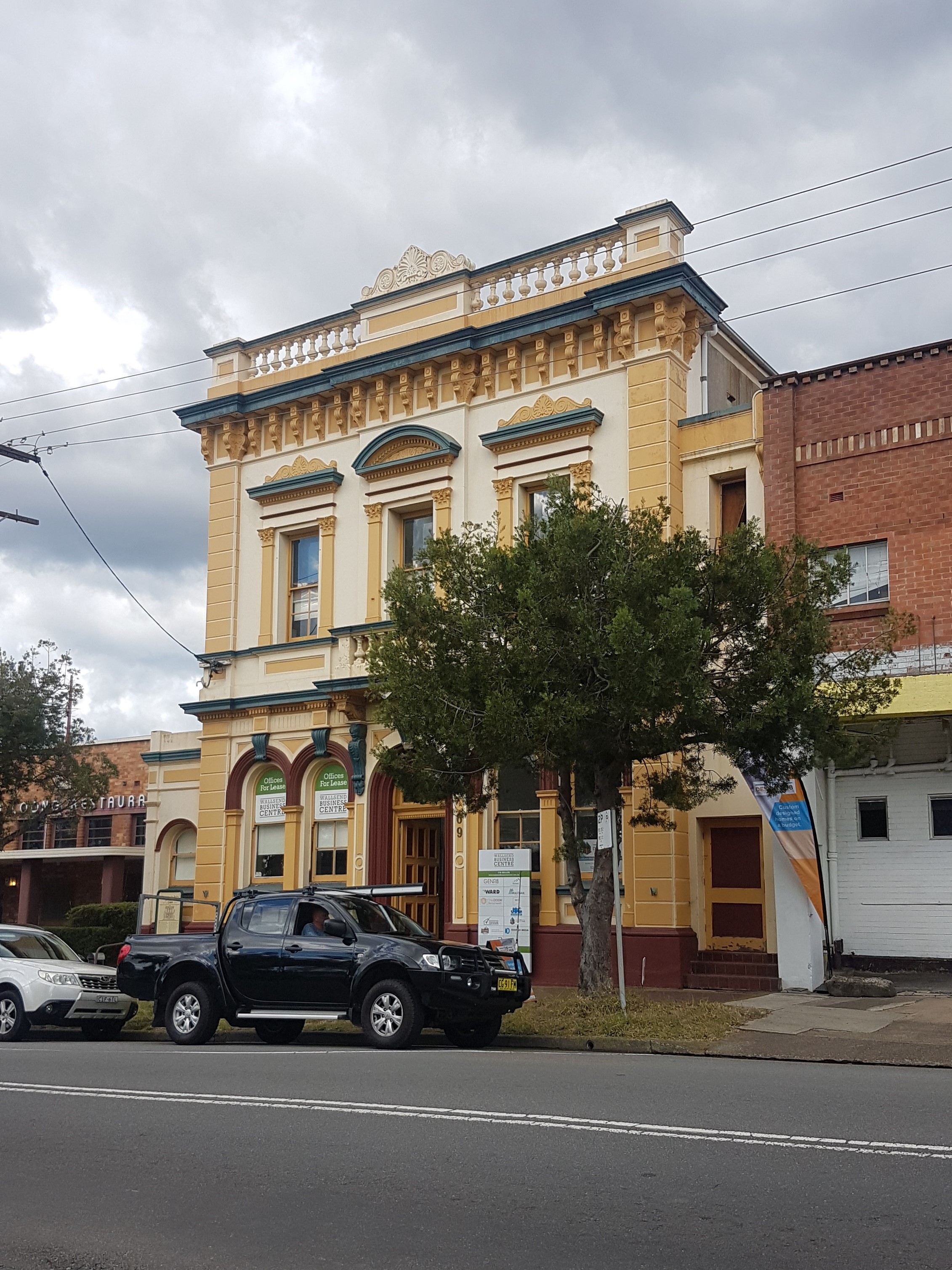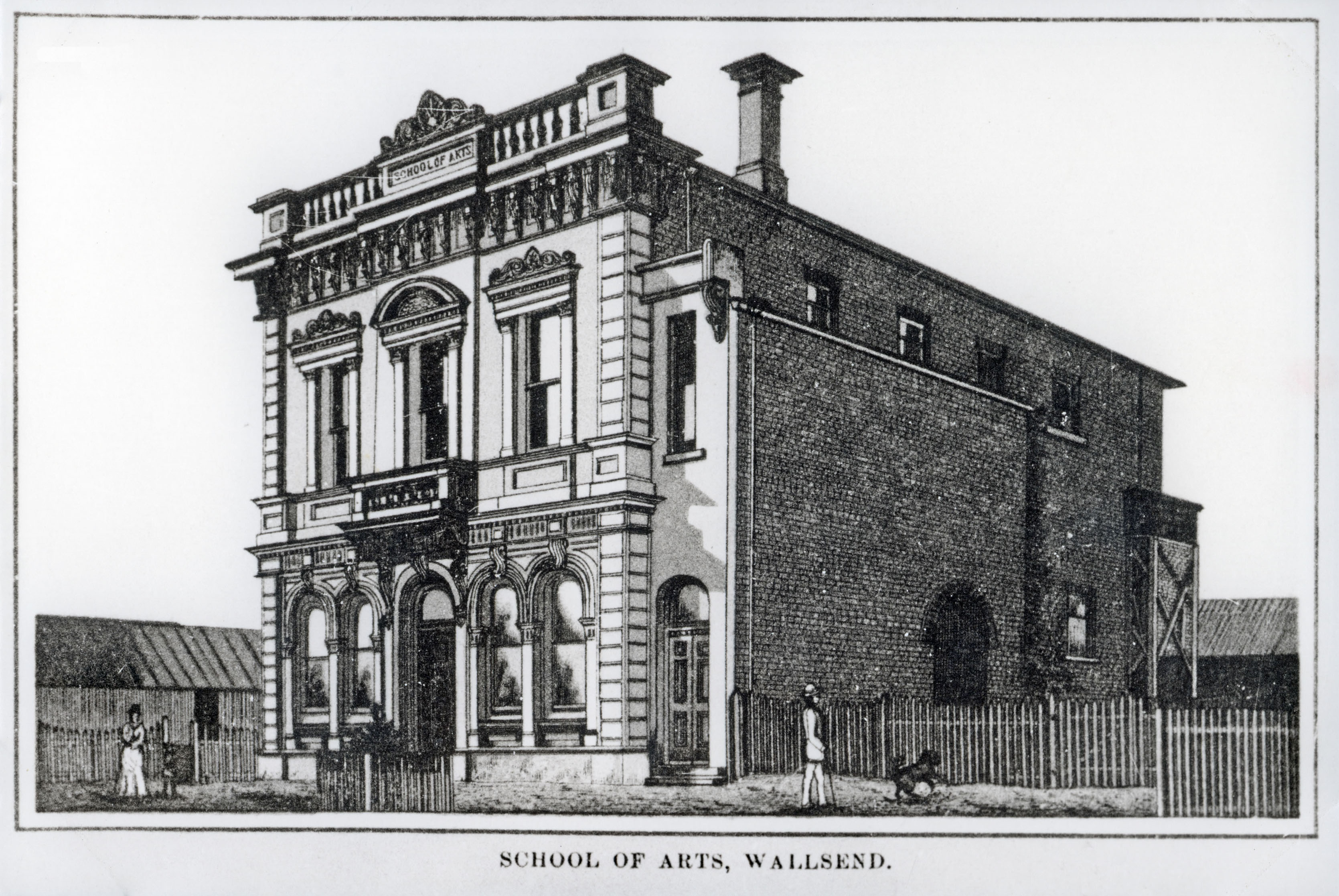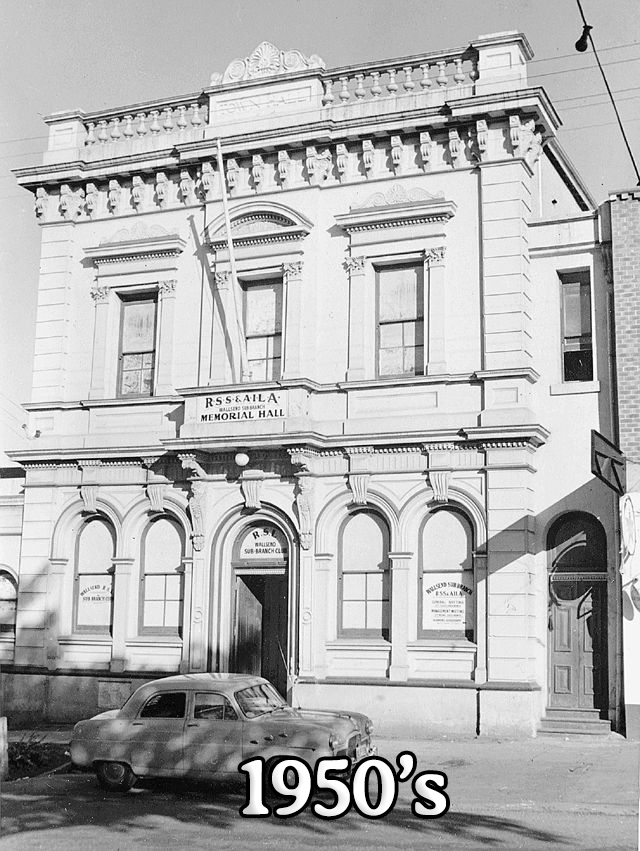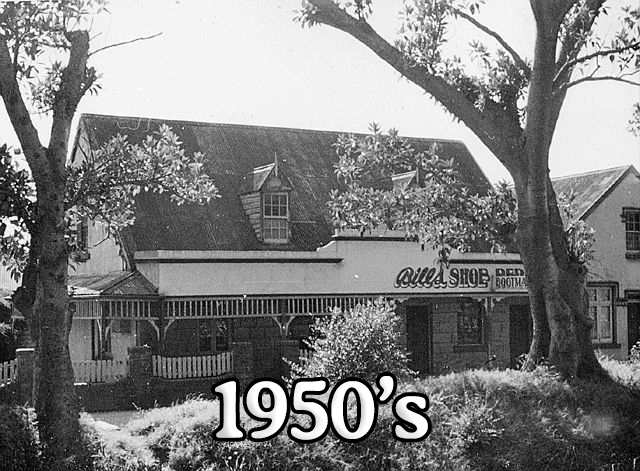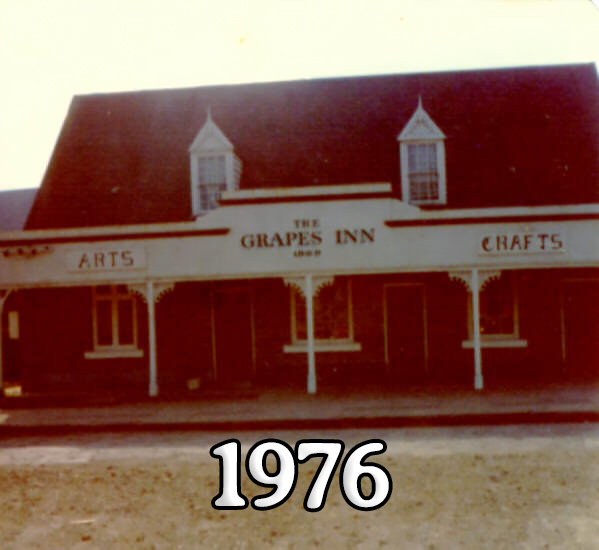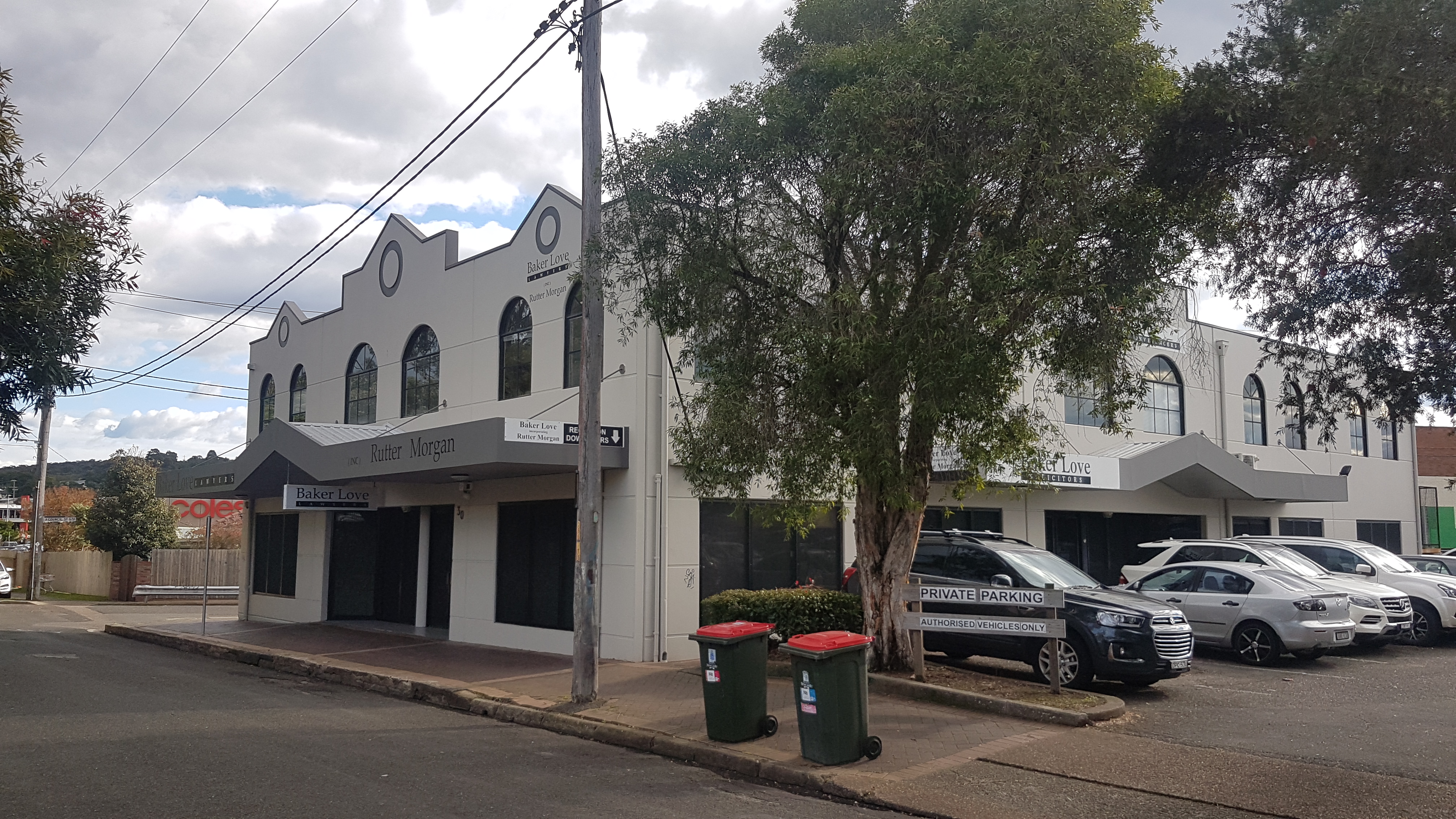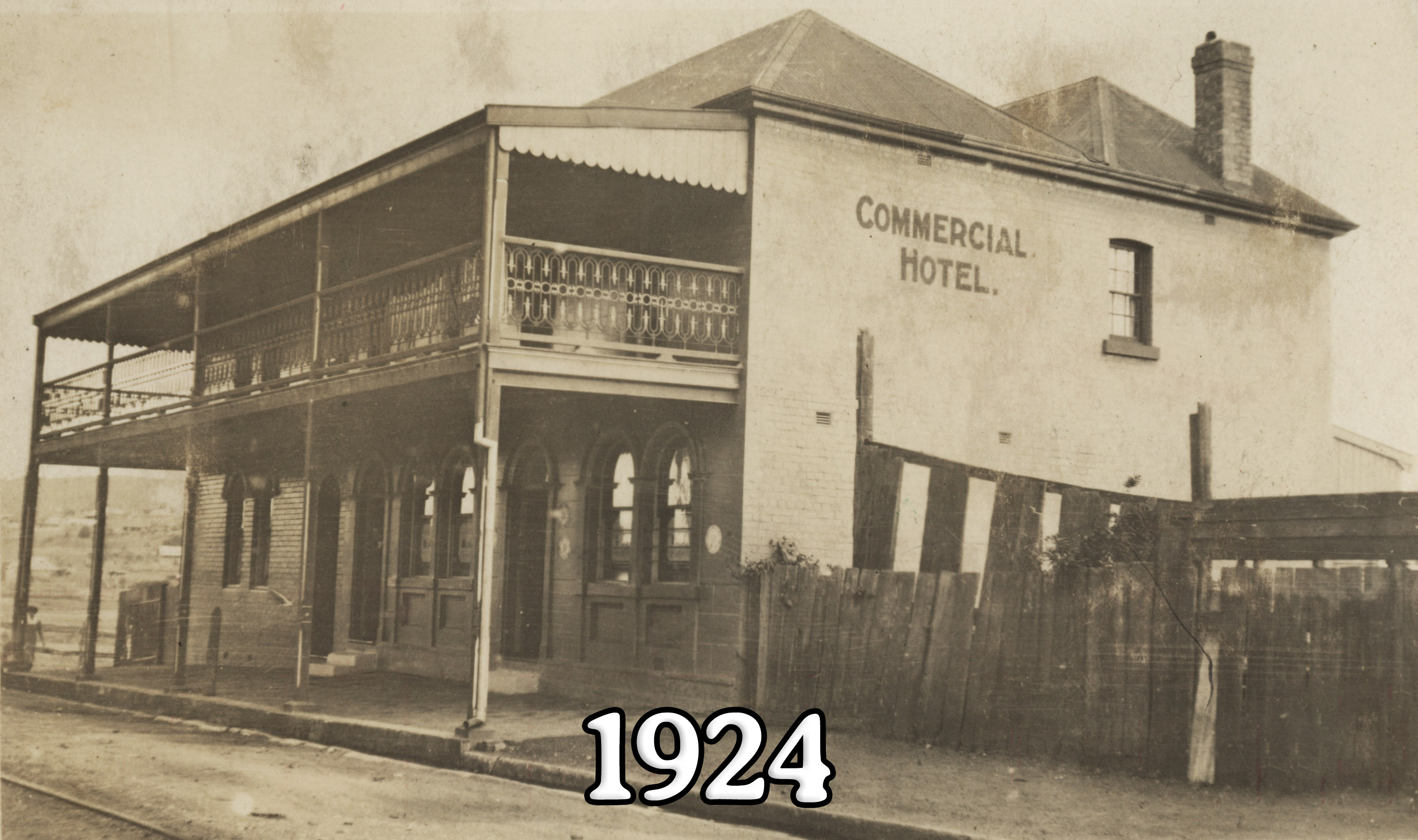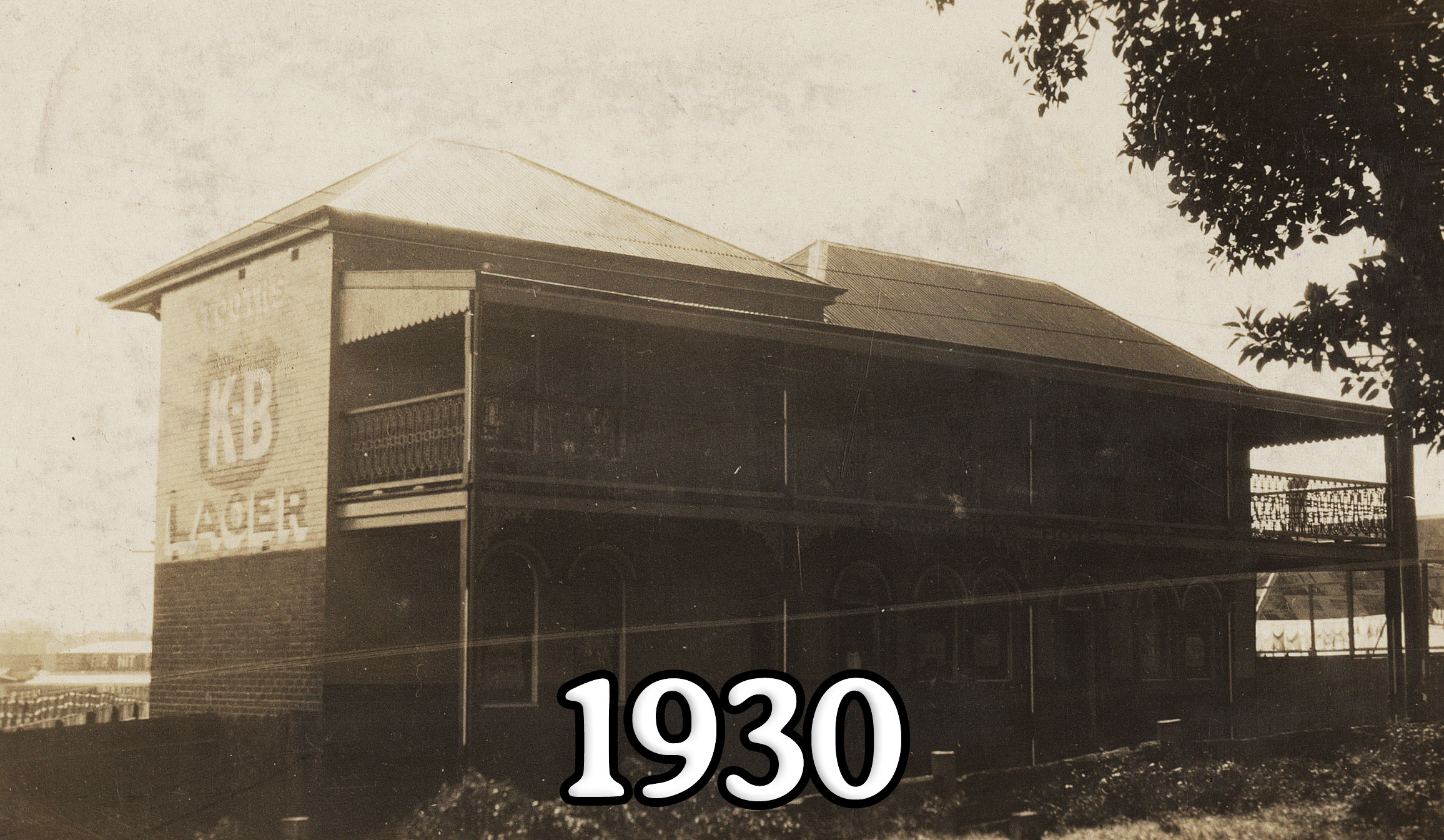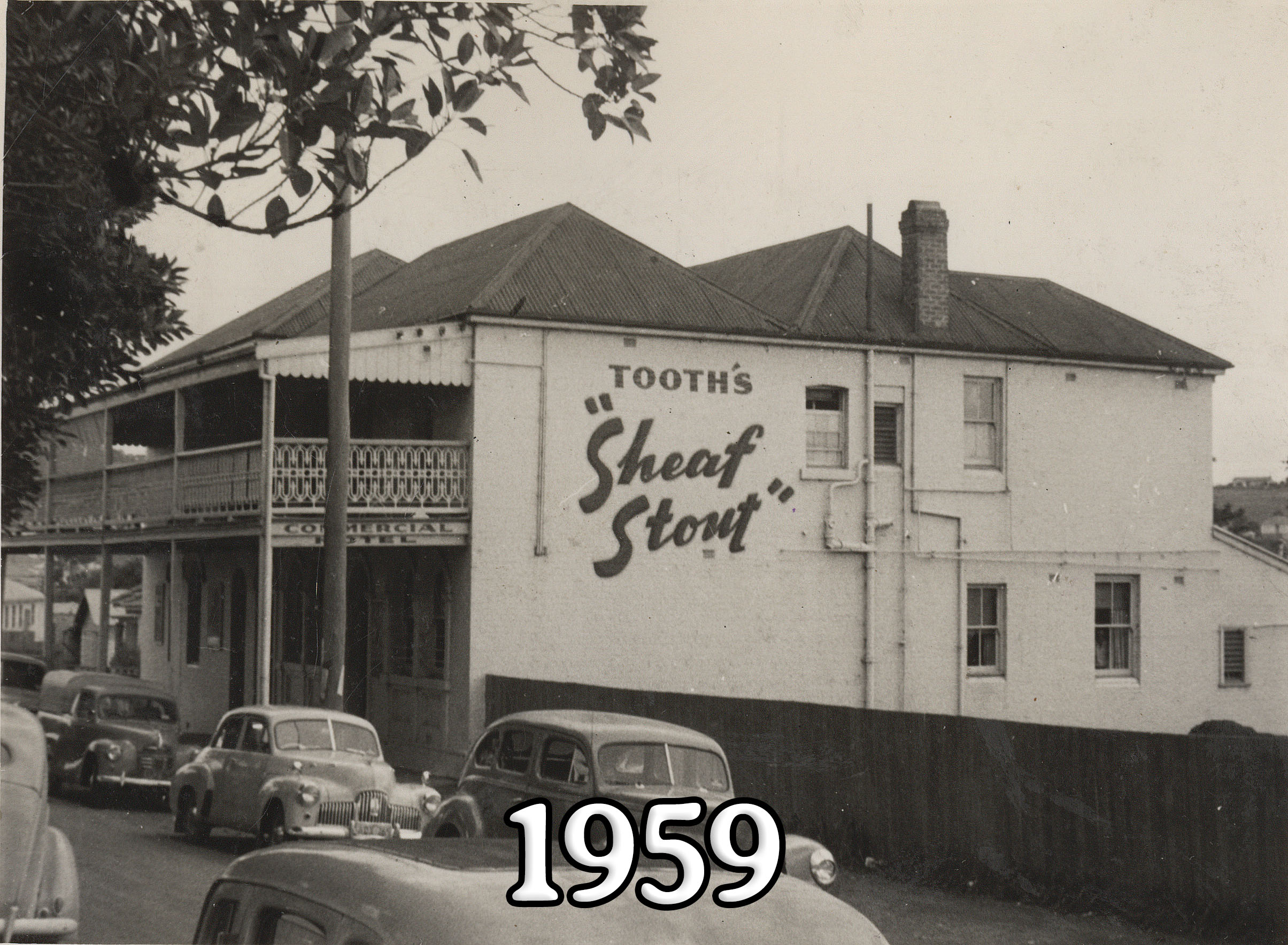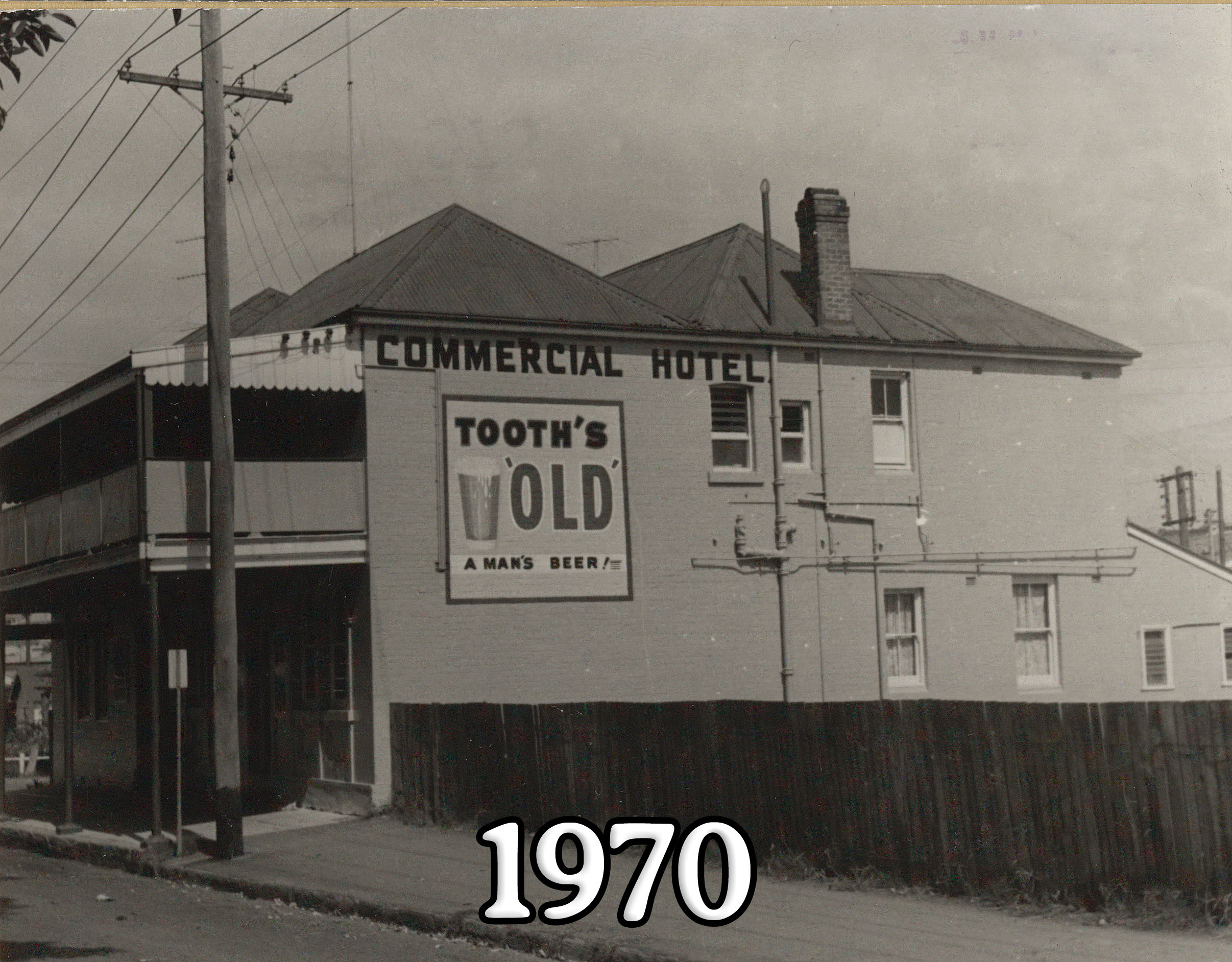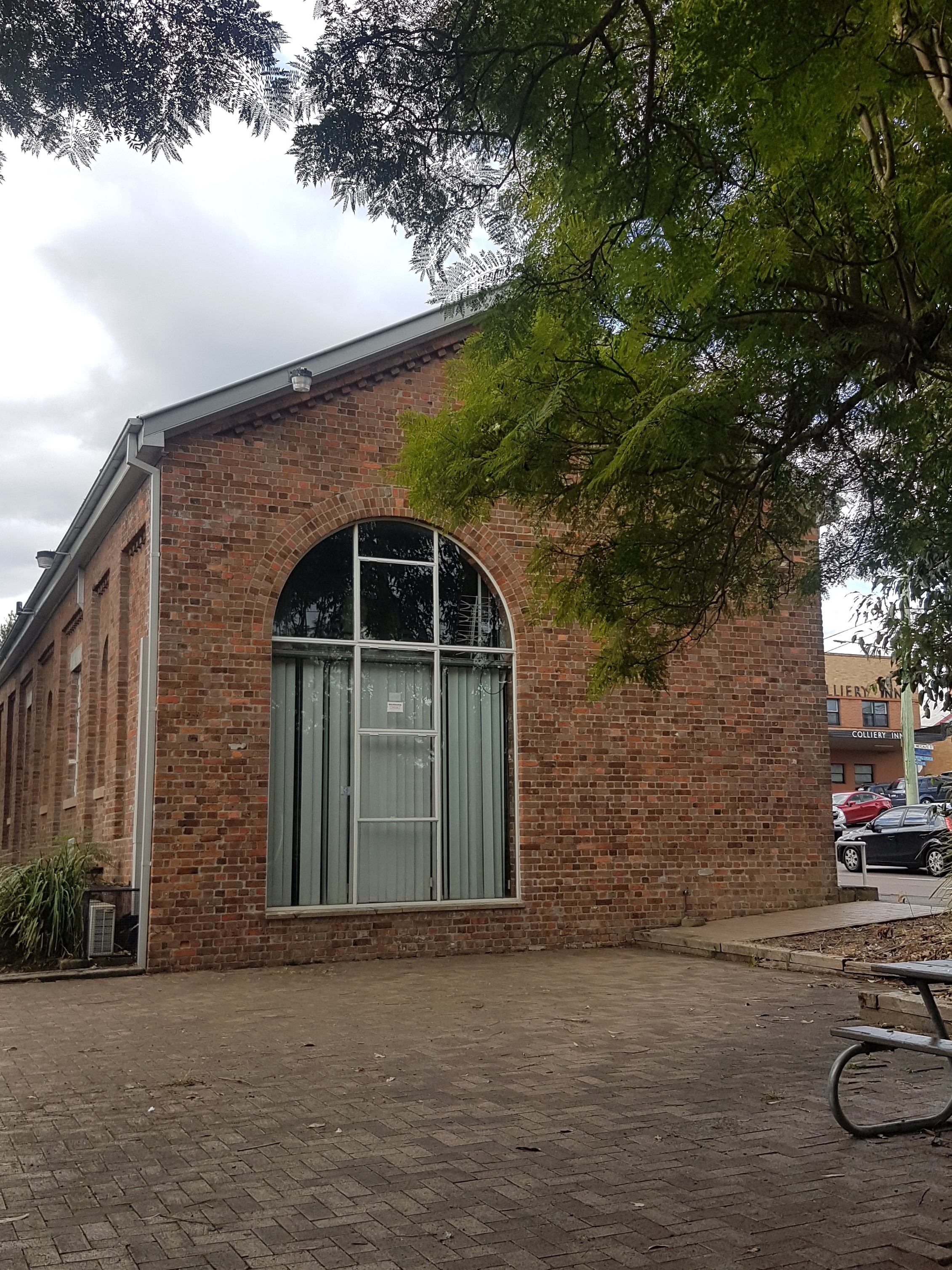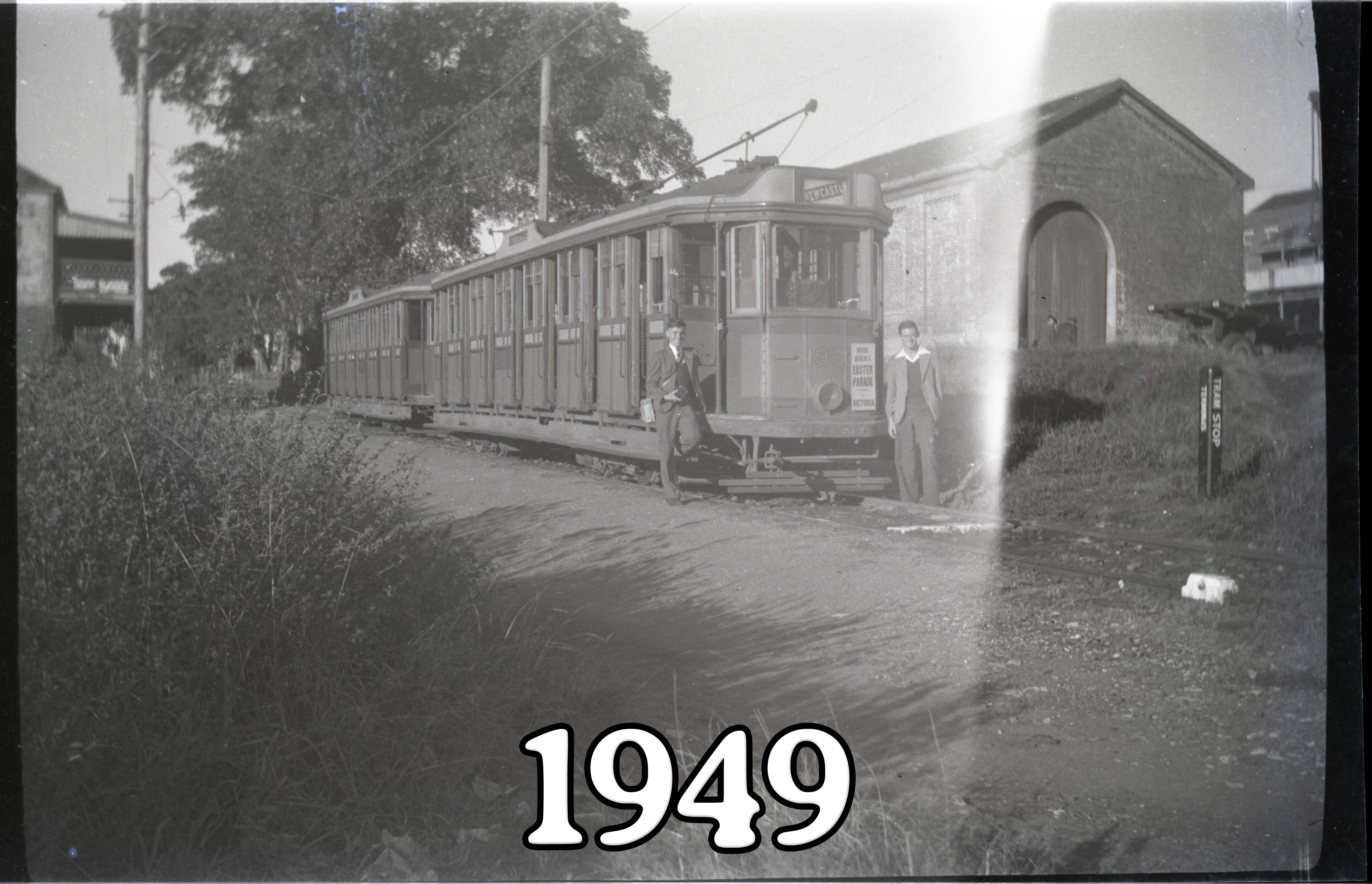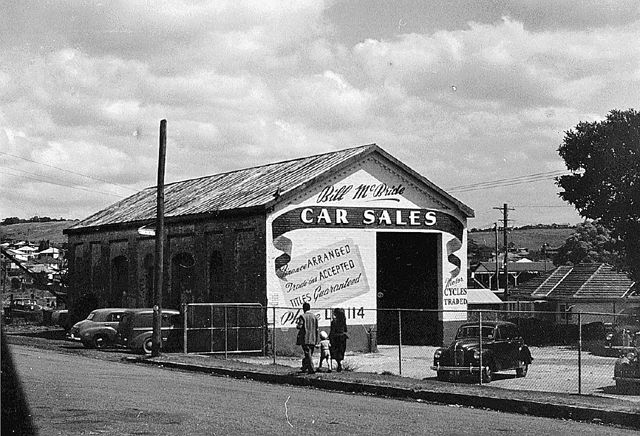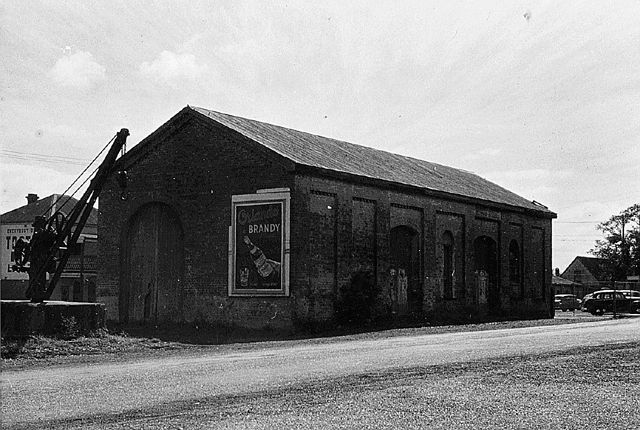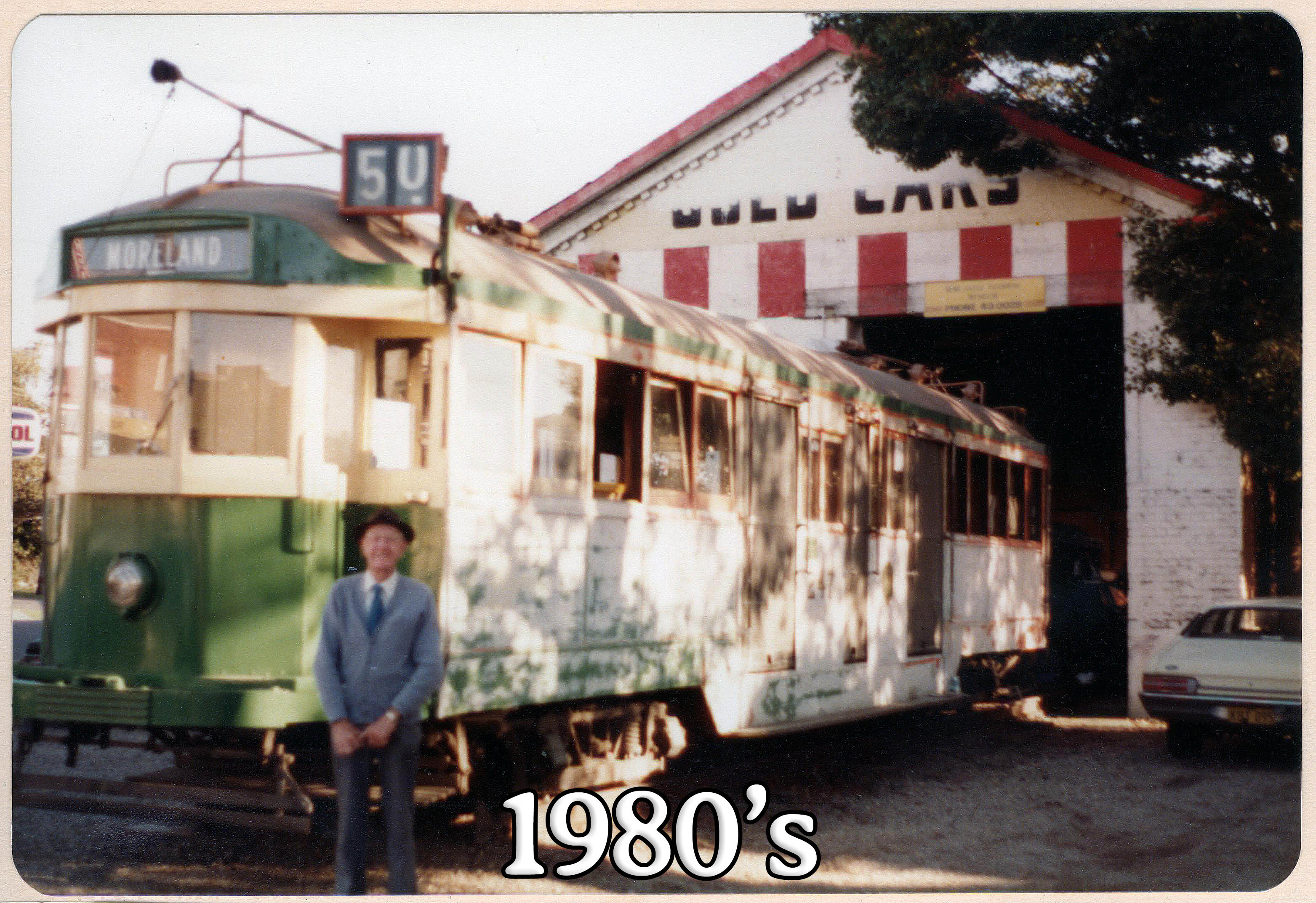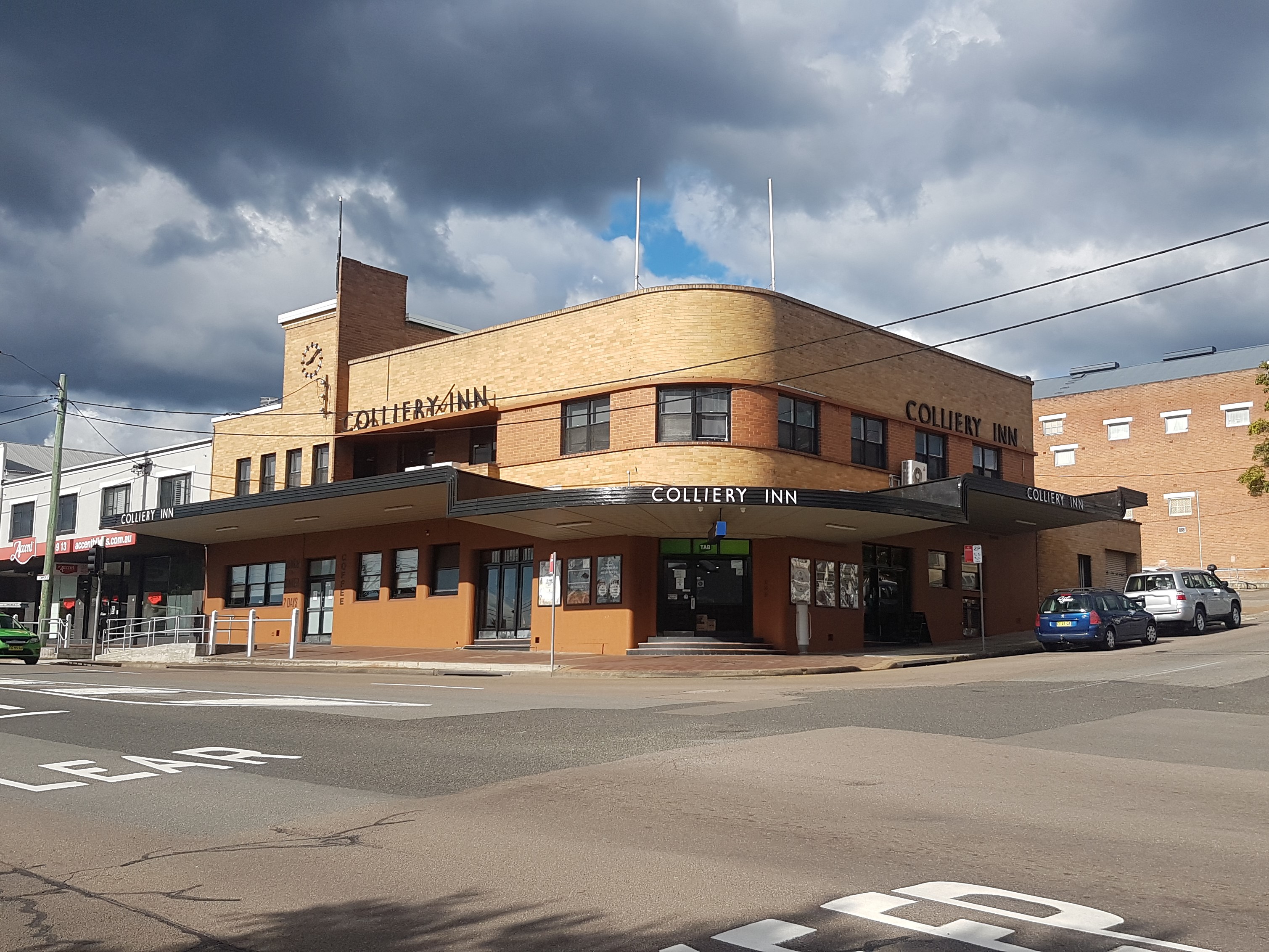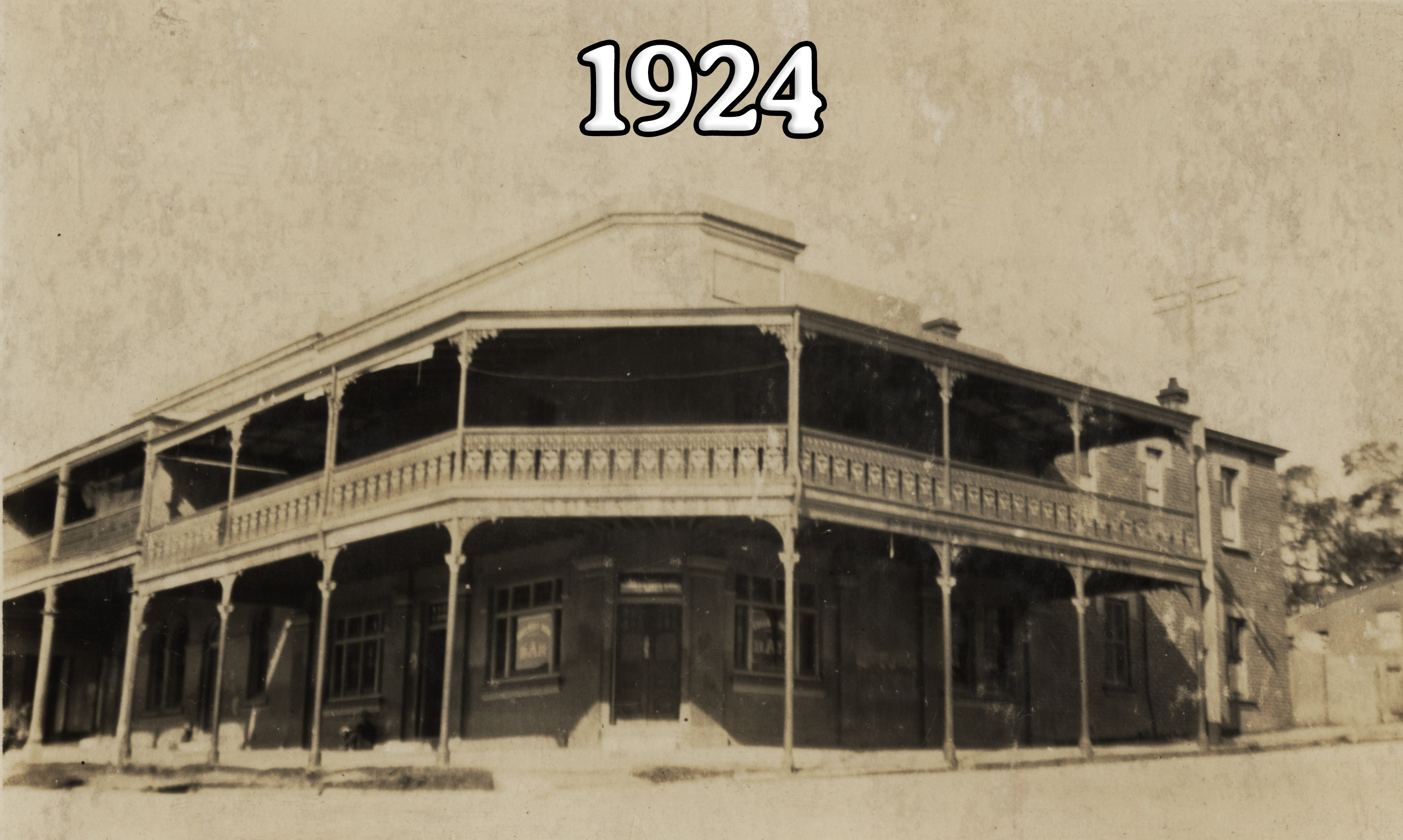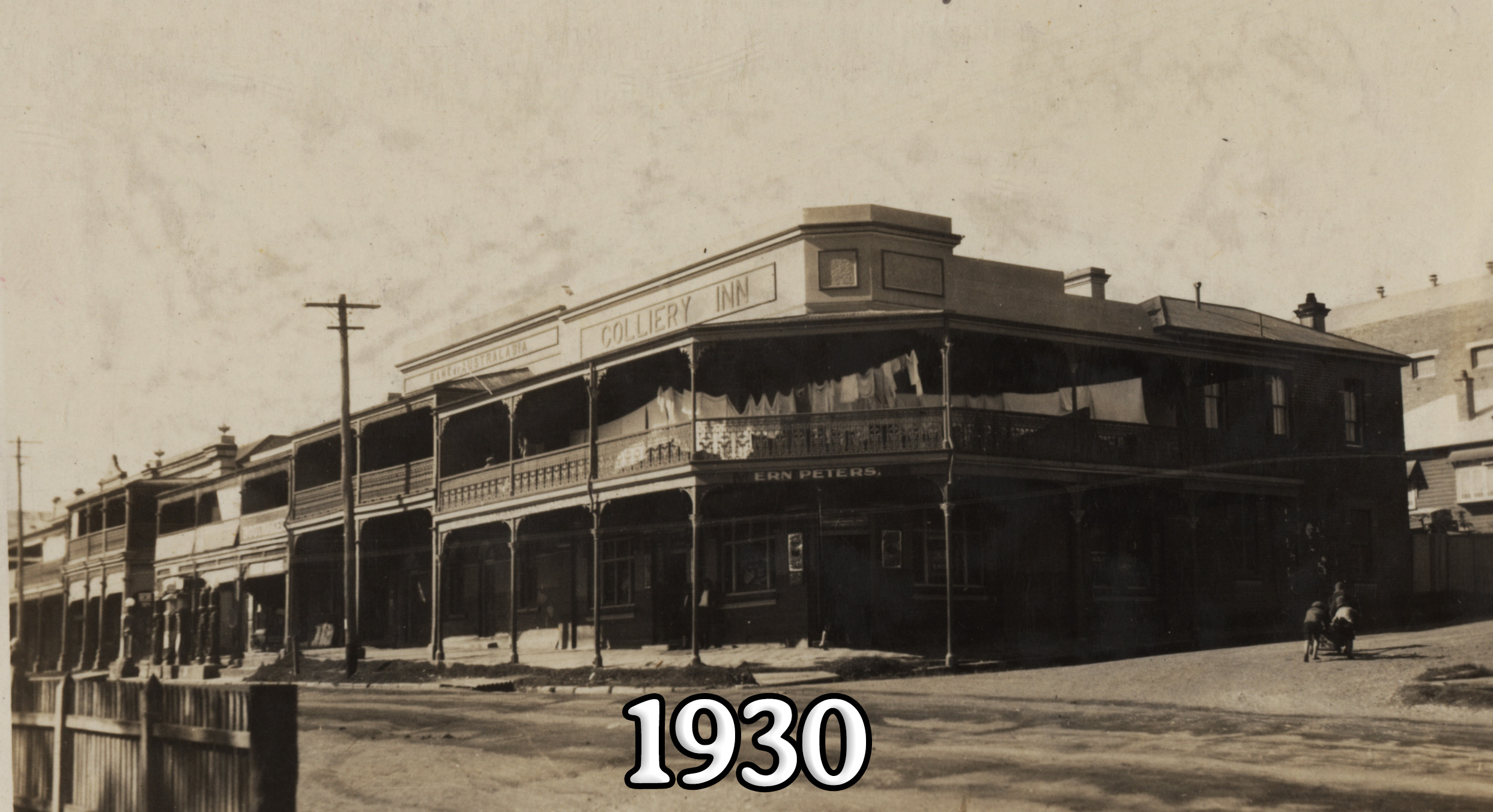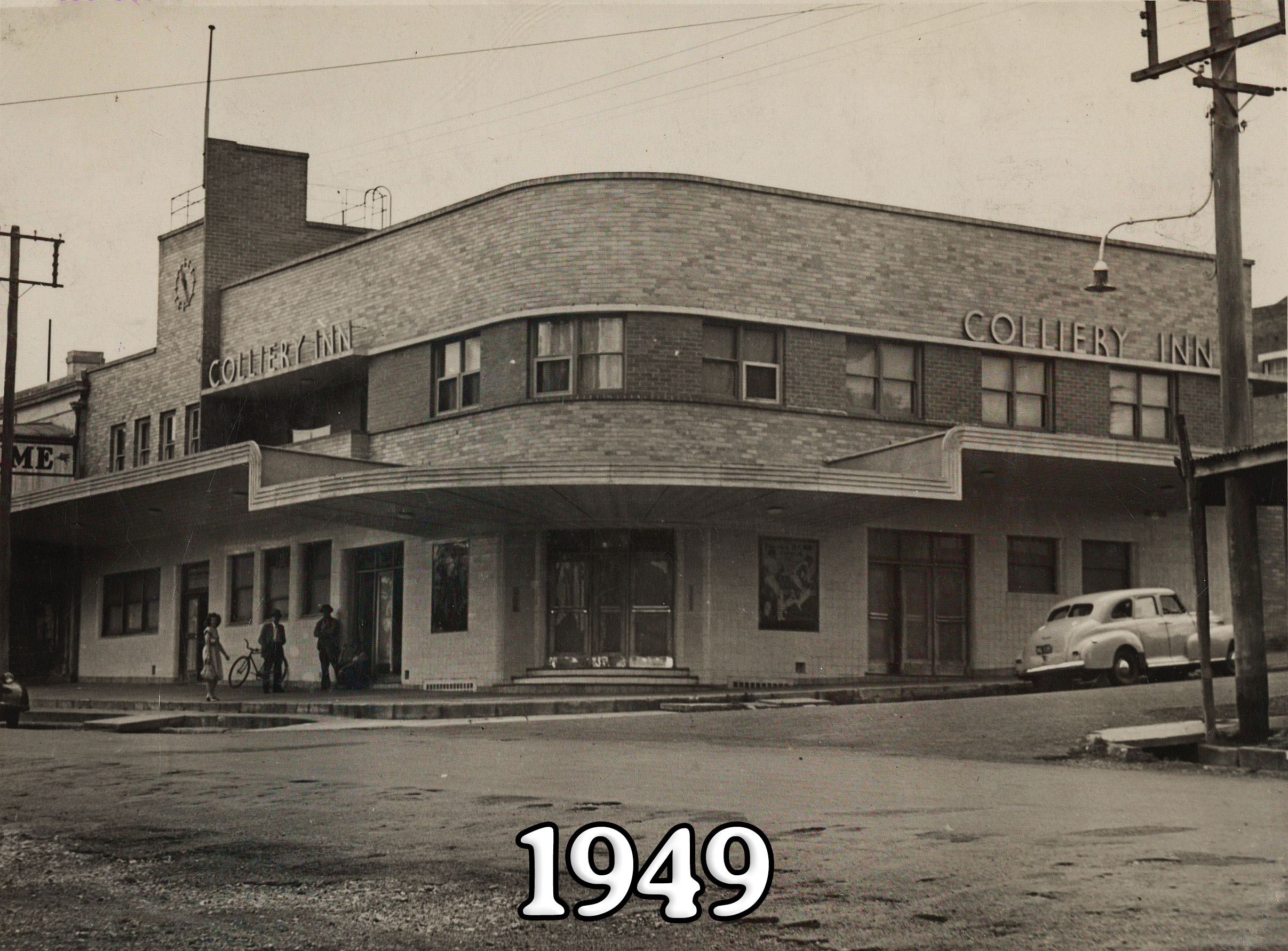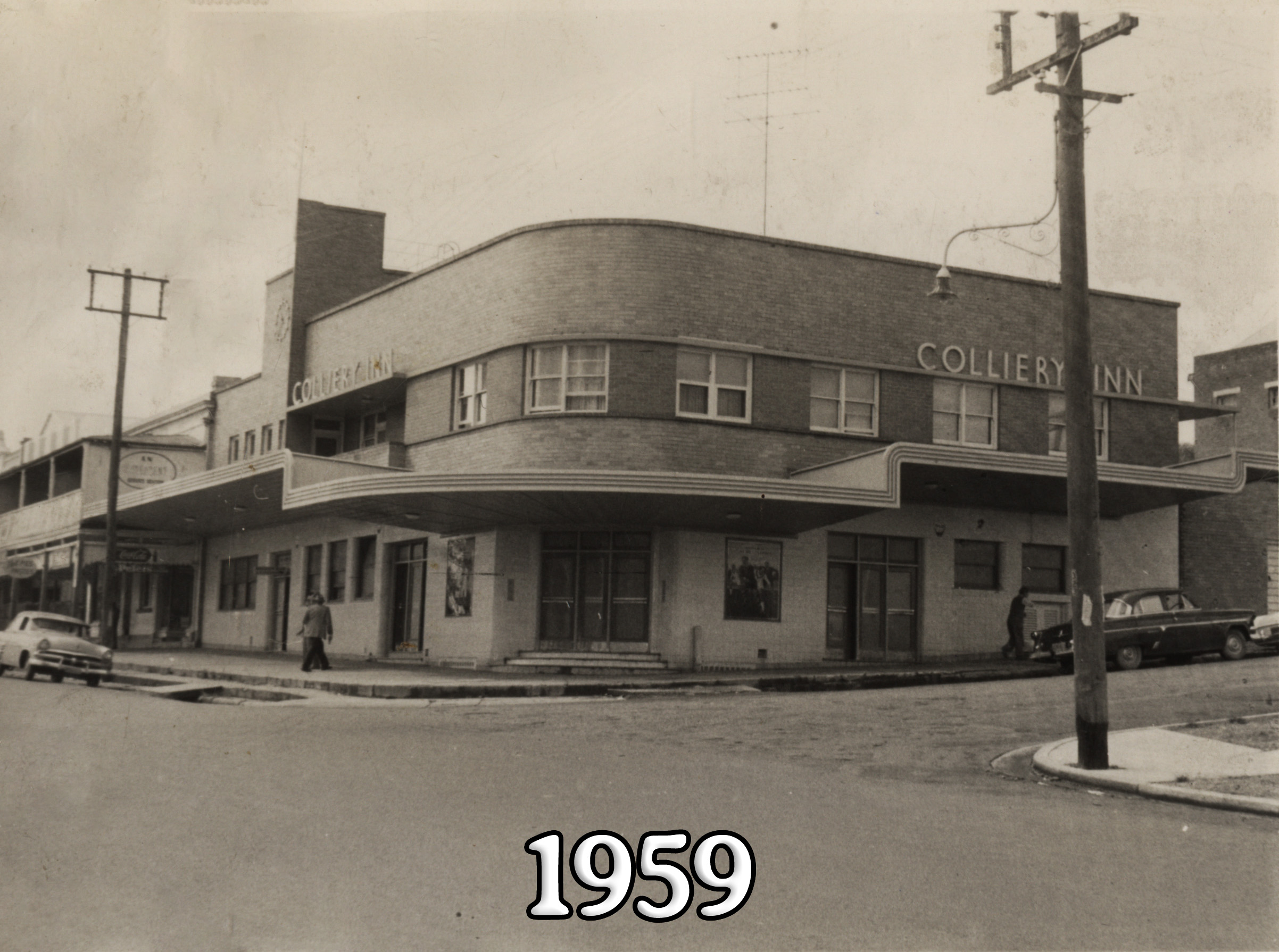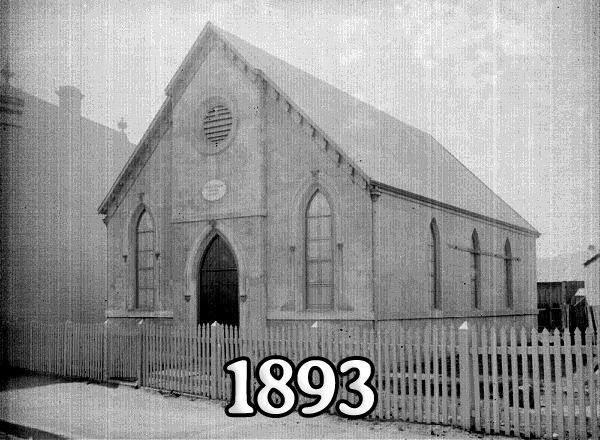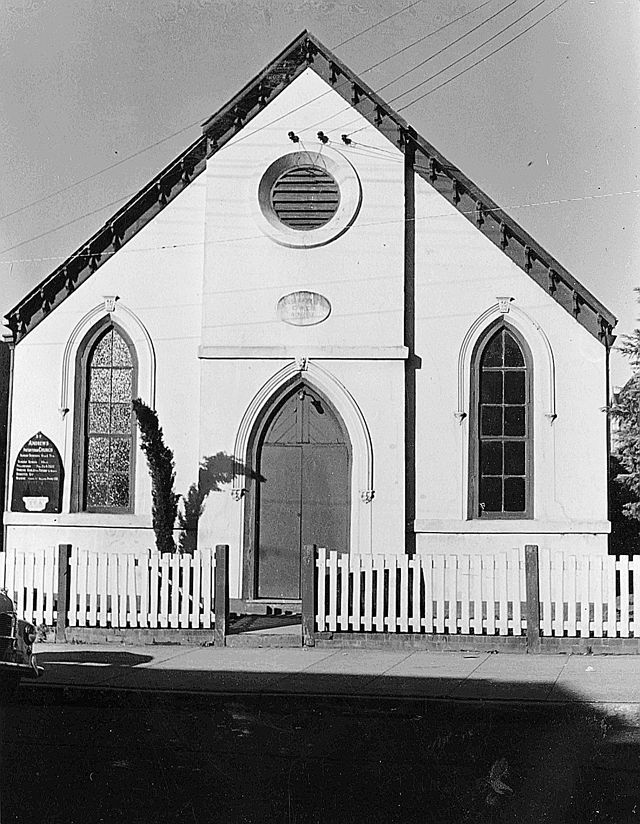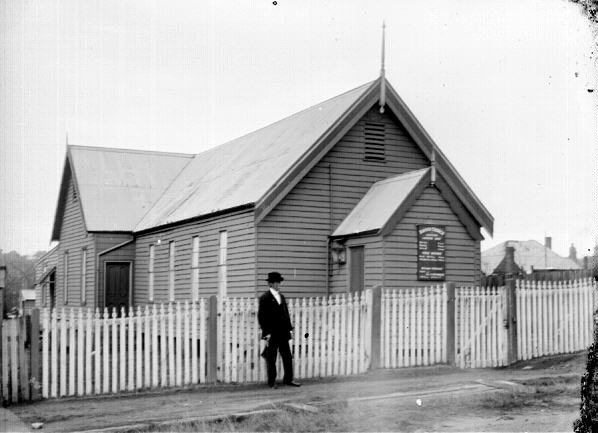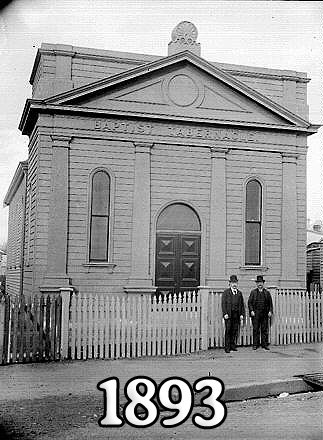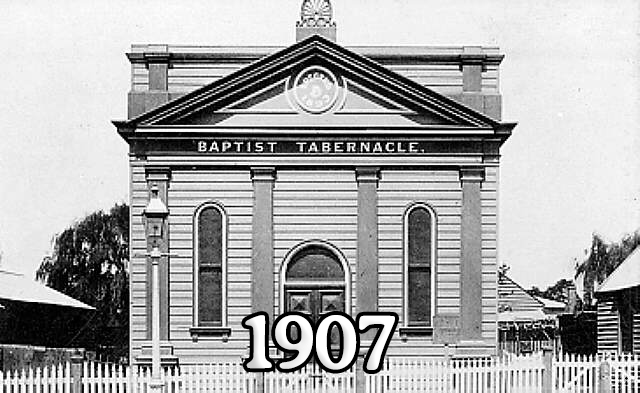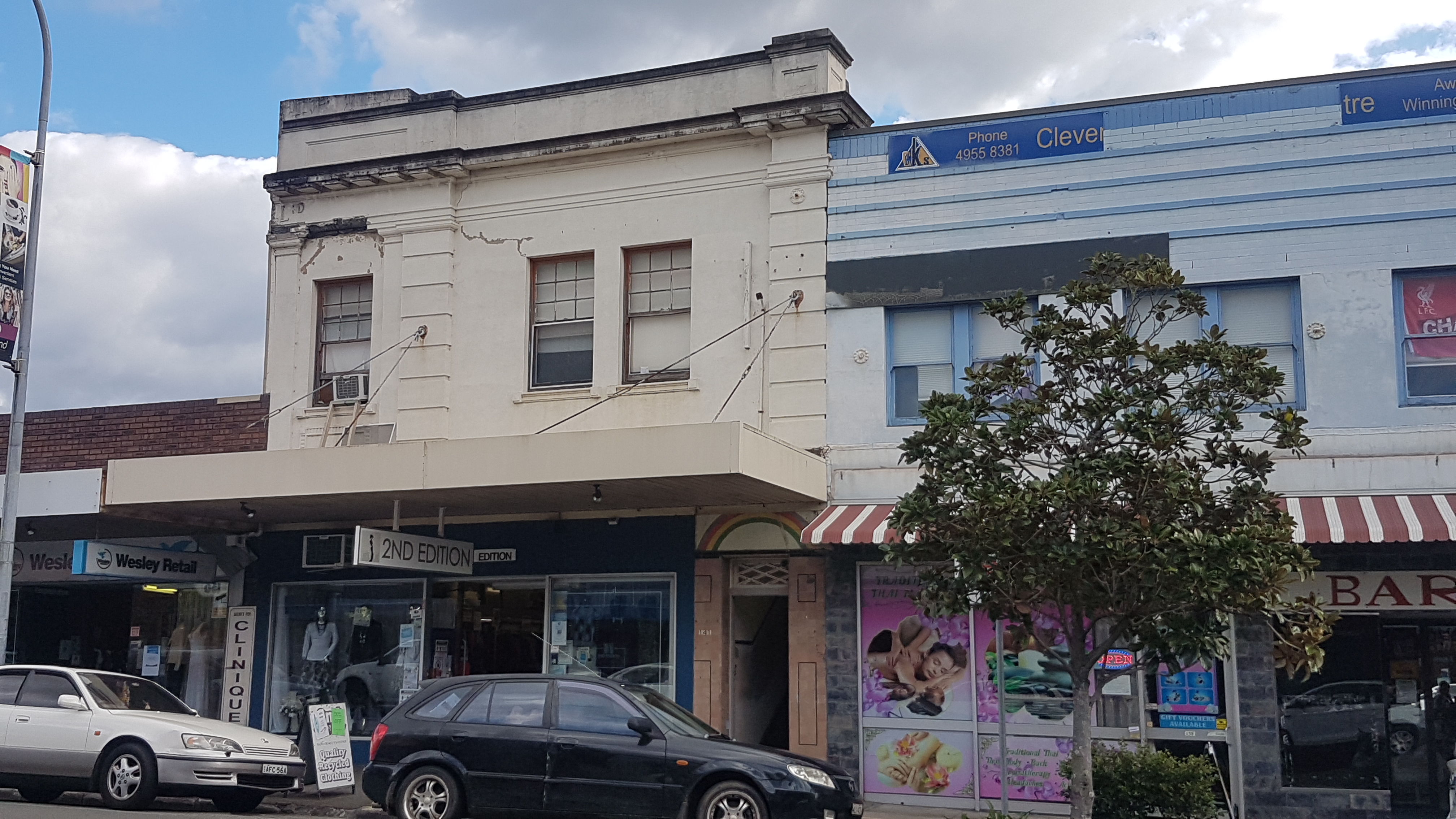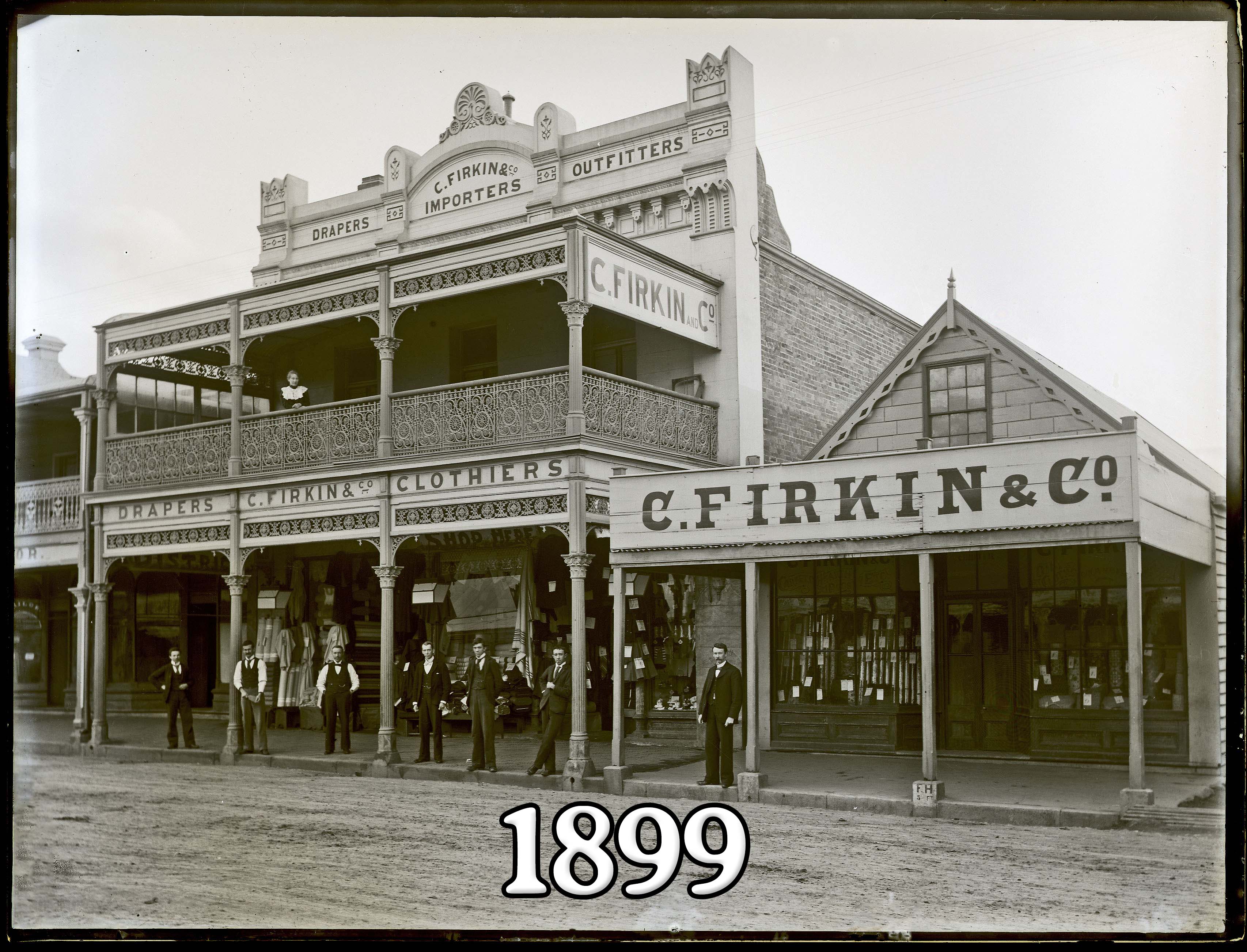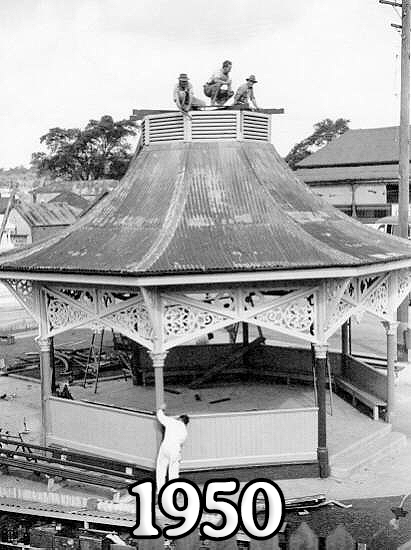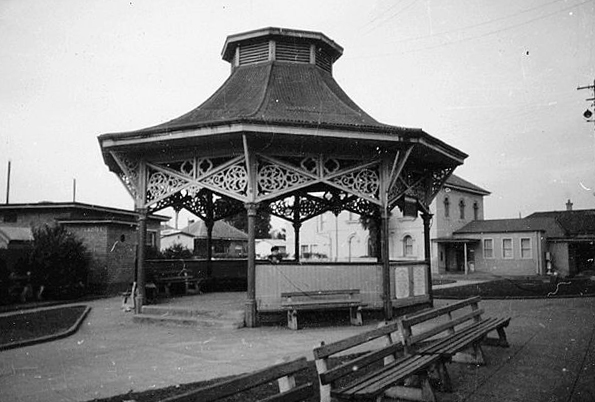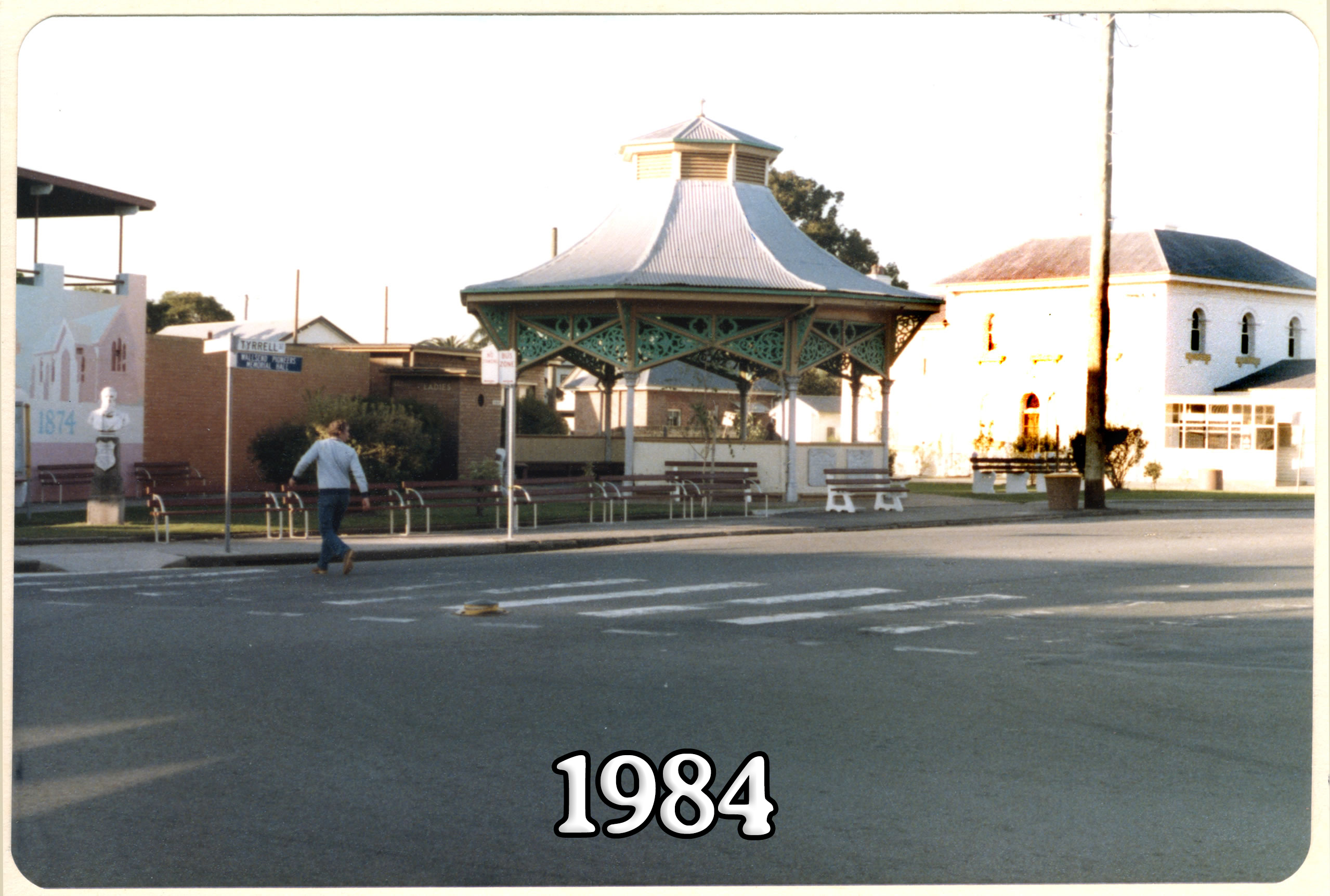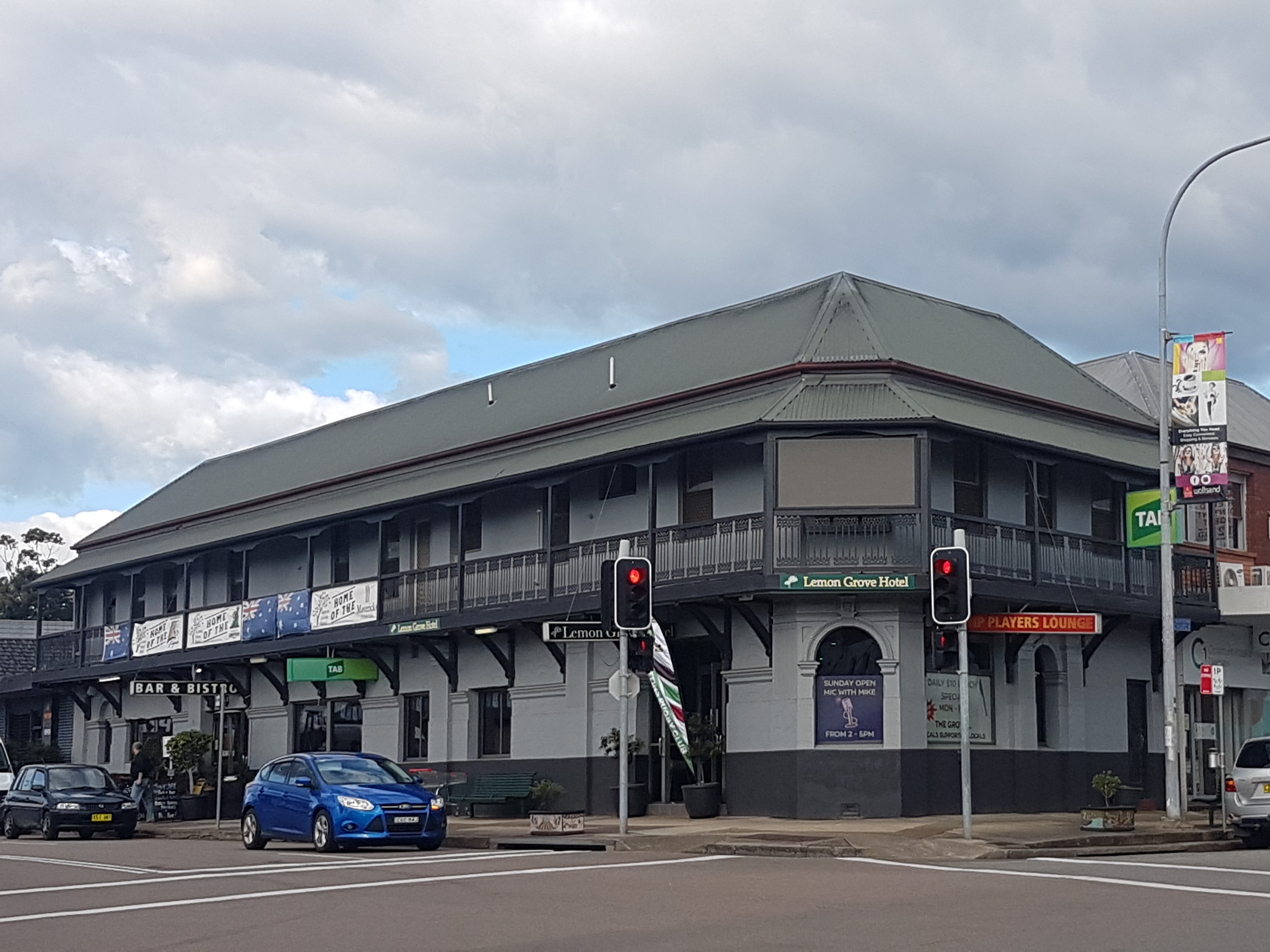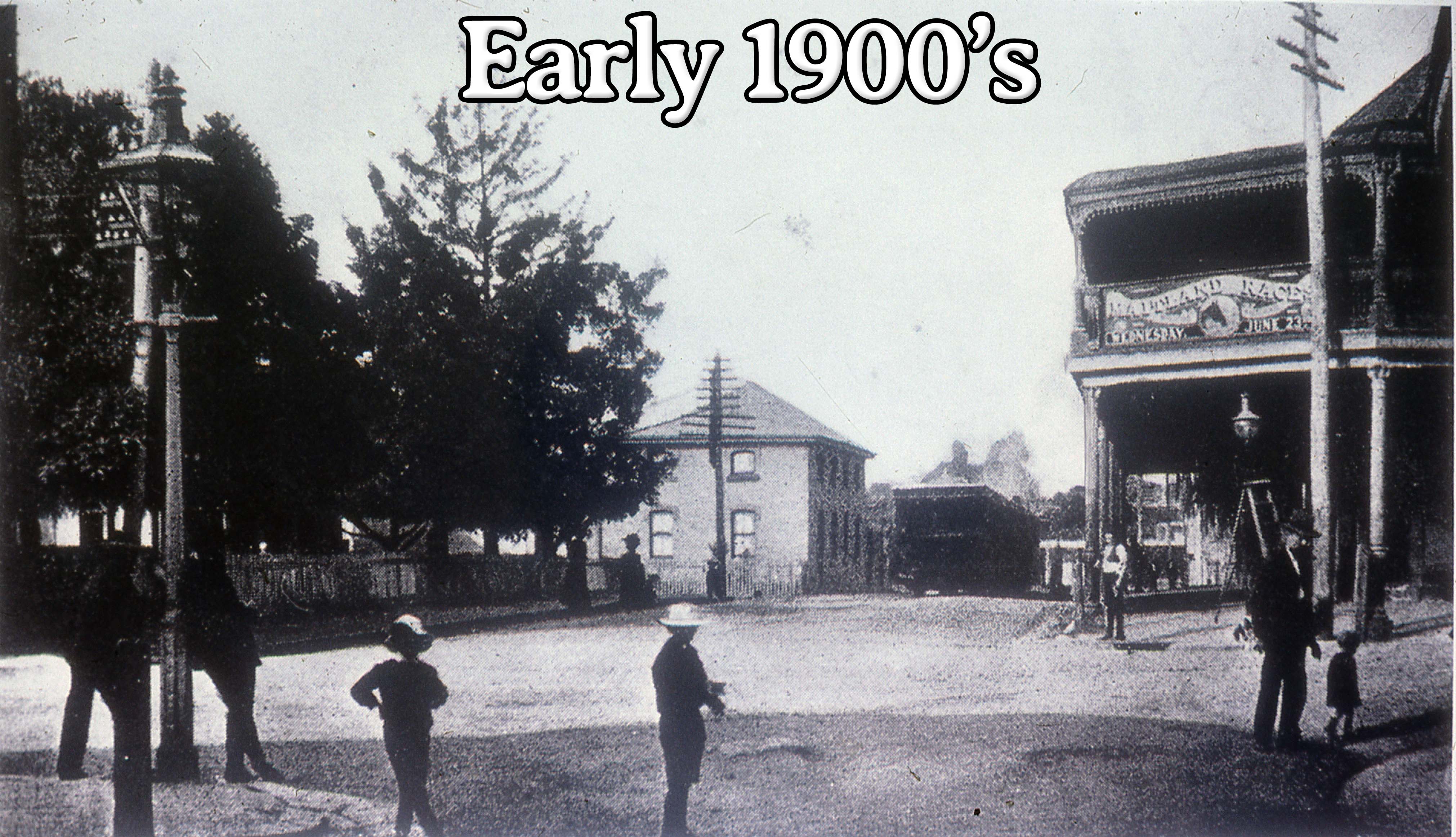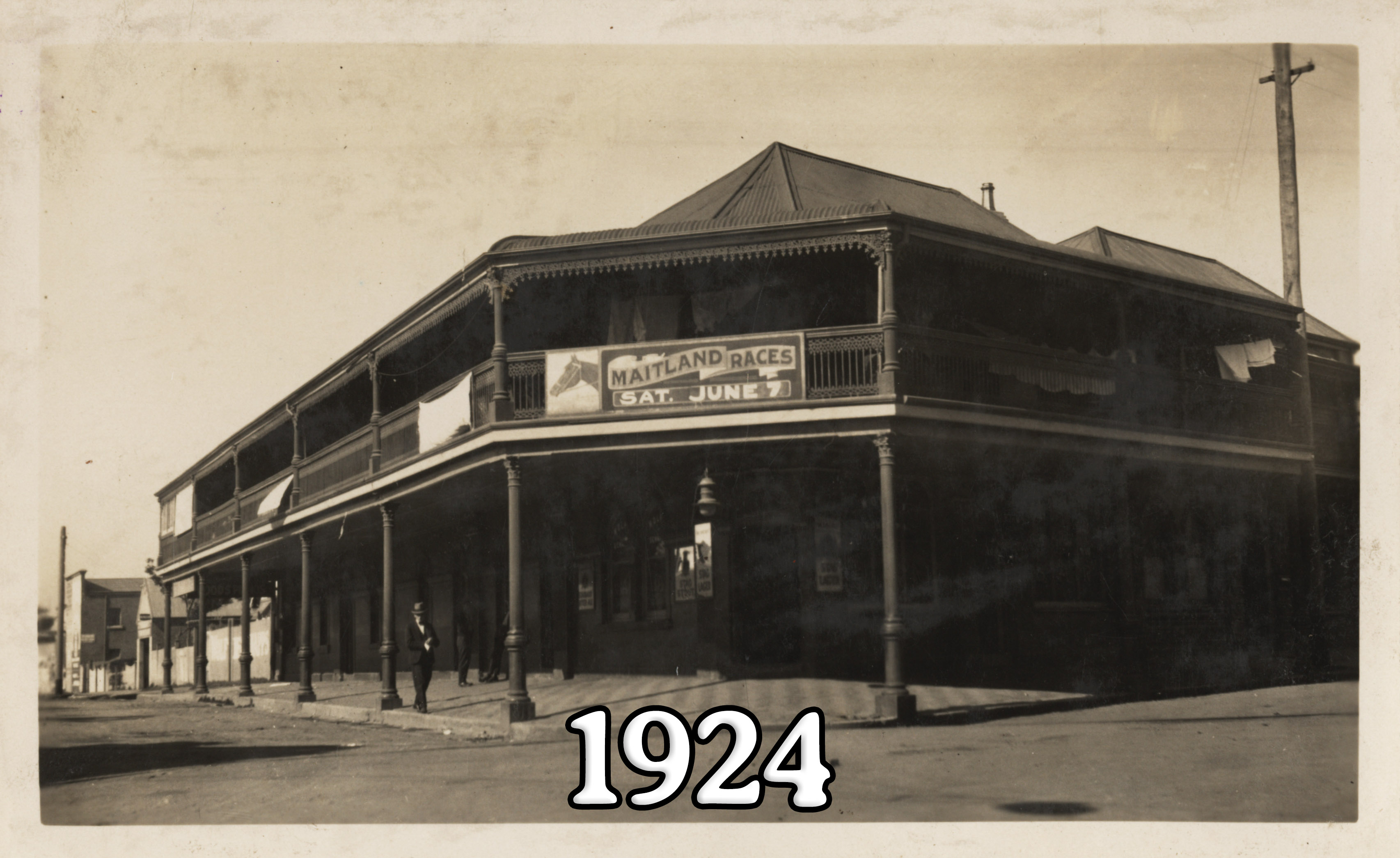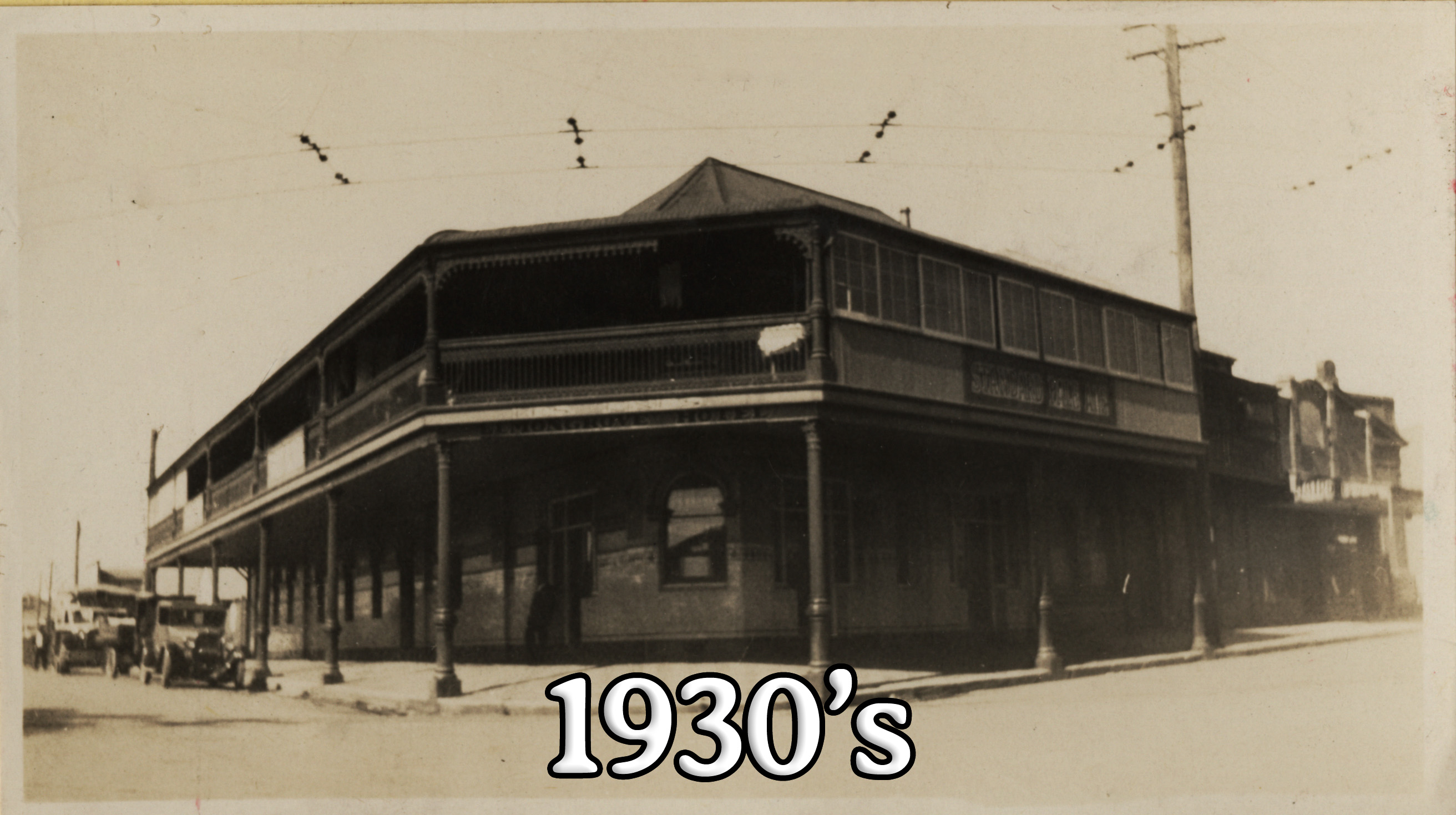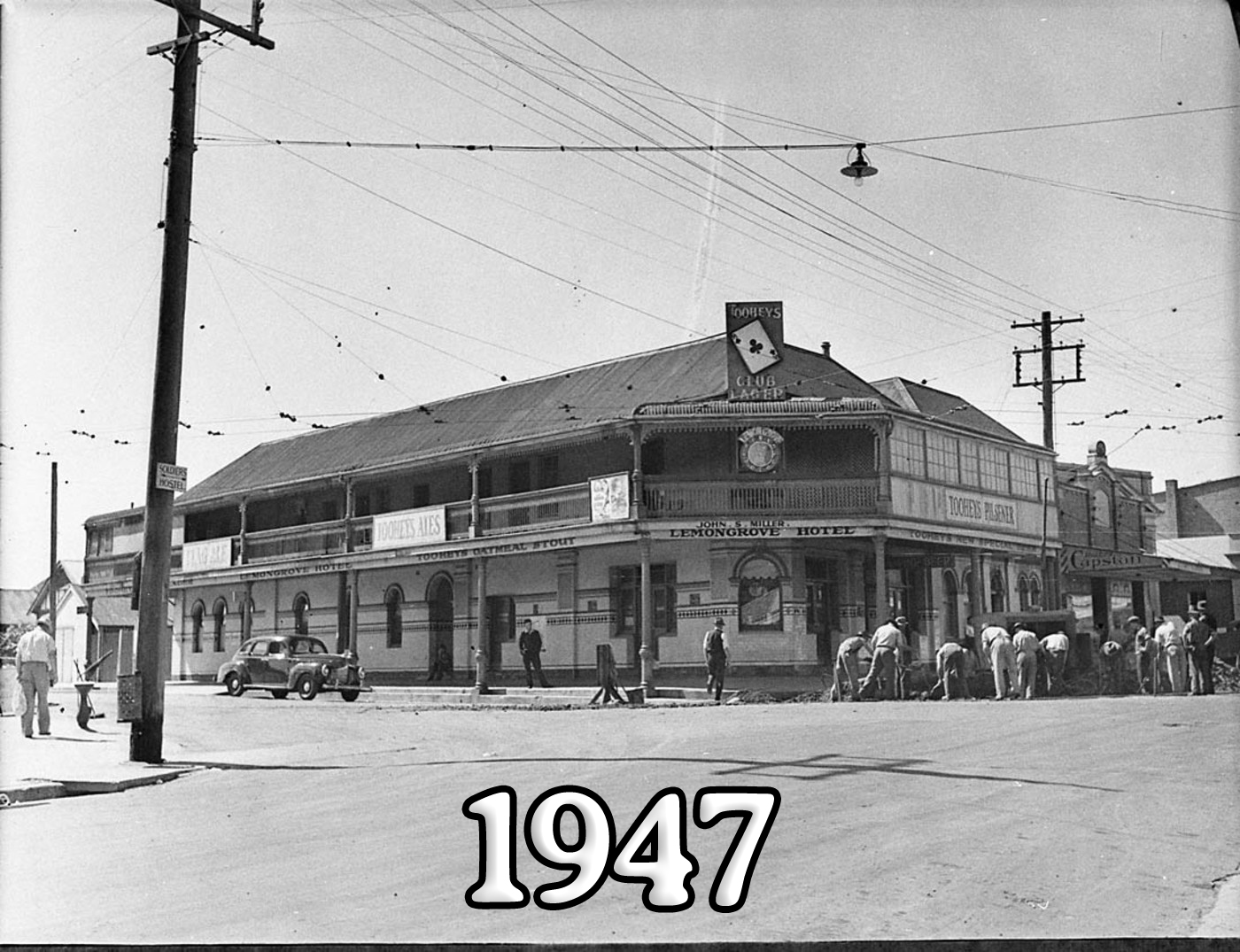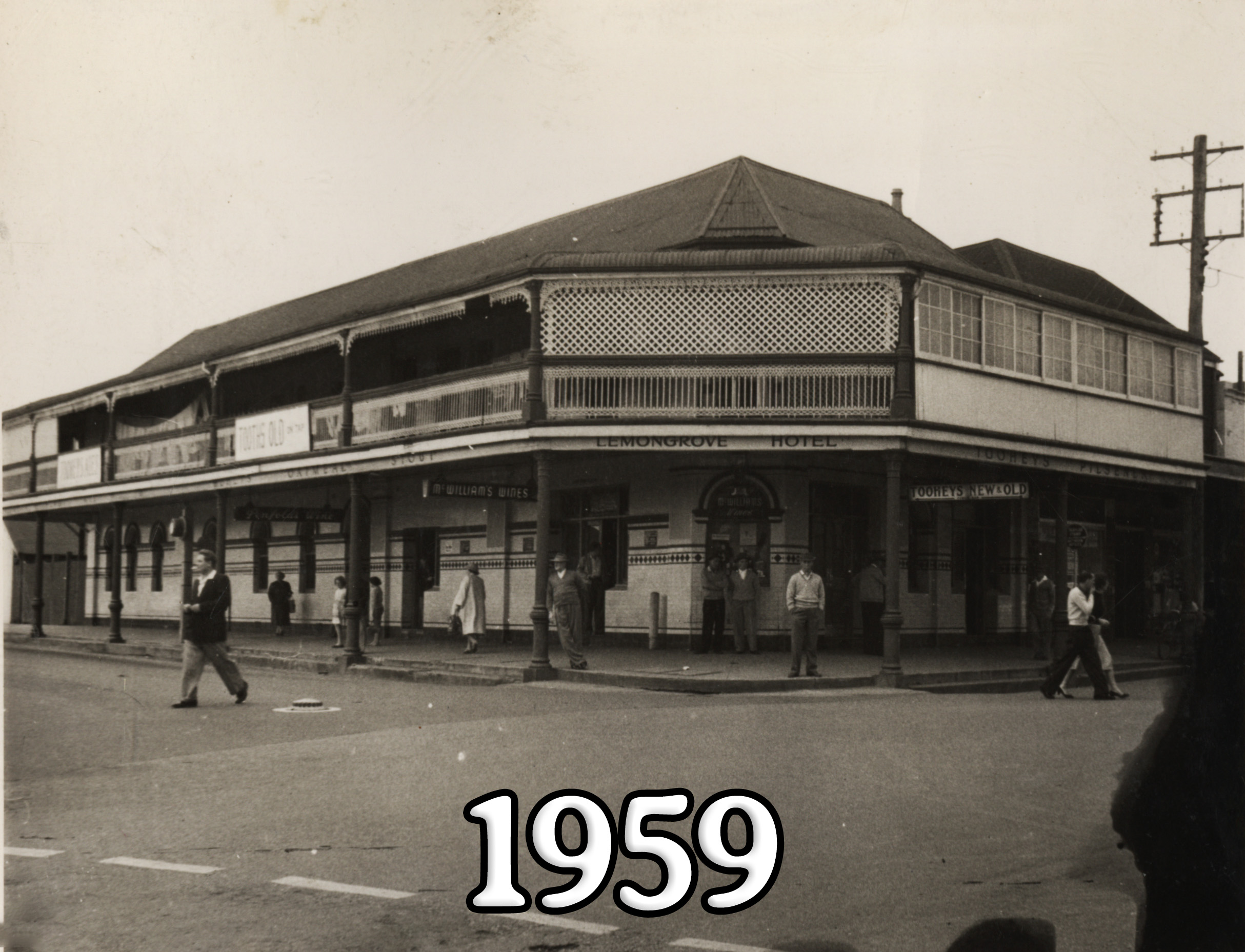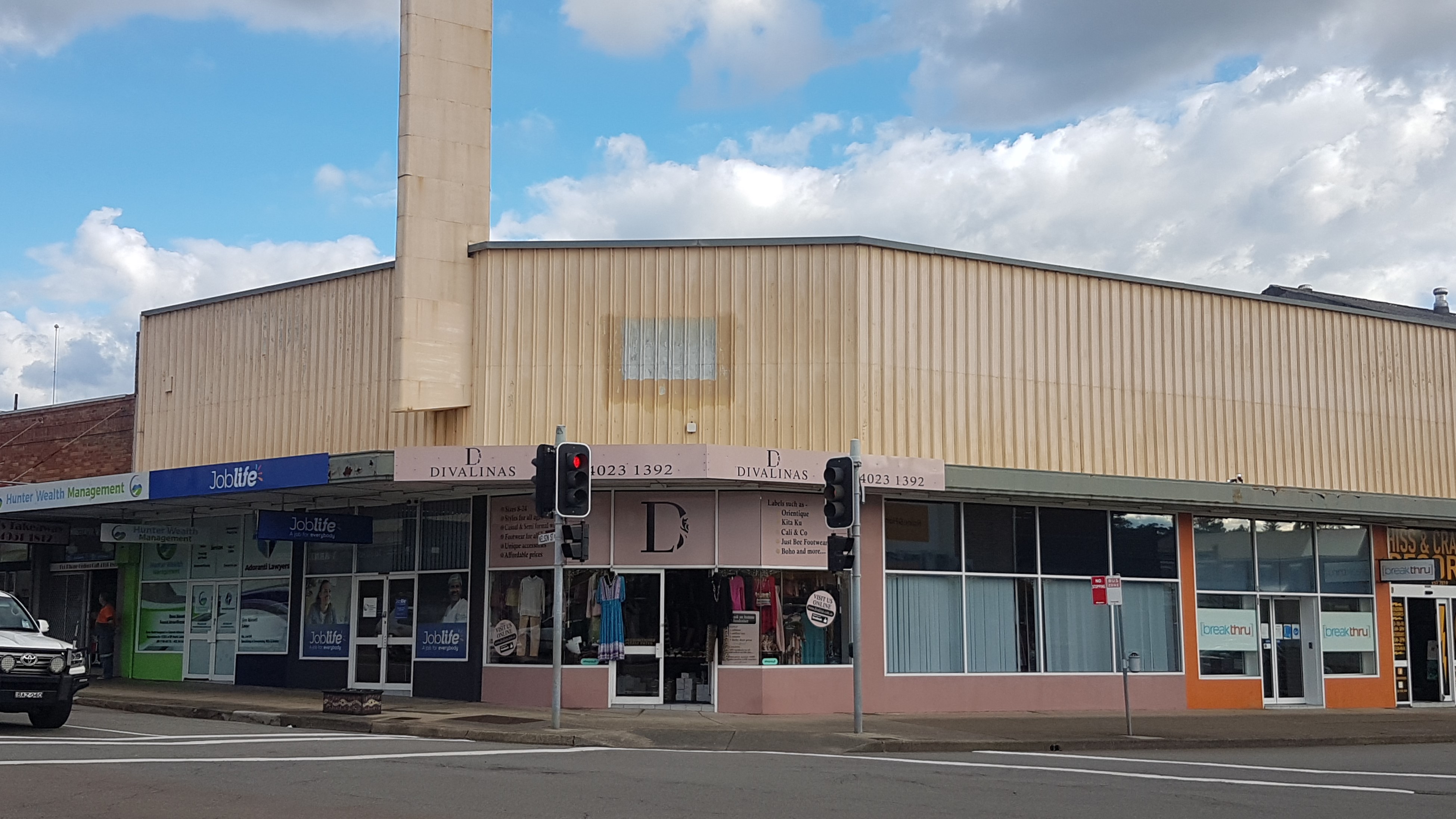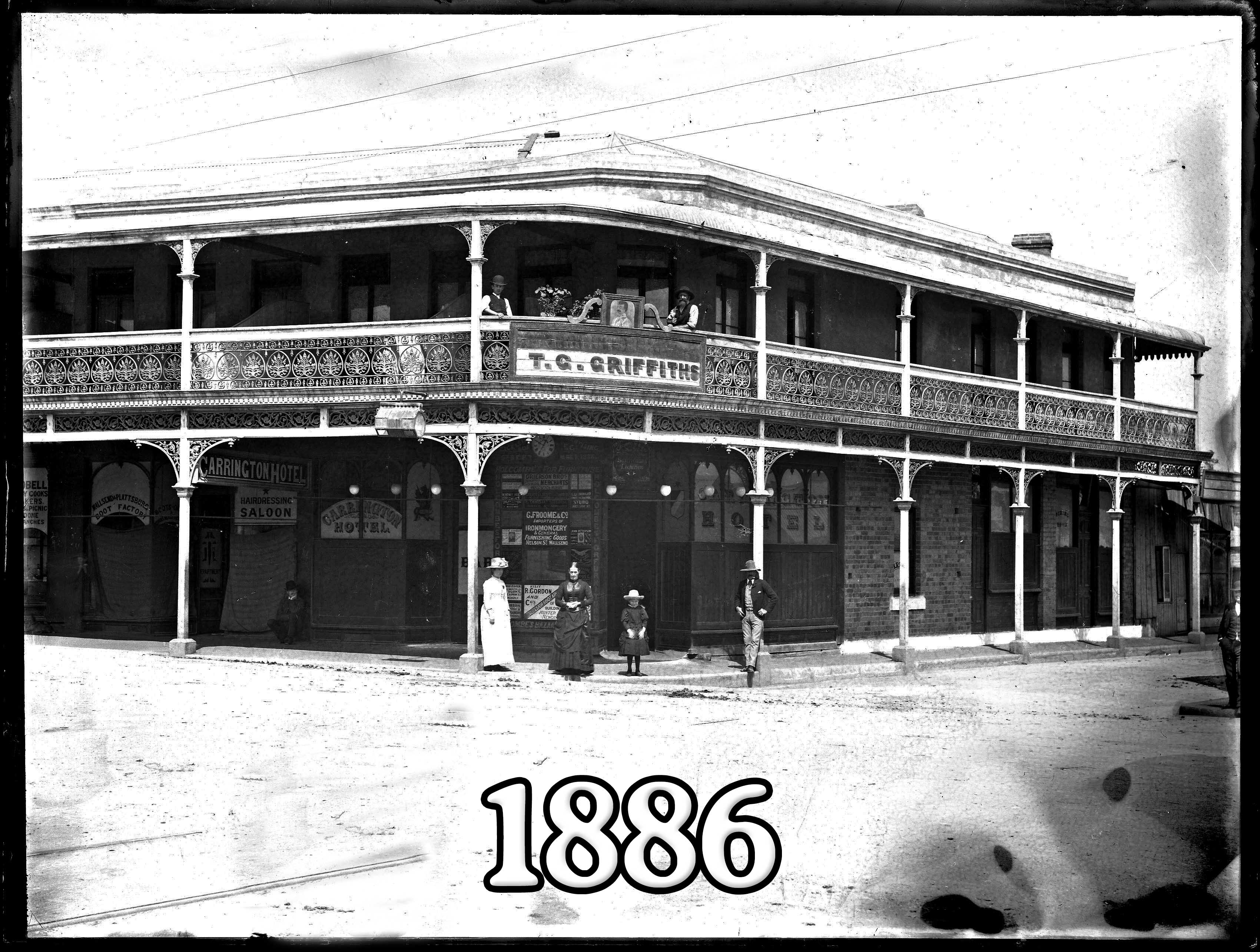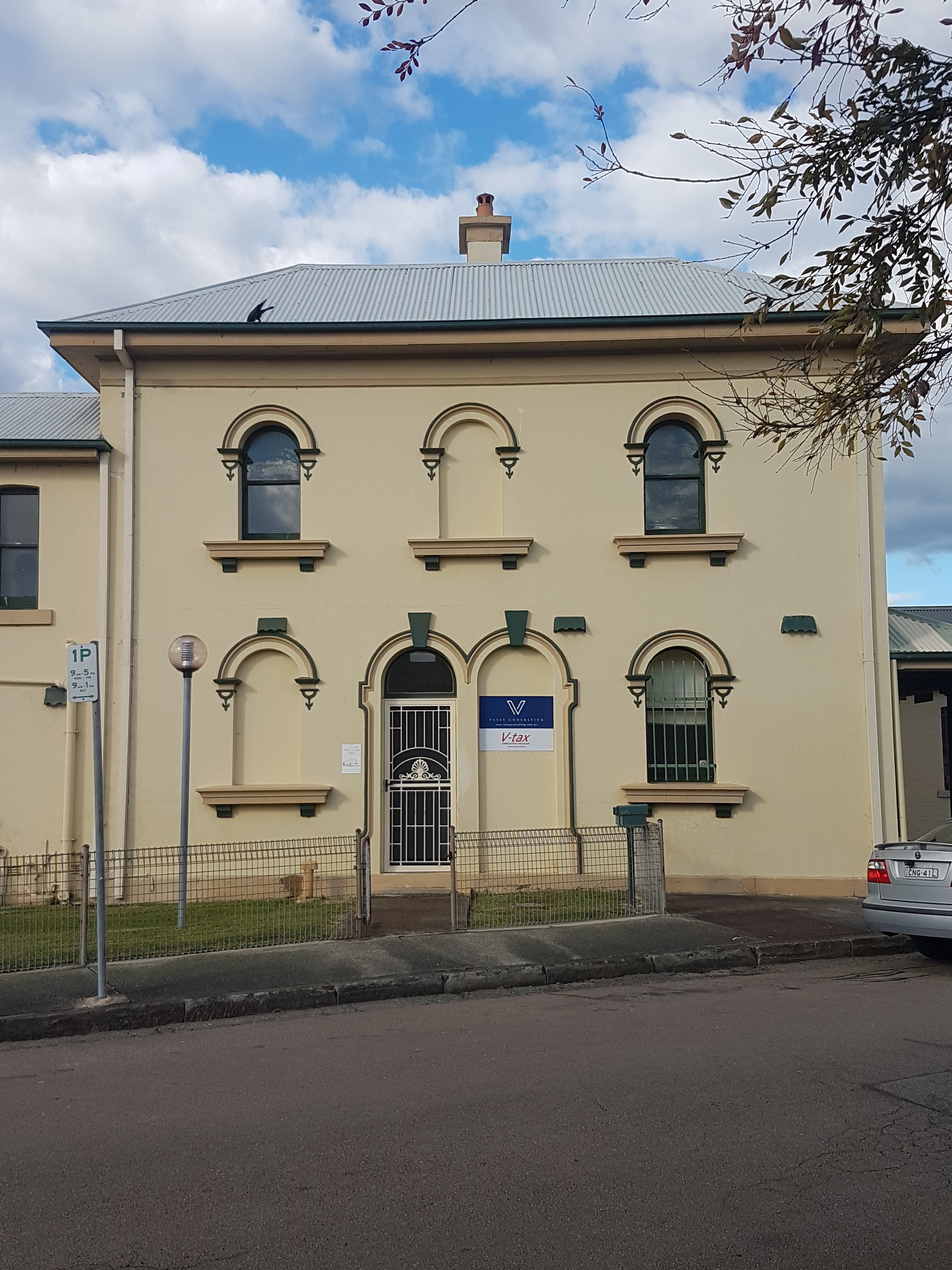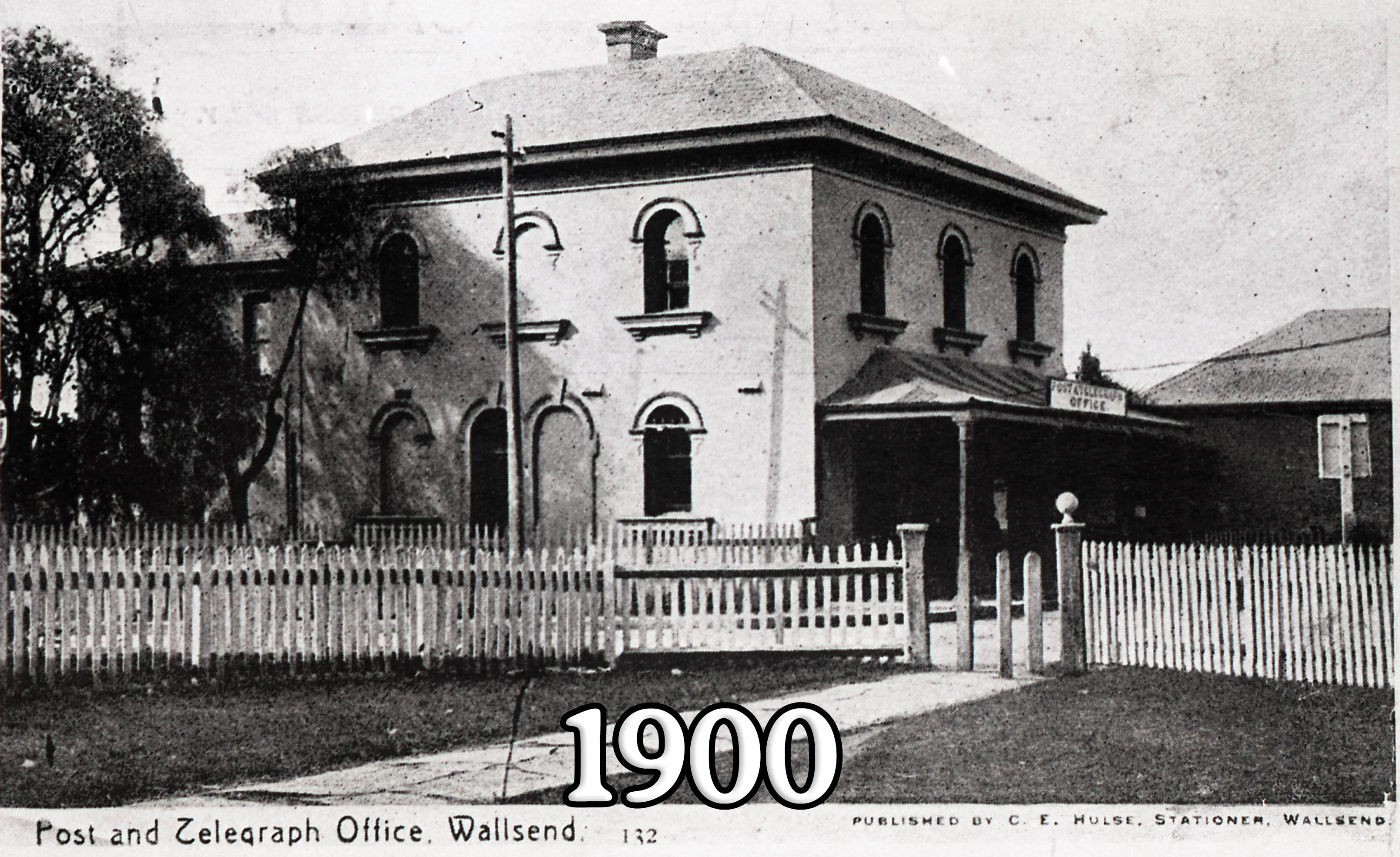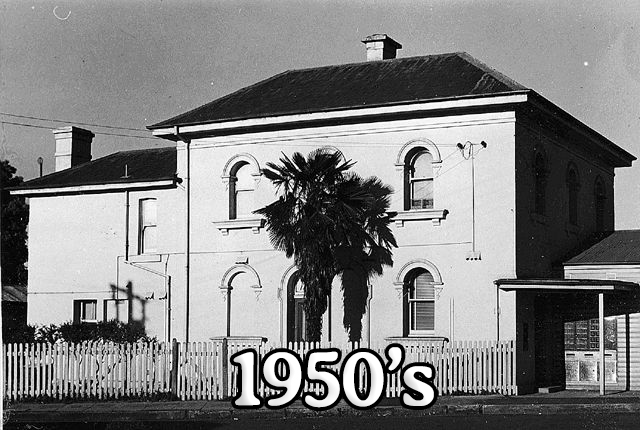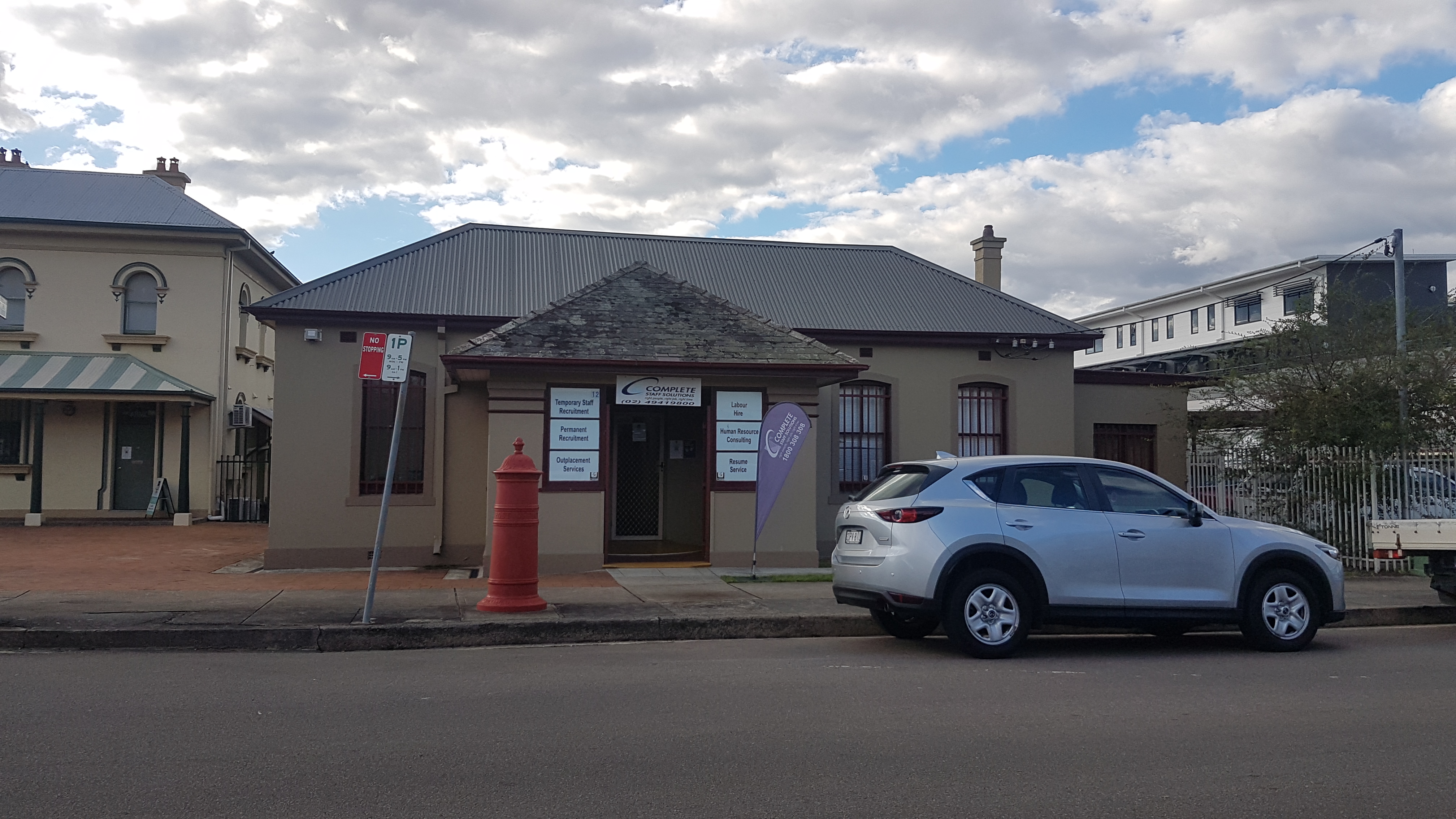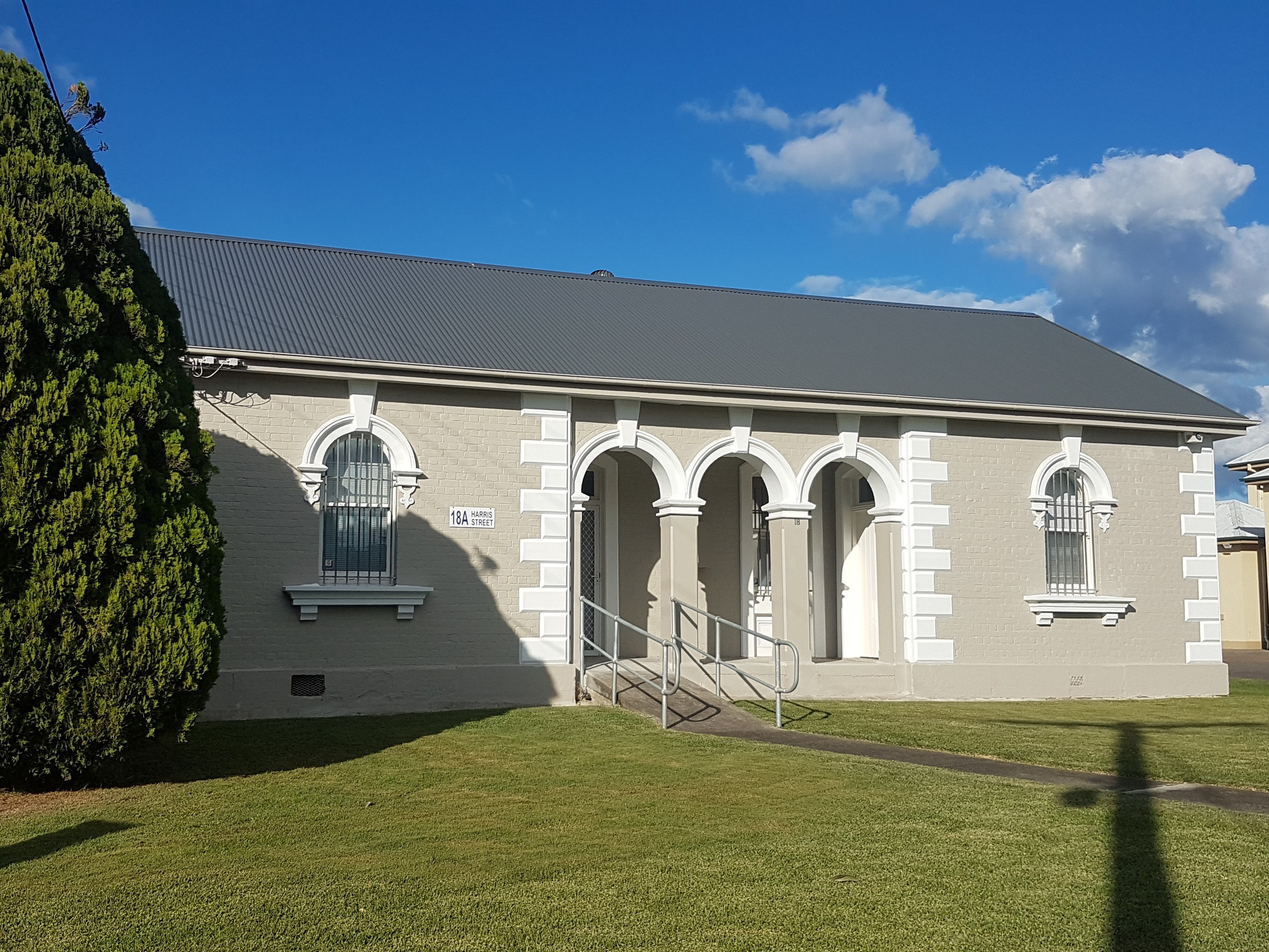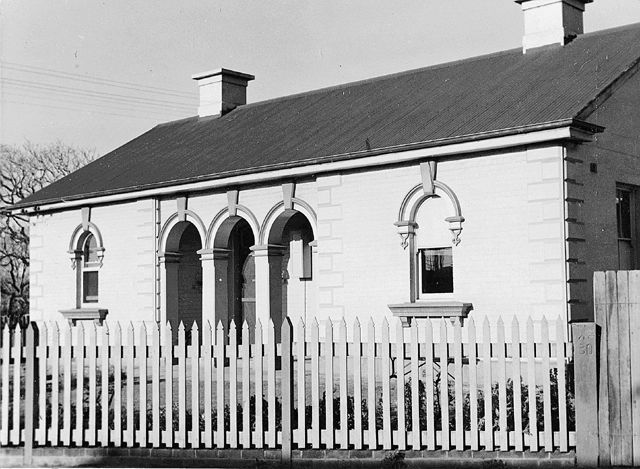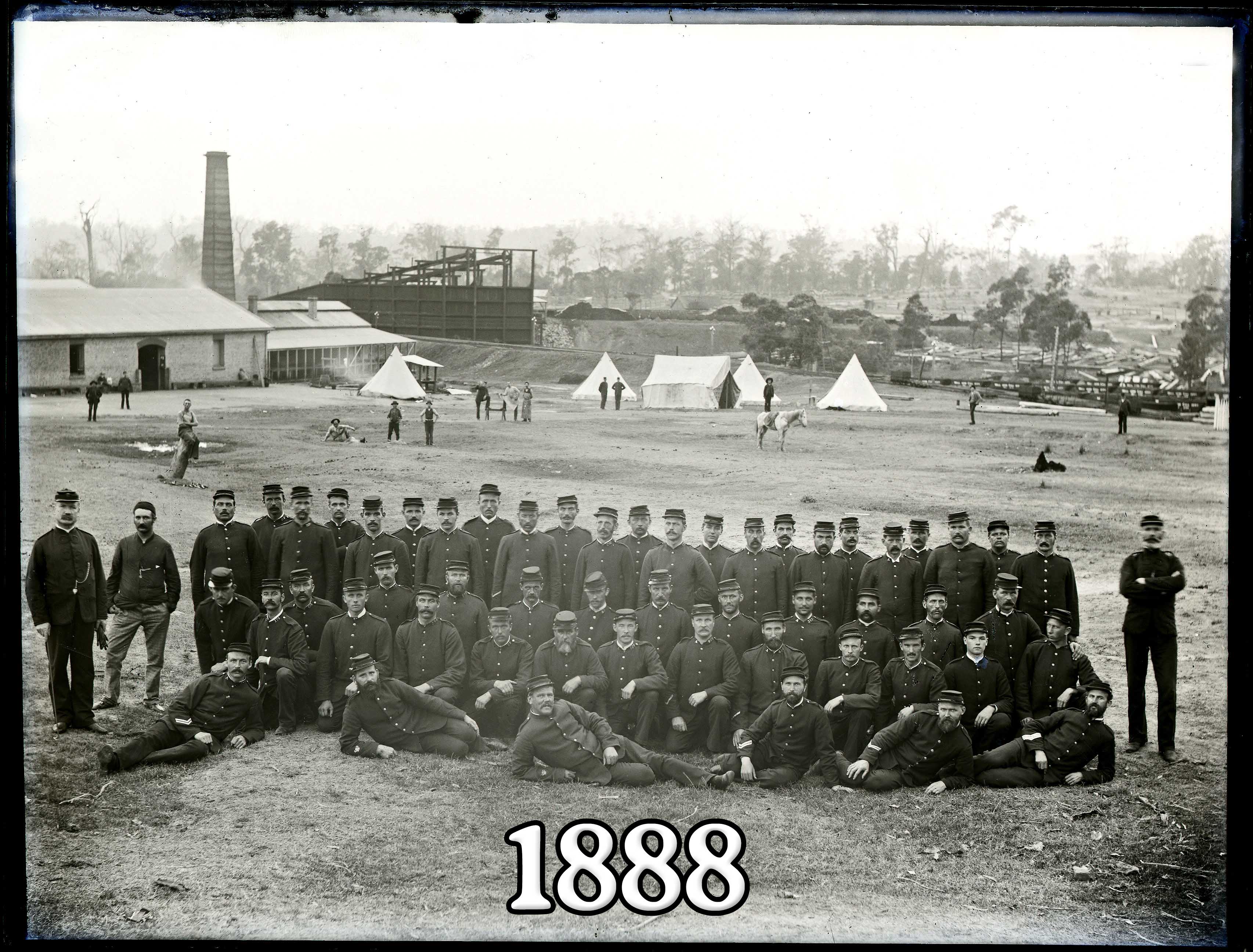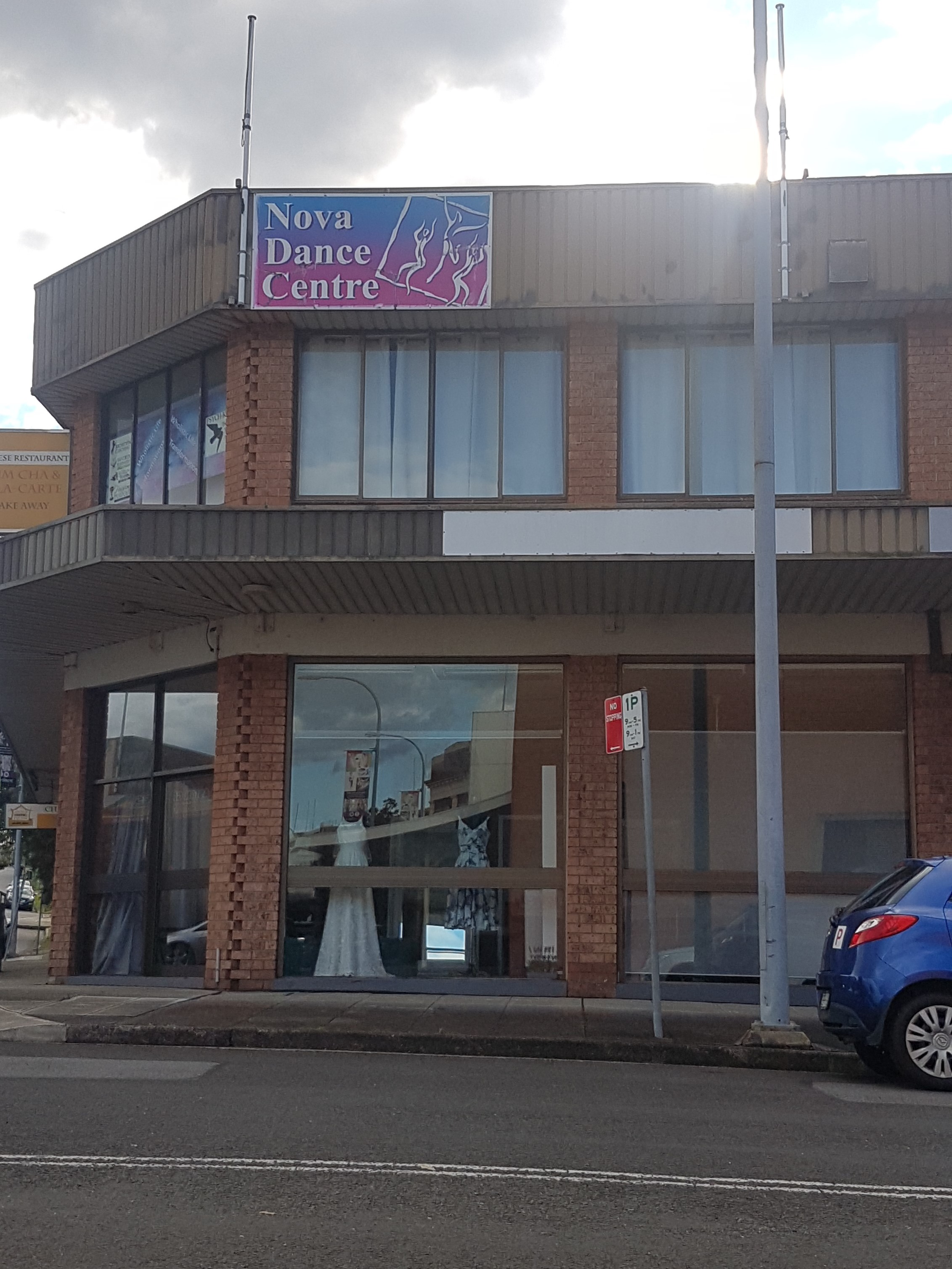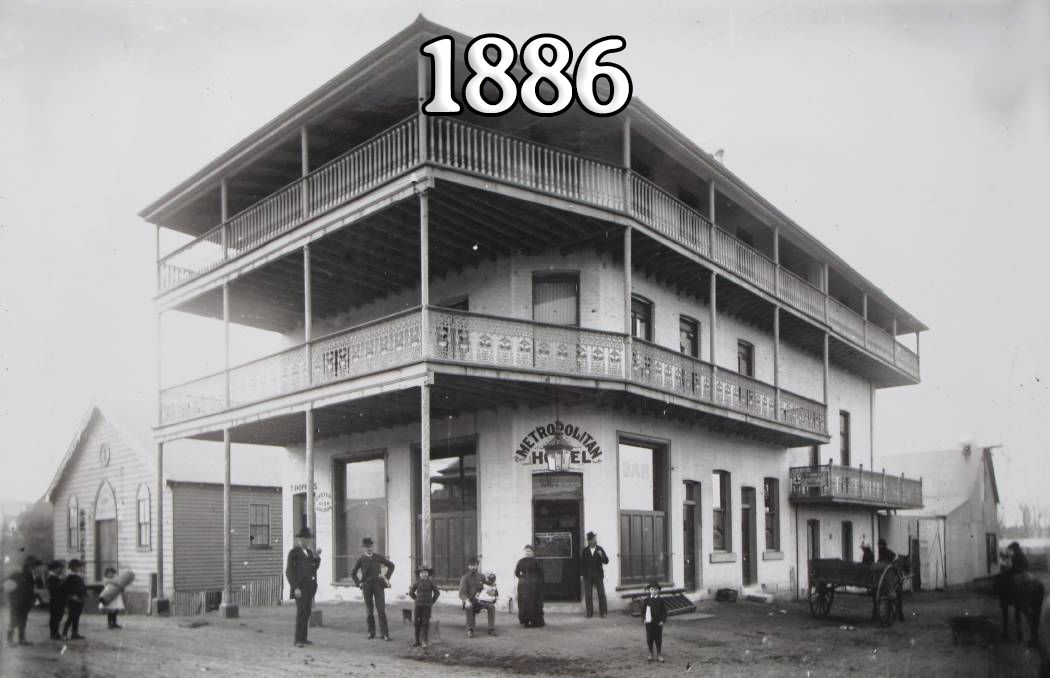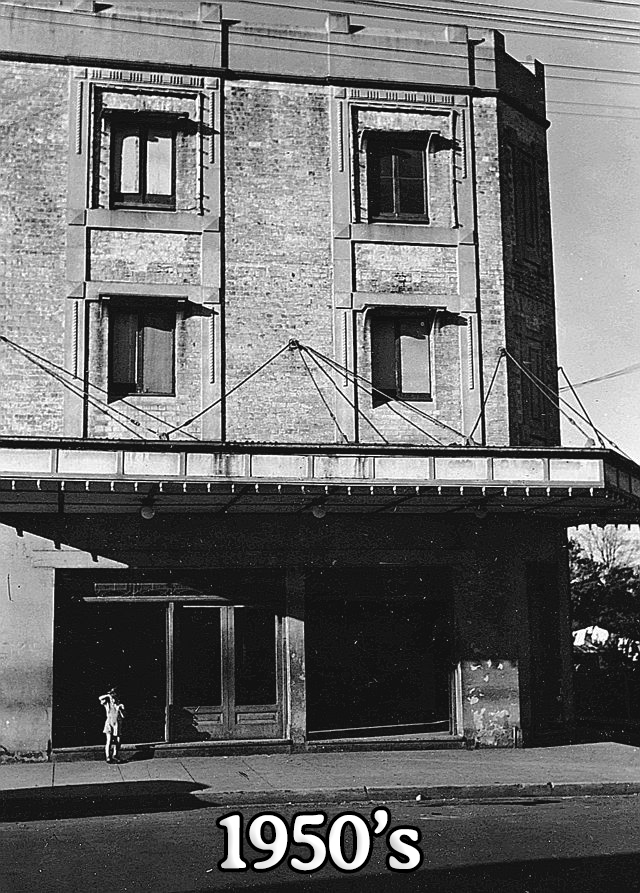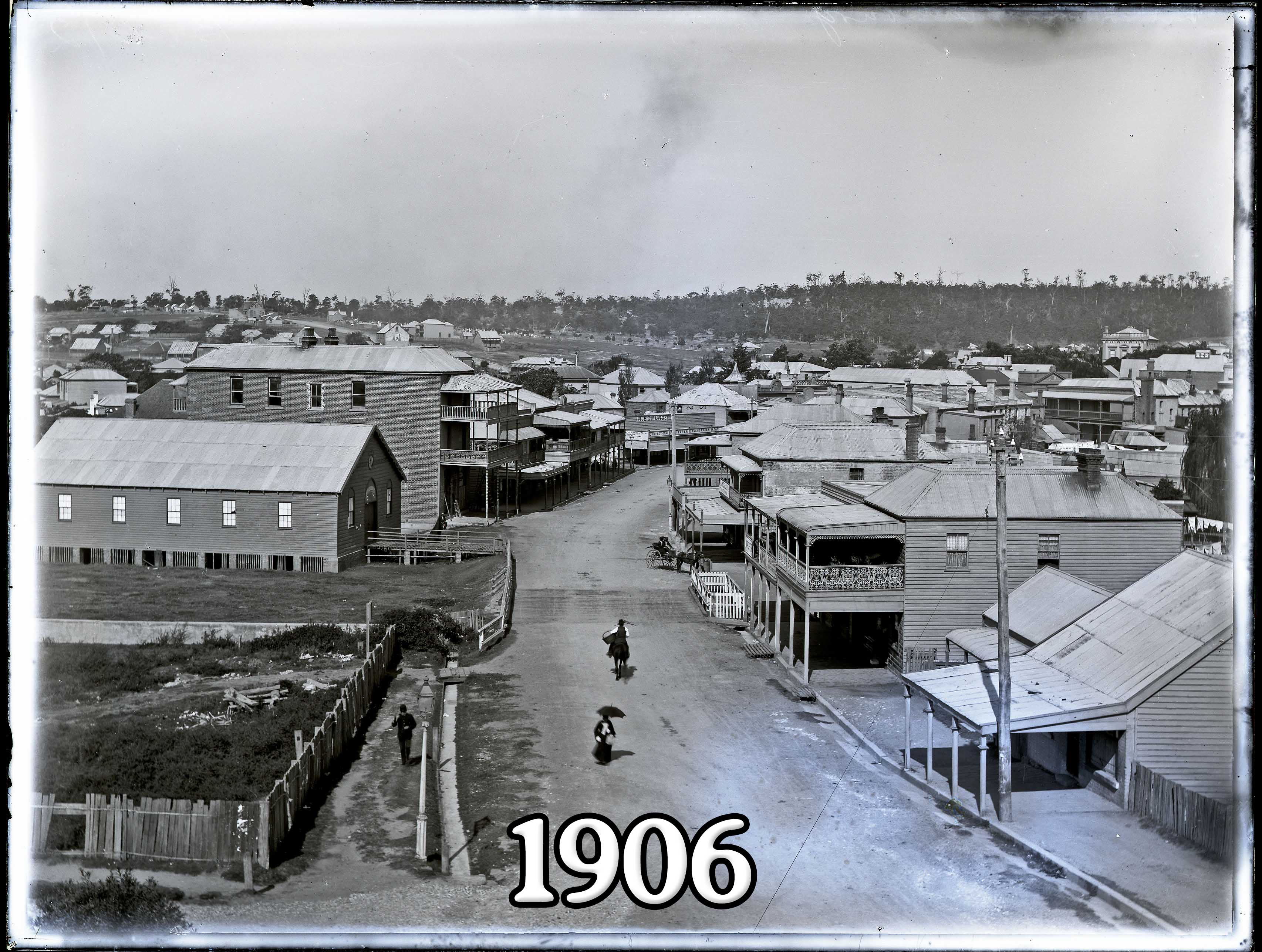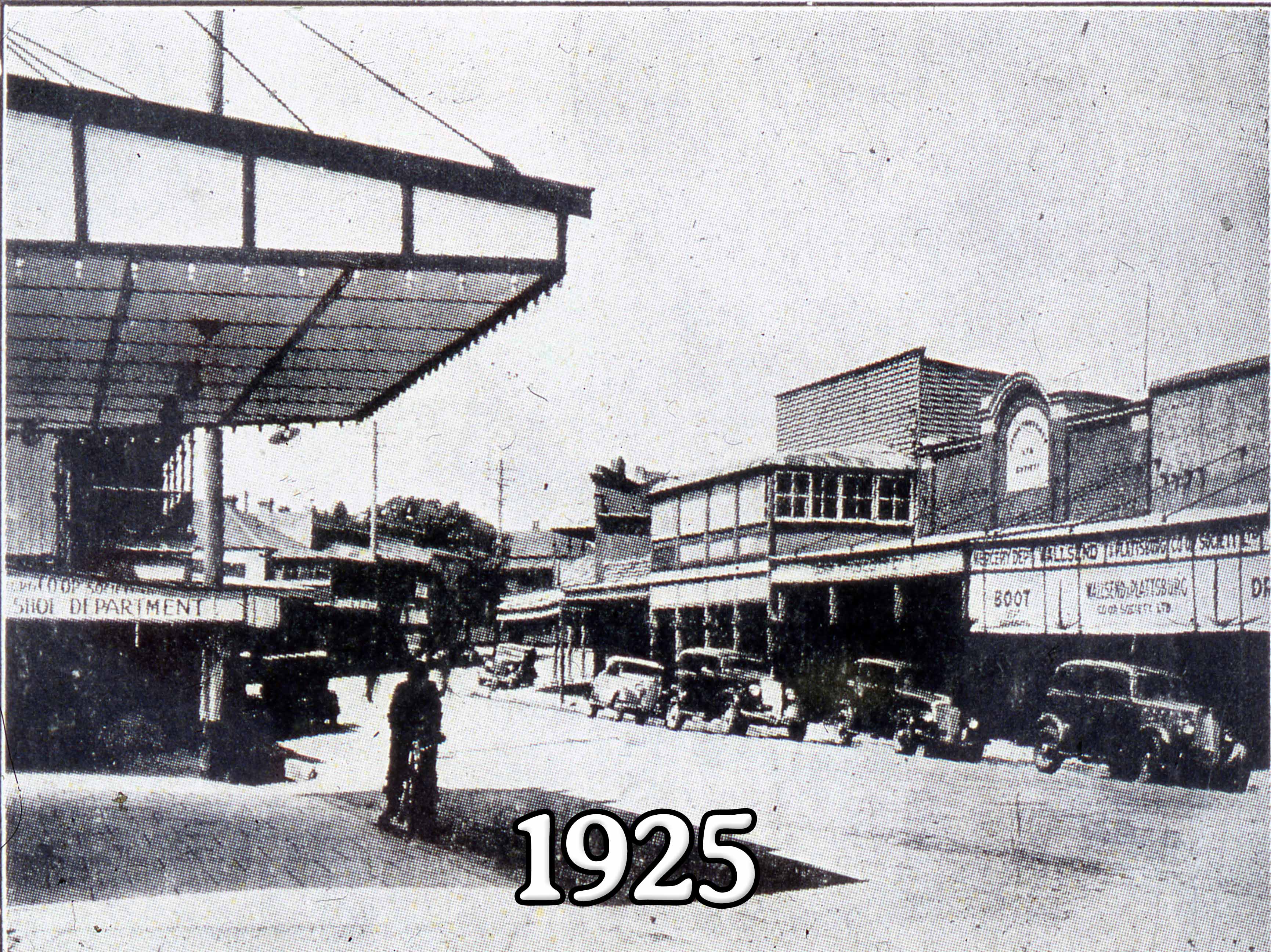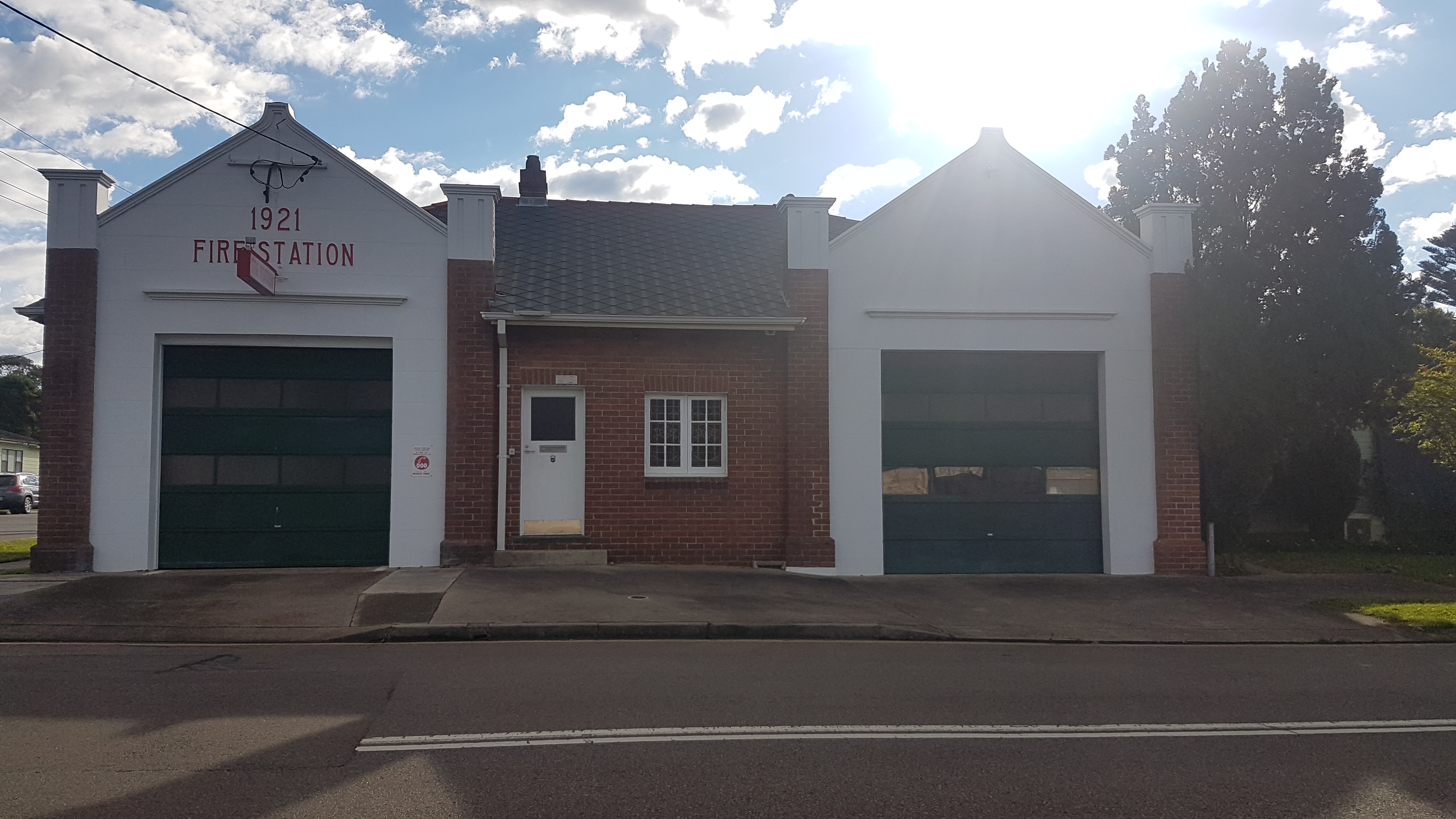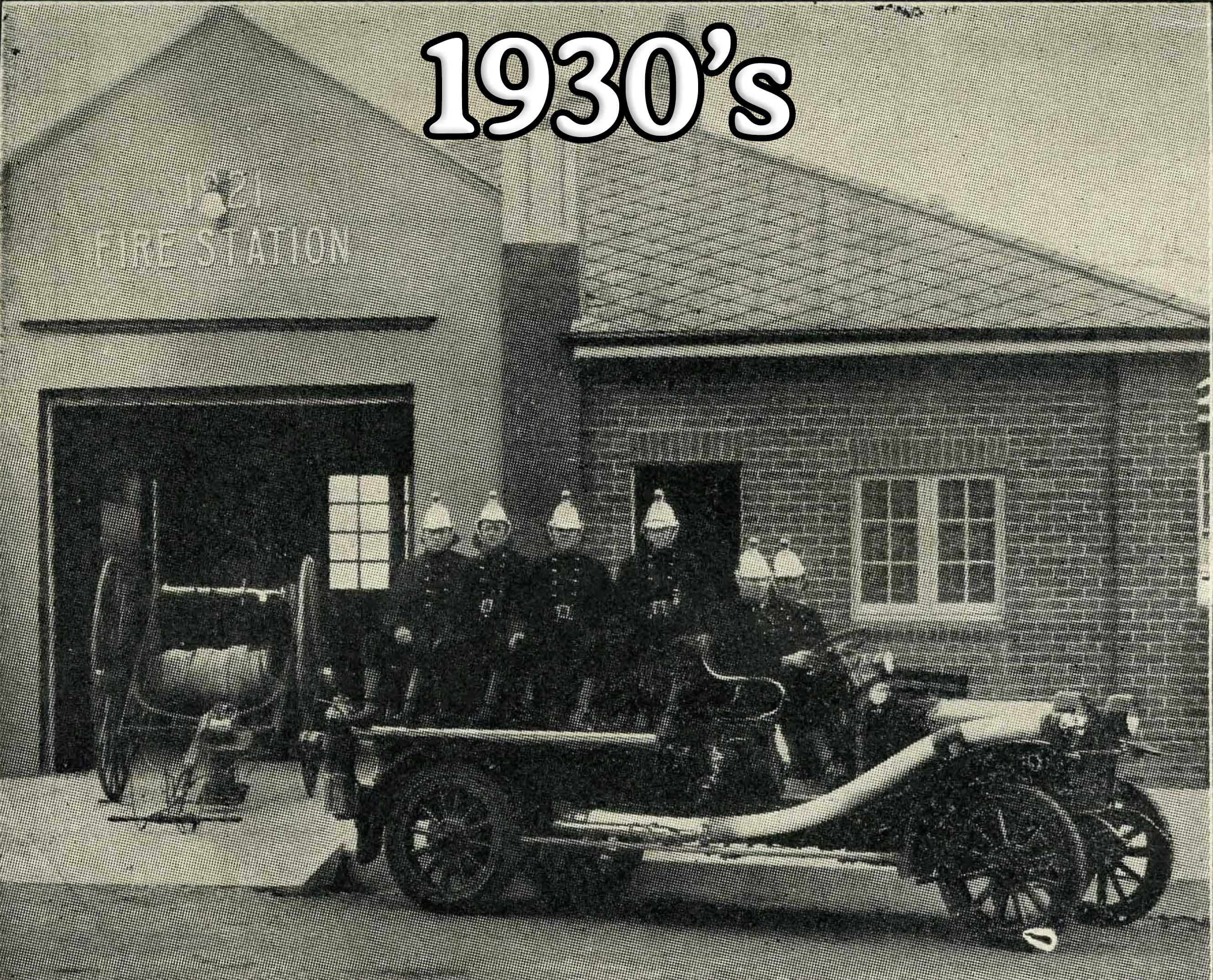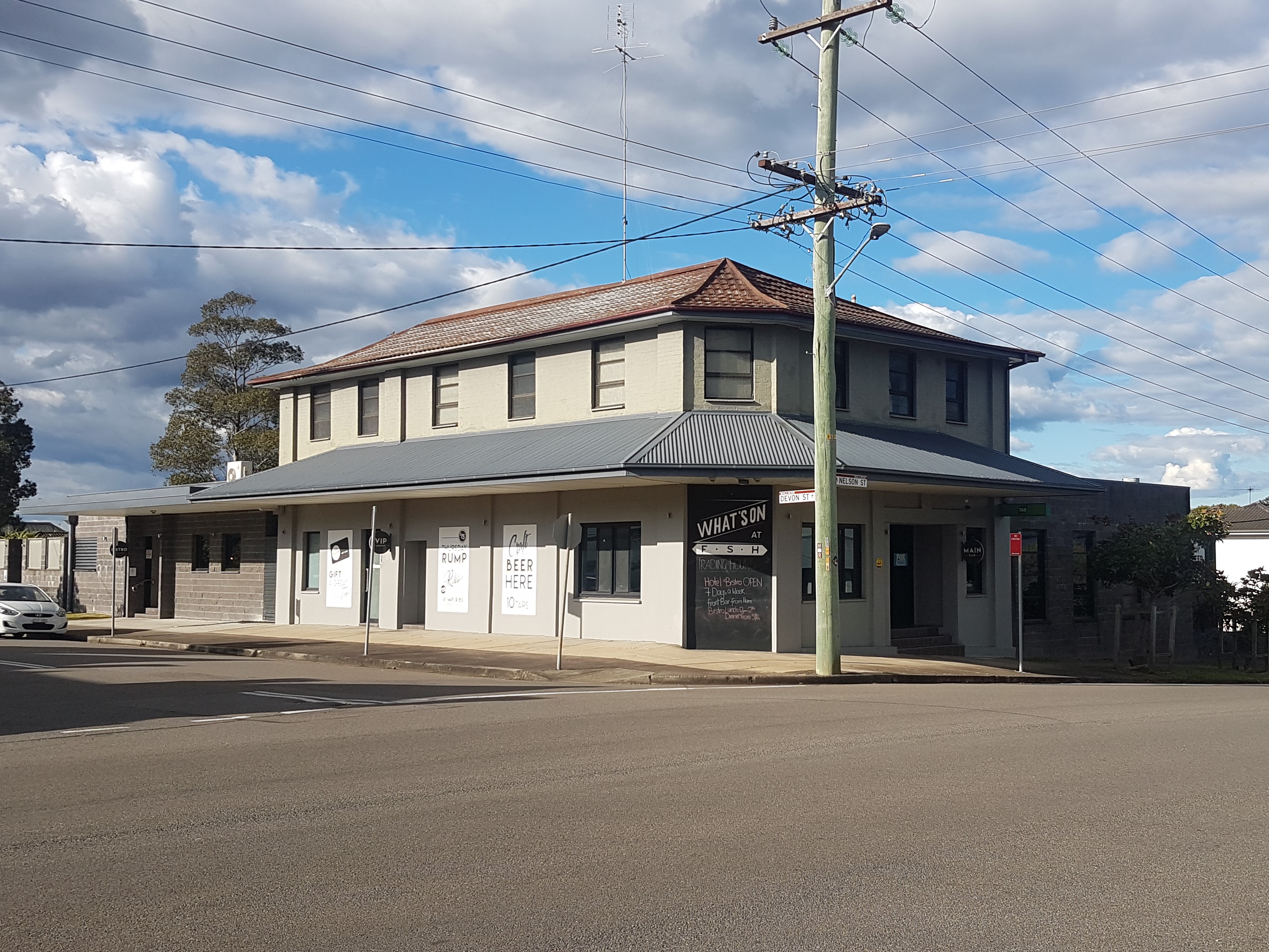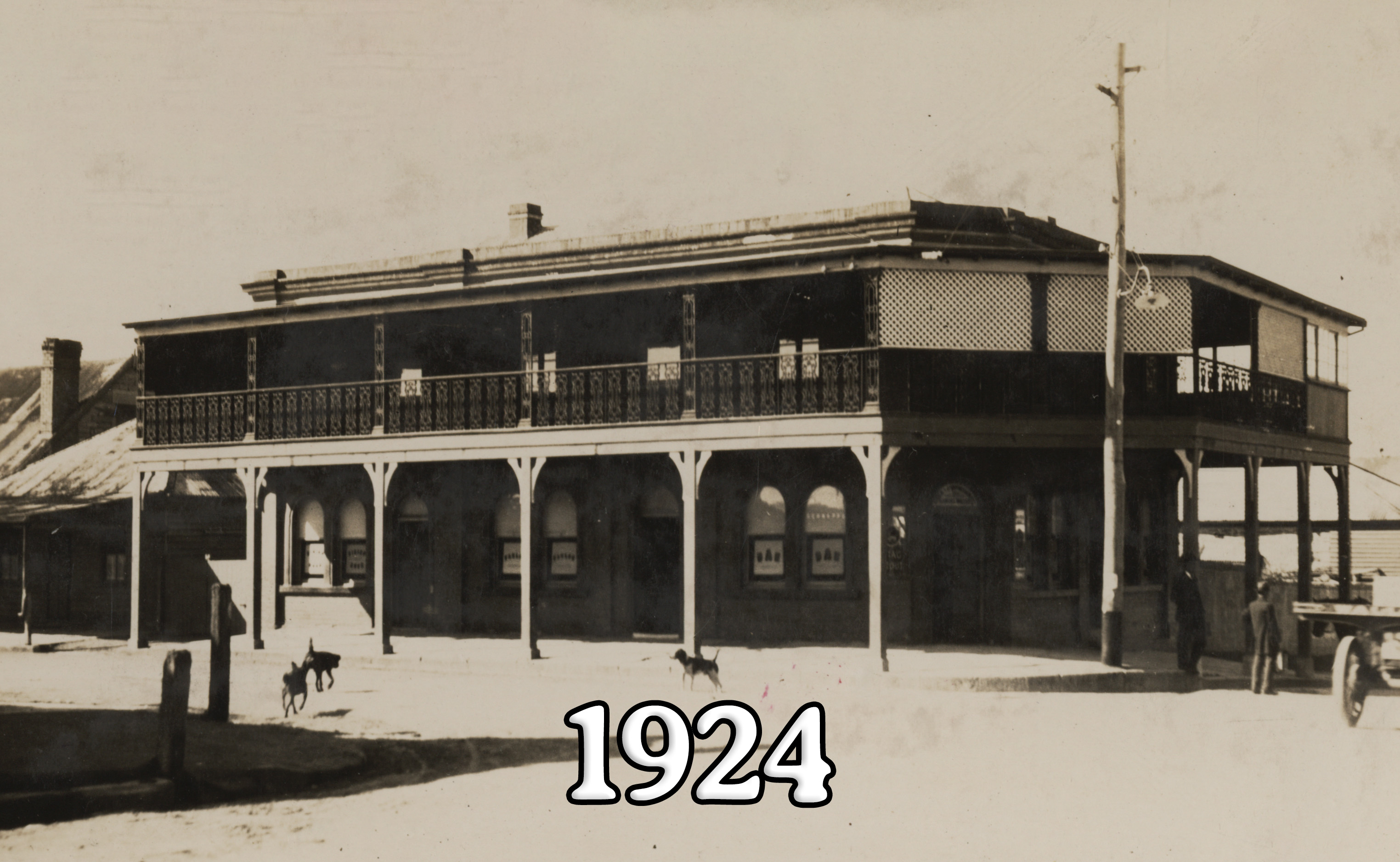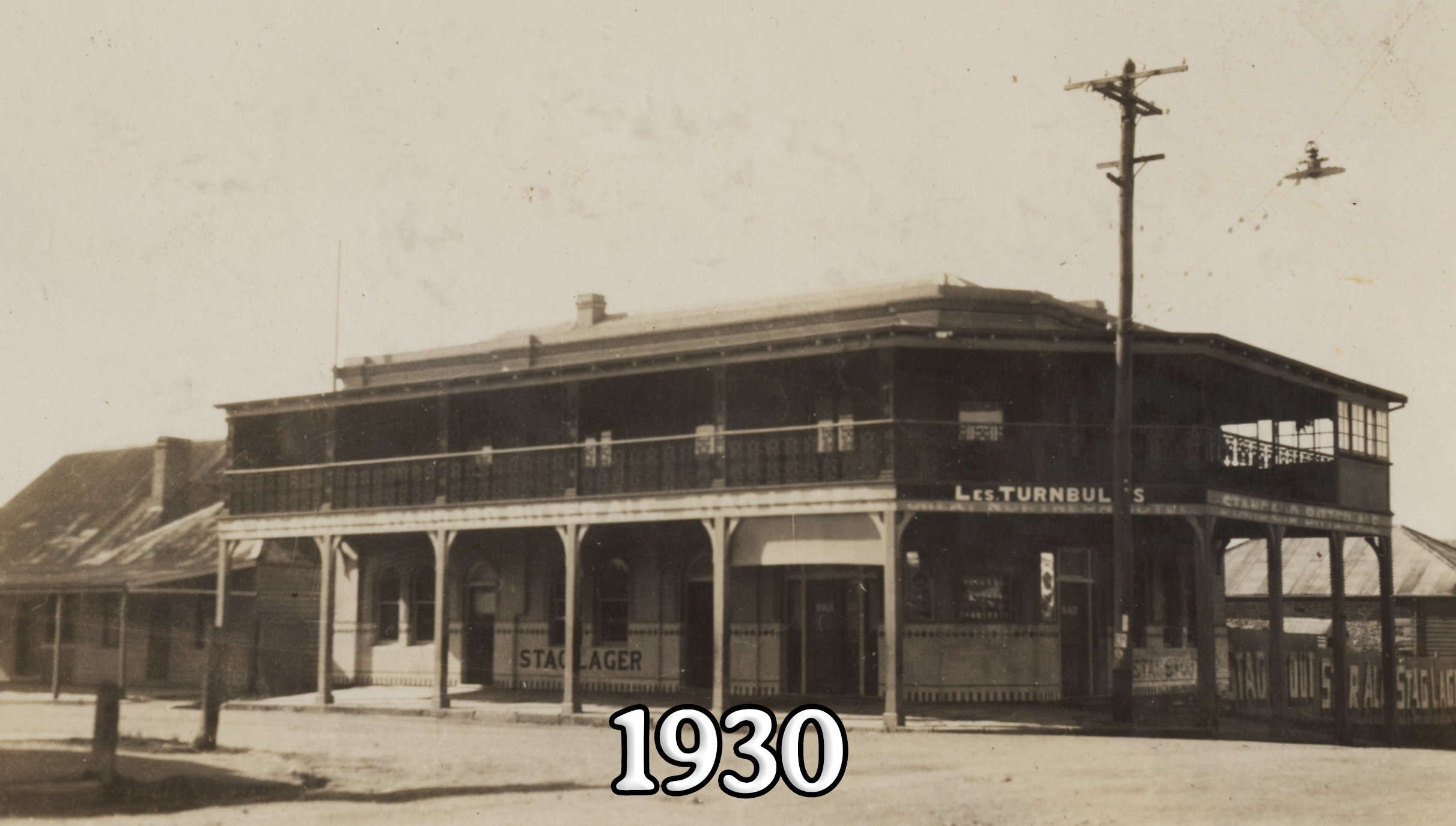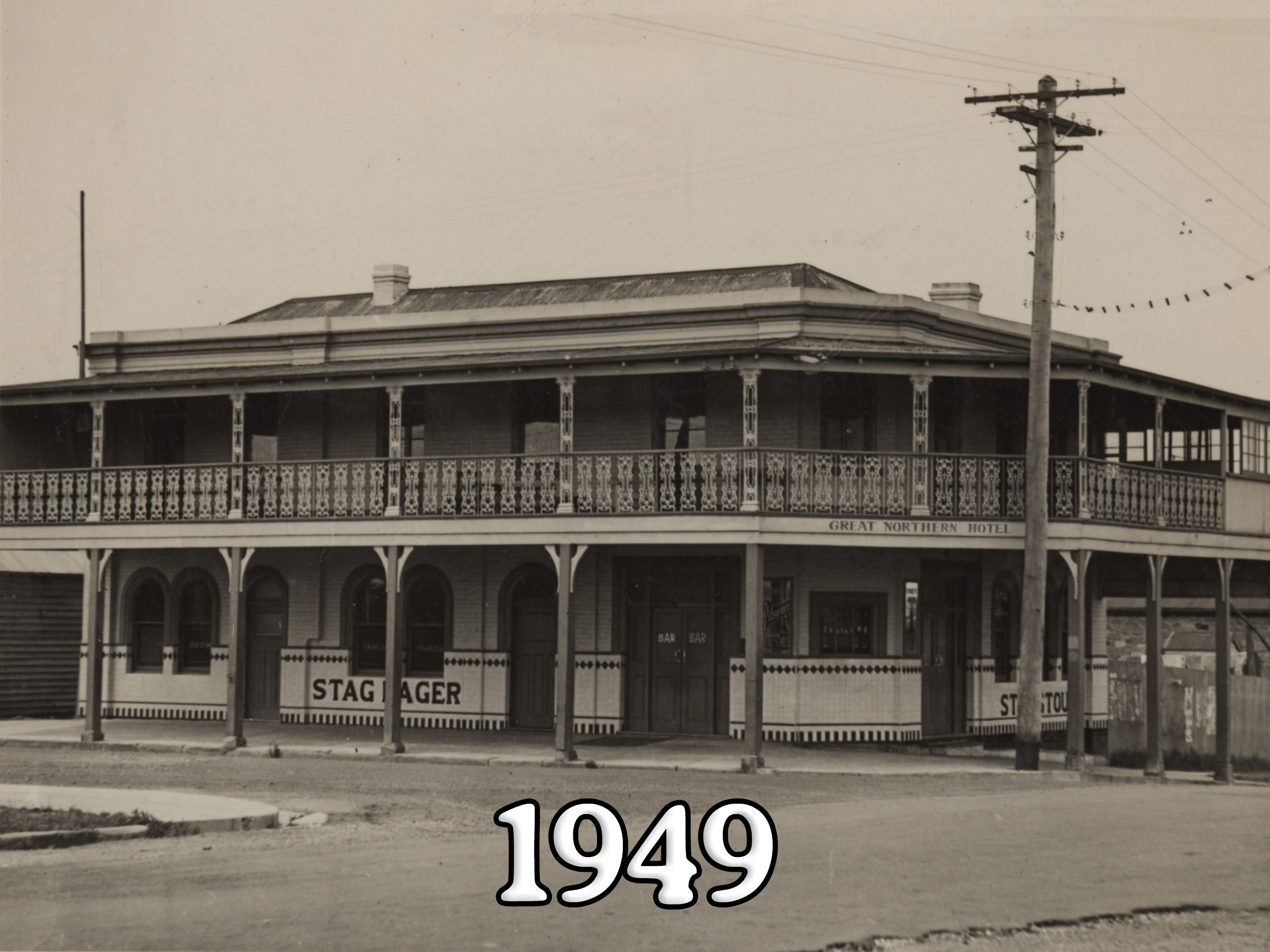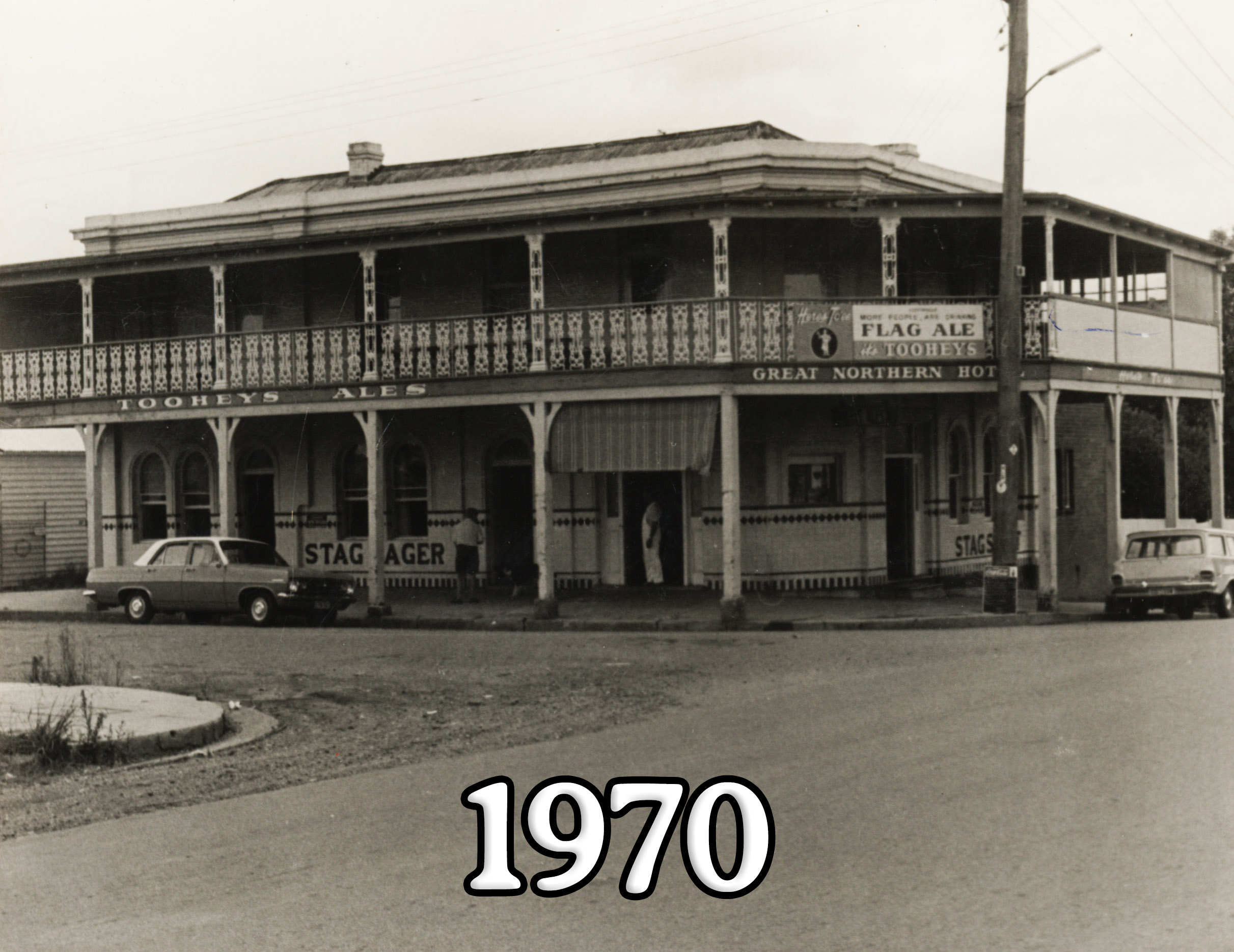Wallsend Heritage Walk
This page contains the fully referenced contents to the Wallsend Heritage Walk on the City of Newcastle App. If you would like to do the walk, please download the app to your phone via the Google Play store or Apple App store. Then scroll down to walking trails and swipe across to the Wallsend Heritage Walk.
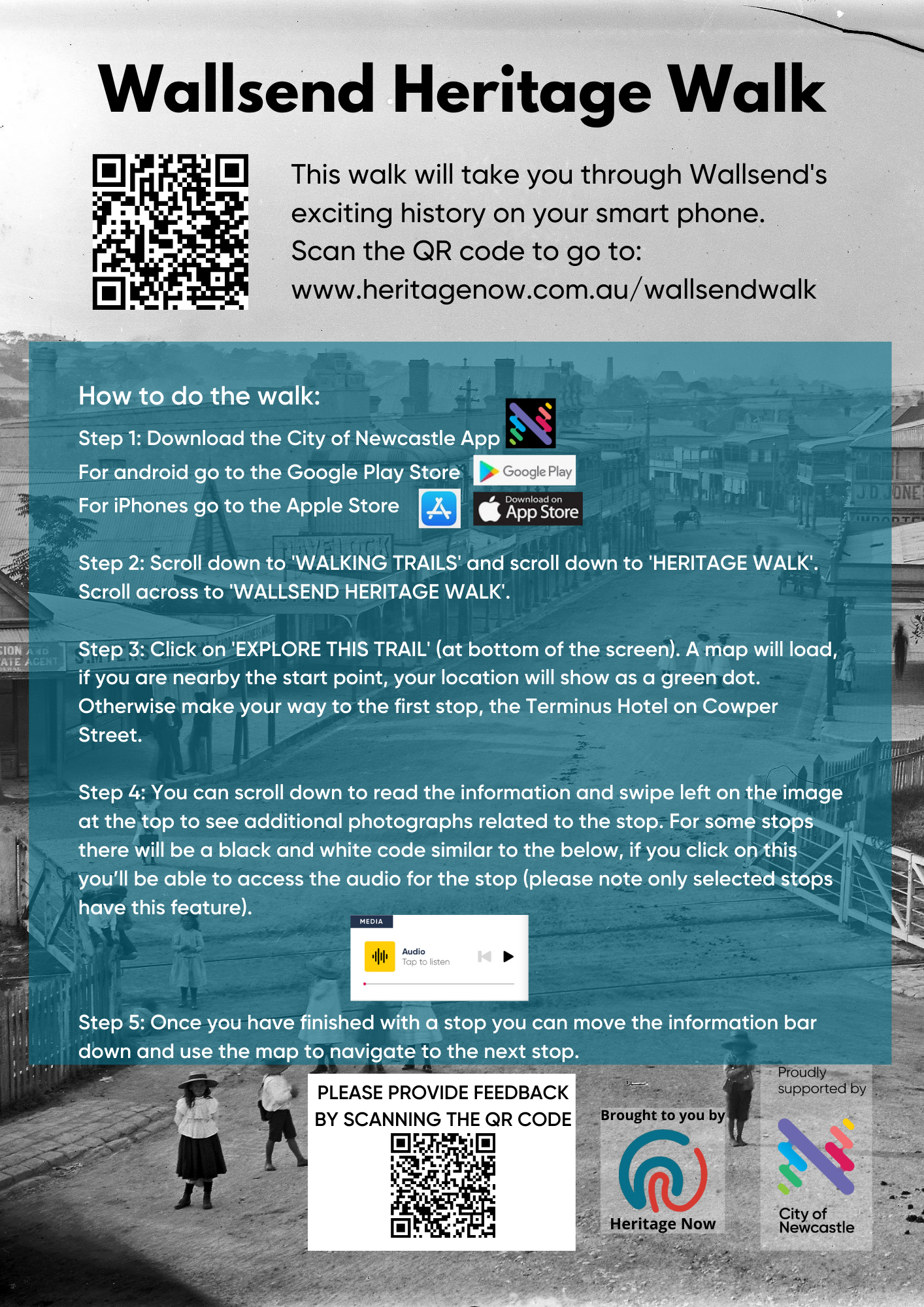
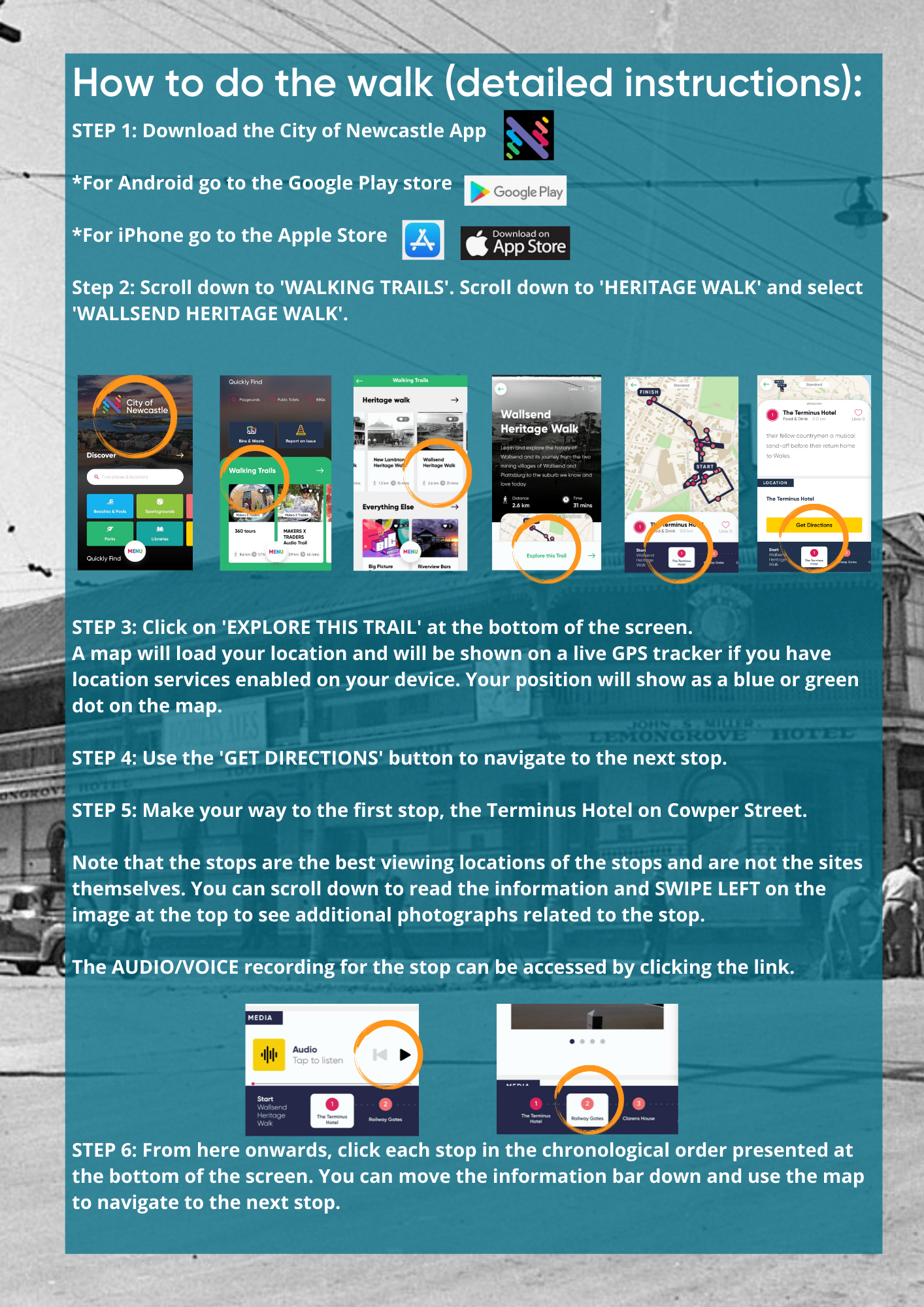
Terminus Hotel
The Terminus Hotel was originally known as the Travellers Rest Hotel and opened its doors to patrons in 1861. In 1897 it was rebuilt into the building before you today and reopened as the Terminus Hotel.1 The hotel draws its name from its position opposite the former Wallsend Terminus, where passengers could catch a train to Newcastle. Old Newspaper articles show that the hotel was a popular spot for society meetings including the Agricultural Society, The Miners Home Lodge, and the Order of Druids. It was also used as accommodation for the adjudicator of the Wallsend Eisteddfod, a Welsh festival of poetry and music.
In its early years the hotel was run by Mrs Margaret Johnson, who inherited it after, its first owner (her husband), died in 1866.2 The hotel is documented as being popular amongst Wallsend’s Welsh immigrants. On one occasion in 1890, sixty Welshmen attended a gathering in the hotel to give two of their fellow countrymen a musical send-off before their return home to Wales.3
Railway Gates
Although the rail and station is no longer present, the gates are still there (however they are a recreation of the original). A reminder of Wallsend and Plattsburg’s past.
The history of Wallsend is closely tied with the presence of coal seams. Before the town became known as Wallsend, the area was known as Nikkinba to the Awabakal people, meaning place of coal.9 This natural resource is what would later draw settlers to the area in the 19th and 20th Centuries. It was first supervisor of the Newcastle Wallsend Coal Company, Alexander Brown, who called the town Wallsend in 1858. He named it after his hometown at the end of Hadrian’s Wall in Northumberland County, England.
Soon after the mine opened, work began on a railway line, which would join with the existing line at Waratah to transport coal to the harbour. This railway ran along what was then known as Kemp Street and divided the area into two distinct locations. The south side, where you currently stand, became Wallsend and the north side developed into the town of Plattsburg. Nelson Street provided the link between the two with a level crossing. Over time, Wallsend became known as the more affluent side of town, while Plattsburg maintained its working-class roots. However, the two councils amalgamated in 1915.
Although the railway and station are no longer present, the gates are still standing, a reminder of Wallsend and Plattsburg’s past.
Clarens House
Wallsend was not all miner’s cottages. This Nation Trust Victorian mansion was built in 1887 for William Walker Johnson and his family. Johnson was a businessman occupying himself with several interesting ventures in his time.
He acquired the Travellers Rest Hotel after his mother Margaret Johnson passed away in 1872.13 He was known as the town’s first post master as he sold stamps from his hotel. He also operated a general store and later when it was built, the post office. In the 1880s he was involved in the timber trade, carrying out many large projects including the construction of a tramway from Wallsend to Newcastle.
He also operated two steamers that ferried people across Lake Macquarie from Cockle Creek, and had a leasehold in the Cardiff Colliery. Johnson was also a member of the School of Arts, the Wallsend Jockey Club, a director of the local Gas Company, and a proprietor of the Newcastle Morning Herald.14 Needless to say, he must have been a very busy man! In later years Clarens House became the BHP Collieries Manager’s residence.
The cement rendered house contains several large bedrooms, a formal dining room, ornate ceilings, and an internal staircase. If you scroll through historic images of the building, you will see that the exterior is still much the same as it was in William Johnson’s day.
Library
Now a family Chinese restaurant, this building was once the Wallsend Library. It opened its doors in 1948 and was the second free library to be opened in the Newcastle Council area. The library was largely funded by the Joint Coal Board, which provided £4100 towards its establishment. The new library contained 5200 books, half for children and half for adults.17
The picture here, featuring many bicycles and people lining up out the front, was taken in Book Week in 1950, during which the library held events including talks by children’s authors.18
These facilities were replaced in 2006 by a new award-winning library just around the corner in Bunn Street.19
School of Arts
Before free public Libraries opened in NSW, the School of Arts was the main institution in Wallsend dedicated towards the pursuit of knowledge.
Lobbying for a School of Arts began as early as the 1860s as was indicated in various newspaper articles voicing local support for the institution. They noted that there were intelligent men amongst the miners, who needed a place to exercise their minds that wasn’t a pub!23
These institutions were also seen as a way for working class people to gain an education. The first school of Arts building was constructed in Metcalfe Street in 1875, but its popularity meant that the School needed a larger space. The building before you opened in September 1879.24 So many people turned out for the event that some had to be turned away. At the time of opening, the school had 171 listed members and over 1000 books in their library.In addition to the library, the school hosted debates, concerts, and lectures on a range of subjects. Later, the building was uses as the Council Chambers until 1948 when it became in use by the Wallsend RSL until they moved to premises in Tyrrell Street.
Grapes Inn
The Grapes Inn was opened by Thomas Lundy in 1869 on land he had purchased from the Newcastle Wallsend Coal Company. It was in this hotel that the Municipality of Wallsend was born.
A public meeting held here in 1872 led the community to petition for recognition as a municipality, and in 1874 Wallsend was formally incorporated.
The hotel underwent improvements in 1874. An advertisement from this time boasts that the hotel has a Billiard Room. It was the first of its kind in Wallsend. 26
During the First World War, the hotel stopped serving alcohol, and eventually ceased operations as a pub when the publicans daughter Myrtle Armstrong pulled the final beer in 1921
Since then, the building has since been used for many purposes including shops, a doctor’s surgery, offices, a party hire venue, and most recently as a Christmas Shop.
Commercial Hotel
For over 100 years, this location was the site of The Commercial Hotel. The Hotel first opened on 17th November 1874. All those who attended the grand opening were treated to a free dinner. The hotel was described as, “…both comfortable, substantial and attractive” in the Miners’ Advocate and Northumberland Recorder.29
Northumberland Recorder.29 The Hotel was also the location where the Wallsend Literary Society was first formed in May 1876.
In 1921 the Licence holder, Peter McLaughlan stated that the hotel mainly served long distance tram travellers as it was located adjacent to the tram depot, where passengers from Newcastle would change trams to travel to West Wallsend and Speers Point.30 It was also popular amongst local miners including those who worked at the Elermore Vale and Seaham collieries.
The Commercial Hotel was also known affectionately by locals as ‘Figtrees’ because there were fig trees lining the rail corridor opposite the hotel. When licensees Alan and Kathleen Convery took over the pub in 1982, they renamed it The Figtree Hotel.
On the 28th of December 1989, Newcastle was hit with a 5.6 Richter scale earthquake. The hotel was one of the buildings damaged in this event, and it was subsequently demolished.
Railway Goods Shed
The first Railway Goods Shed was constructed in 1868 to protect goods from the weather and prevent looting. In addition, the space was sometimes used for gatherings, with a concert to raise funds for a Public School held in the newly opened building in October 1868
More than 400 people are said to have attended the event!36 In 1876, this building was replaced with the current brick structure, which was completed at the same time as the Wallsend Railway station.37 There were arguments over what should be done with the shed following the closure of the rail services. The council argued that it should remain in use for the public rather than private ventures.It has seen a mixture of both, including being the home of a car yard and a tram museum. The building was at risk of demolition for road upgrade works but an interim heritage order and now State Heritage Listing has protected this building, with ties to the early coal town and community contributing to its historical significance.
Colliery Inn
The first license for the Colliery Inn was granted to Mark Fryar in 1861.42 It was likely the first pub in Wallsend.43 This makes The Colliery Inn one the oldest businesses in Wallsend that still operates under its original name.
The longest serving publican was Joseph Trotter from 1870 to 1885. Trotter, himself a former miner, was known to help those who had arrived from Newcastle-on-Tyne to find work in the mines.44 Like many hotels, the Colliery Inn was at risk of closure in the 1920s by the Licenses Reduction Board. The people who argued for the Colliery Inn to stay pointed out that it was an important meeting place for the local miners.
In addition, the inn was popular amongst sportsmen, being close to Wallsend Park.31 In particular, the inn has a connection with the Wallsend Cricket Club,45 Football Club46, and Boating Club. The hotel was damaged by fire in 1940. This event led to a new Colliery Inn being constructed in the 1940s in the art deco style it is known for today.
Presbyterian Church
The first Presbyterian services in Wallsend were held in the workshops of the A Pit of the Wallsend Coal Company by Reverend William Bain. Bain was from the Newcastle Church and would travel to deliver sermons to the Wallsend locals.
The St Andrew’s Presbyterian Church was established in 1868. 50 The small Gothic style church is a rare piece of mid-19th century architecture in the area. The first mass was led here by Reverend Nairn.
Throughout the decades, St Andrew’s has served the local Wallsend community and continues to do so to this today.
Baptist Tabernacle
The foundation stone of the Baptist Tabernacle was laid here in March 1893.53
Before the Tabernacle was built, the Baptists worshipped at a smaller wooden chapel from the 1860s. This space was shared amongst the Welsh Baptists and the English Baptists, who held separate services in their respective languages.54 The Baptist Church in Wallsend is another reminder of the Welsh influence on the early development of the town, as the Wallsend Welsh Baptists held the region’s first ever Eisteddfod in their chapel in 1861.55
The tradition of music and the arts continued in the Baptist Community with funds for the Tabernacle raised through music concerts showcasing local talent.56
The Baptist Church community is still present in Wallsend, although they are now based on Cowper Street.
C Firkins & Co Drapers
Nelson Street was an important business centre in the 19th and early 20th centuries. The street was lined with pubs, churches, and all kinds of shops. This growing business centre saved locals the trouble of travelling all the way into Newcastle to shop.
This spot was once the site of C Firkin and Co’s Drapery Store. The building on the left was originally a pub, but Caleb Firkin converted it to a store in 1889. The store sold a variety of goods including men’s, women’s, and children’s clothing, hats, ties, rugs, mats, hosiery, fabrics, and lace.59
The family business was passed down for generations until the 1970s.
Rotunda
The Wallsend Band Rotunda was completed in 1888. It was said to be the best rotunda in the colony.62 It was a focal point of local entertainment, where local bands would play. It would not have been uncommon for people to hear orchestral instruments resonating down the street.63
A renowned local musician Dr Edward Tyrrell, who received his PhD in Music was integral to the establishment of the Wallsend orchestra, which performed throughout the region. His compositions gained national and international critical acclaim.44
The rotunda was also an important meeting place. A notable historic meeting that took place at the rotunda was in 1895, when both Wallsend and Plattsburg’s mayors and miners met to advance the cause of the eight-hour movement, which led to the standard eight-hour work day. 64
The first image from 1950 was taken during works following a storm that damaged the spire. There was a resurgence in the number of concerts in the 50s after complaints that space was being underutilised.65 The spire was not replaced until the 1990s. A focal point of Wallsend’s Heritage, the rotunda has remained a popular meeting place and hub for local events.
Lemon Grove Hotel
The Lemon Grove Hotel takes its name from the farm the hotel was built upon. This farm featured a lemon grove and was known as the Lemon Grove Estate. The property of Ann Clarke, the Lemon Grove estate was subdivided after her passing and much of the township of Wallsend is built upon her former estate. The Lemon Grove hotel was built around 1875.66 It was located next to a tram terminus, and was a popular spot with trampassengers.67
One of these trams can be seen in the background of a picture from the 1900s. The hotel underwent renovations in the 1920s, detailed in the Newcastle Morning Herald.60 At this time the hotel featured an island bar and was decorated with white and green tiles. The balcony is one the hotels most prominent features and it gives a great vantage point over Tyrrell and Nelson Streets. Locals made use of this prime location as a point from which to deliver speeches to citizens in the street and park below.
One meeting, discussing the Federation movement in 1898 was said to have been attended by 800 people.68 Although the balcony has changed since those times, step inside and go upstairs to feel like the old mayor of Plattsburg.
Carrington Hotel
This is the site of the former Carrington Hotel. It was one the biggest and busiest hotels in Wallsend and Plattsburg.
Like the Lemon Grove on the opposite side of the street, its prominent balcony was used to deliver addresses to the public. One of these addresses was said to be attended by 2000 people!73
Carrington Hotel was one of 23 hotels in Newcastle and Lake Macquarie to lose its licensing in 1921. Therefore, there are few surviving photos of it. It was subsequently converted into shops. The site still serves as a commercial building today.
Post Office
While Wallsend’s first post office was built on Cowper Street in 1861, an upgraded facility was necessary and this building in front of you was opened to the public in 1882, forming part of an administrative centre, adjacent to the courthouse and police station.
The Post Office is significant to local history in that it was also the telegraph office. When the trans-continental telegraph was completed, telegraph became a way for coal exporters to organise international trade. Therefore, the Wallsend Post and Telegraph Office was an essential part of the coal industry up until telephone and radio communication became more prevalent.75
The building served as the local post office up until 1995, when newer facilities were established at Wallsend Village.
Court House
The Wallsend Court House was constructed in 1878. The first court session was held in January 1879, and the first major case trial was held there in 1889. The case involved the armed robbery of Thomas Abel at the Northumberland Permanent Building Society. A man in a dark tweed suit entered around closing time before holding up a revolver and demanding, “Your money or your life!”78
The perpetrator left behind his hat, a button, and a fake beard that formed part of his disguise. These pieces of evidence were used to identify the perpetrator—Mr Stewart Grant.79 The case caused a stir in the community, and crowds of people of Wallsend and Plattsburg waited out the front of the courthouse in sweltering December heat to catch a glimpse of the trial.80
The building was partially demolished in the 1920s, when Tyrell and Nelson streets were widened to accommodate the tram terminus and increased motor traffic. In 1929 a new building was erected at the rear, facing Charles Street
Police Sergeants Residence
The earliest police presence at Wallsend related to miners’ strikes and industrial disputes, where police were tasked with protecting collieries and restraining unionists.
In 1873 locals complained that their police service was inadequate, with only two magistrates present but no station, lock up or courthouse.82 The Police Station and Court House were both constructed in 1878 at the same time on land of the former Lemon Grove Estate. Like the court house, the police station has been substantially altered.
One of the most intact buildings from the precinct is the former Police Sargent’s Residence built in 1884.83 In 1888 miners across the Newcastle District went on strike after refusals to increase their pay. The strike lasted months. The image of police at Wallsend’s C Pit dates to this strike. They would have been stationed to protect the mine and to deter further riots.
Metropolitan Hotel and Empire Theatre
The Metropolitan Hotel was established in 1879 by Mr G Shoesmith.86 It was the only three storey building in Wallsend at the time. It was known by locals as ‘White Elephant’. An image taken from 1906, further up the hill on Nelson Street, shows how the hotel dominated the landscape.
In the 1920s the property was bought by George W Jones to convert into a theatre. He also purchased the adjacent building to expand the theatre.87 This was the former Salvation Army Hall, which can be seen on the left in the 1886 image of the hotel. Jones’ theatre was called The Empire Theatre, and it officially opened in April 1924.88 At first it only showed silent films, but in 1930 the first ‘talkies’ made their debut.89
The Mayor of Wallsend gave a speech before the first talkie played, stating, “There is now no need for the people of Wallsend to go into Newcastle for their entertainment, since Mr. Jones has equipped his theatre with the wonderful sound-reproducing apparatus, and Mr Jones deserves the patronage of the residents of the town”.
The theatre continued to be a popular place for locals up until 1970 when it showed its last film.
Fire Station
It was a fire in Nelson Street in 1888 that prompted the residents of Wallsend to establish their own fire brigade. Prior to this, they relied on the fire fighters of neighbouring towns. Only a few days after the Nelson Street blaze, a town meeting was held to establish the Wallsend Volunteer Fire Brigade in which 50 locals enrolled.94 In 1910 a Board of Fire Commissioners was established for NSW and the board took over the administration of the Wallsend Brigade. The Brigade was then a mix of volunteers and permanent staff. Initially the brigade had a small wooden building, 95 until this Fire Station was opened in September 1921. 96
This photo is from the ‘Back to Wallsend’ Souvenir Booklet from 1935. All the firefighters can be seen in their brass helmets. This style of helmet defined the uniform of fireman for almost 100 years and was worn in NSW up until 1964.97
Wallsend Fire Brigade moved to newer facilities on Summerhill Road in 2018, and the heritage listed building is now privately owned.98
Fire Station Hotel
The Fire Station Hotel is in fact 46 years older than the Fire Station after which it is named. It was originally known as the Great Northern Hotel. When it opened in 1875 it was described as “…elegantly built” and located, “…in a pleasant situation.” In addition to the bar and accommodation, the pub featured a, “long and lofty room… highly suitable for holding meetings.”100
A notable historic meeting at the pub was when the Premier of New South Wales, Sir Henry Parkes gave a speech from the hotel balcony during a visit to the Newcastle district in 1887.101
The hotel underwent major renovations in the 1980s. It was at this time that the name changed to the Fire Station Hotel, commemorating the Fire Station opposite. Considering there are multiple heritage listed ‘Great Northern Hotels’ in NSW, this likely reduced confusion as there is just the one Fire Station Hotel, or as it is affectionately known ‘The Fiery’.
Acknowledgements
Heritage Now would like to thank the Wallsend Heritage Group for their advice and feedback in developing this walk.
To Cath Chegwidden for her book Wallsend Proud: Then and Now which has been an incredibly useful reference book for compiling this walk.
To Hunter Living Histories Group for their ongoing support and permissions to use images from the Living Histories archive.
Also, to Kerrie Shaw from Newcastle Library for assisting in research and locating photos from the Hunter Photobank.
References
- To Builders. Newcastle Morning Herald and Miners’ Advocate. http://nla.gov.au/nla.news-article136558746. Published January 16, 1897. Accessed May 19, 2022.
- Readett W. ECCLESIASTICAL JURISDICTION. New South Wales Government Gazette. August 21, 1866:1966.
- A MUSICAL SEND-OFF. Newcastle Morning Herald and Miners’ Advocate. April 22, 1890:5.
- Terminus Hotel Wallsend Card 1 Side 2. Tooth & Company Limited yellow cards. Published online 1925. Accessed May 28, 2021. https://openresearch-repository.anu.edu.au/handle/1885/127228
- Terminus Hotel Wallsend Card 2 Side 2. Tooth & Company Limited yellow cards. Published online 1930. Accessed May 28, 2021. https://openresearch-repository.anu.edu.au/handle/1885/127226
- Terminus Hotel Wallsend Card 4 Side 2. Tooth & Company Limited yellow cards. Published online 1949. Accessed May 28, 2021. https://openresearch-repository.anu.edu.au/handle/1885/127222
- Terminus Hotel Wallsend Card 7 Side 2. Tooth & Company Limited yellow cards. Published online 1970. Accessed May 28, 2021. https://openresearch-repository.anu.edu.au/handle/1885/127217
- Newcastle and Hunter District Historical Society. Corner of Nelson and Cowper Streets, Wallsend, NSW, Australia, 1984.; 1984. Accessed May 28, 2021. https://livinghistories.newcastle.edu.au/nodes/view/19326
- Dreaming. Hunter Living Histories. Accessed August 12, 2021. https://hunterlivinghistories.com/dreaming/
- Bairstow D. Nelson Street, Plattsburg, (Wallsend) NSW, Postcard [1900], Courtesy Mrs R M Roach of Wallsend.; 1900. Accessed June 3, 2021. https://livinghistories.newcastle.edu.au/nodes/view/103895
- Snowball R. Nelson Street, Level Railway Crossing, Wallsend, NSW.; 1906. https://livinghistories.newcastle.edu.au/nodes/view/45908?keywords=wallsend%20train&type=all&highlights=eyIwIjoid2FsbHNlbmQsIiwiMSI6IndhbGxzZW5kLiIsIjMiOiJ0cmFpbiJ9
- Turner J. Tailor Jack Morris, Nelson Street, Wallsend, NSW, [1914].; 1914. Accessed June 3, 2021. https://livinghistories.newcastle.edu.au/nodes/view/5049
- Local News - Sale of Property at Wallsend. Newcastle Chronicle (NSW : 1866 - 1876). March 21, 1872:2.
- DEATH OF MR. W. W. JOHNSON. Newcastle Morning Herald and Miners’ Advocate. September 25, 1905:5.
- Snowball R. W W Johnson’s House, Wallsend, NSW.; 1893. Accessed June 2, 2021. https://livinghistories.newcastle.edu.au/nodes/view/45584
- House, Campbell Street, Wallsend.; 1976. Accessed July 29, 2021. https://newcastle-collections.ncc.nsw.gov.au/library?page=search#view=details&id=7eb9&terms=%5B%22and%22%2C%5B%5B%22keywords%22%2C%22wallsend%22%5D%2C%5B%22department%22%2C%22Library%22%5D%2C%5B%22type%22%2C%22Story%22%2C%22%3C%3E%22%5D%5D%5D&offset=286
- FUNERAL OF MR. W. W. JOHNSON. Newcastle Morning Herald and Miners’ Advocate. September 27, 1905:6.
- Open Wallsend Free Library To-night. Newcastle Morning Herald and Miners’ Advocate (NSW : 1876 - 1954). December 3, 1948:2.
- Book Week Talks For Children. Newcastle Morning Herald and Miners’ Advocate. August 1, 1950:4.
- Wallsend. City of Newcastle. Published 2021. Accessed June 15, 2021. https://www.newcastle.nsw.gov.au/Library/Connect/Visit/Our-Branches/Wallsend
- Hood S. Schoolchildren at Wallsend Free Library.; 1950. Accessed June 2, 2021. https://archival.sl.nsw.gov.au/Details/archive/110025589
- Hood S. Wallsend Public Library.; 1955. Accessed June 2, 2021. https://archival.sl.nsw.gov.au/Details/archive/110026687
- WALLSEND. Newcastle Chronicle and Hunter River District News. September 9, 1863:3.
- Wallsend School of Arts - Inauguration Festival. Newcastle Morning Herald and Miners’ Advocate. September 26, 1879:2.
- Newcastle and Hunter District Historical Society. School of Arts, Wallsend, NSW, Australia. Accessed June 3, 2021. https://livinghistories.newcastle.edu.au/nodes/view/19318
- Old Town Hall, Wallsend, NSW, Australia.; 1955. Accessed July 29, 2021. https://livinghistories.newcastle.edu.au/nodes/view/42844
- WALLSEND - Miners Meeting. Newcastle Chronicle. October 20, 1874:3.
- Grape Inn, Wallsend, NSW, Australia. Accessed May 28, 2021. https://livinghistories.newcastle.edu.au/nodes/view/42826
- Grapes Inn.; 1976. Accessed June 3, 2021. https://newcastle-collections.ncc.nsw.gov.au/library?page=search#view=details&terms=%5B%22and%22%2C%5B%5B%22collection%22%2C%22Arnott%20Collection%22%5D%5D%5D&id=082d&offset=84
- The Commercial Hotel Wallsend. Miners’ Advocate and Northumberland Recorder. November 21, 1874:5.
- LICENSES REDUCTION BOARD. Newcastle Morning Herald and Miners’ Advocate (NSW : 1876 - 1954). January 19, 1921:9.
- Commercial Hotel Wallsend Card 1 Side 2. Tooth & Company Limited yellow cards. Published online 1924. Accessed May 28, 2021. https://openresearch-repository.anu.edu.au/handle/1885/127168
- Commercial Hotel Wallsend Card 2 Side 2. Tooth & Company Limited yellow cards. Published online 1930. Accessed May 28, 2021. https://openresearch-repository.anu.edu.au/handle/1885/127166
- Commercial Hotel Wallsend Card 5 Side 2. Tooth & Company Limited yellow cards. Published online 1959. Accessed May 28, 2021. https://openresearch-repository.anu.edu.au/handle/1885/127160
- Commercial Hotel Wallsend Card 7 Side 2. Tooth & Company Limited yellow cards. Published online 1970. Accessed May 28, 2021. https://openresearch-repository.anu.edu.au/handle/1885/127156
- WALLSEND. Newcastle Chronicle. October 31, 1868:3.
- WALLSEND - Railway Station and Goods Shed. Newcastle Morning Herald and Miners’ Advocate. November 4, 1876:4.
- Perry A. No. 196 with Ken McCarthy and Jon Sullivan, Wallsend, 24 April 1949.; 1949. Accessed June 11, 2021. https://livinghistories.newcastle.edu.au/nodes/view/102852
- [Railway Workshop] from Metcalfe Street Corner, Wallsend, NSW, Australia.; 1950s. Accessed May 28, 2021. https://livinghistories.newcastle.edu.au/nodes/view/42835
- Old Railway Workshop, Wallsend, NSW, Australia.; 1950s. Accessed May 28, 2021. https://livinghistories.newcastle.edu.au/nodes/view/42836
- Newcastle and Hunter District Historical Society. Tram No. 50, Wallsend, NSW, Australia [n.d.]. Accessed May 28, 2021. https://livinghistories.newcastle.edu.au/nodes/view/19395
- Newcastle Police: Applications for Publicans General Licenses. Newcastle Chronicle and Hunter River District News. April 20, 1861:2.
- Heritage NSW. Colliery Inn. State Heritage Inventory. Accessed July 28, 2021. https://www.hms.heritage.nsw.gov.au/App/Item/ViewItem?itemId=2170966
- Chegwidden C. Wallsend Proud: Then and Now. Newey Printing Company; 2019.
- Wallsend United Cricket Club. Newcastle Morning Herald and Miners’ Advocate. http://nla.gov.au/nla.news-article137274824. Published September 8, 1894. Accessed July 28, 2021.
- Football: Wallsend Football Club. Newcastle Morning Herald and Miners’ Advocate. http://nla.gov.au/nla.news-article135998027. Published April 21, 1893. Accessed July 28, 2021.
- Colliery Inn Hotel Wallsend Card 1 Side 2. Tooth & Company Limited yellow cards. Published online 1924. Accessed May 28, 2021. https://openresearch-repository.anu.edu.au/handle/1885/127152
- Colliery Inn Hotel Wallsend Card 2 Side 2. Tooth & Company Limited yellow cards. Published online 1930. Accessed May 28, 2021. https://openresearch-repository.anu.edu.au/handle/1885/127150
- Colliery Inn Hotel Wallsend Card 4 Side 2. Tooth & Company Limited yellow cards. Published online 1949. Accessed May 28, 2021. https://openresearch-repository.anu.edu.au/handle/1885/127146
- Colliery Inn Hotel Wallsend Card 5 Side 2. Published online 1959. Accessed May 28, 2021. https://openresearch-repository.anu.edu.au/handle/1885/127144
- DISTRICT NEWS: Wallsend. Newcastle Chronicle. January 22, 1868:3.
- Snowball R. Wallsend Presbyterian Church.; 1893. Accessed June 2, 2021. https://newcastle-collections.ncc.nsw.gov.au/library?page=search#view=details&id=7c93&terms=%5B%22and%22%2C%5B%5B%22keywords%22%2C%22wallsend%20%22%5D%2C%5B%22department%22%2C%22Library%22%5D%2C%5B%22type%22%2C%22Story%22%2C%22%3C%3E%22%5D%5D%5D&offset=558
- Presbyterian Church, Nelson Street, Wallsend, NSW, Australia. Accessed June 3, 2021. https://livinghistories.newcastle.edu.au/nodes/view/42850
- PLATTSBURG BAPTIST CHURCH. Newcastle Morning Herald and Miners’ Advocate. March 25, 1893:3.
- District News - Wallsend. Newcastle Morning Herald and Miners’ Advocate. December 22, 1886:3.
- EJE Landscape. Wallsend Heritage Main Street Study. Report to Newcastle City Council; 1996.
- BAPTIST TABERNACLE. Newcastle Morning Herald and Miners’ Advocate. http://nla.gov.au/nla.news-article136401369. Published July 8, 1893. Accessed July 29, 2021.
- Snowball R. Baptist Tabernacle at Wallsend.; 1893. Accessed June 3, 2021. https://newcastle-collections.ncc.nsw.gov.au/library?page=search#view=details&id=f4c4&terms=%5B%22and%22%2C%5B%5B%22keywords%22%2C%22wallsend%20%22%5D%2C%5B%22department%22%2C%22Library%22%5D%2C%5B%22type%22%2C%22Story%22%2C%22%3C%3E%22%5D%5D%5D&offset=260
- Baptist Tabernacle, Wallsend.; 1907. Accessed June 3, 2021. https://newcastle-collections.ncc.nsw.gov.au/library?page=search#view=details&id=f4c4&terms=%5B%22and%22%2C%5B%5B%22keywords%22%2C%22wallsend%20%22%5D%2C%5B%22department%22%2C%22Library%22%5D%2C%5B%22type%22%2C%22Story%22%2C%22%3C%3E%22%5D%5D%5D&offset=90
- District News - Wallsend - Nelson Streets Improvements. Newcastle Morning Herald and Miners’ Advocate. http://nla.gov.au/nla.news-article135172718. Published October 5, 1926. Accessed July 29, 2021.
- Snowball R. C Firkin and Co, Draper and Clothier Store, Nelson Street, Plattsburg, NSW.; 1899. Accessed May 28, 2021. https://livinghistories.newcastle.edu.au/nodes/view/45906
- District News - Wallsend. Newcastle Morning Herald and Miners’ Advocate. August 22, 1888:7.
- Wallsend: Orchestral Band. Newcastle Morning Herald and Miners’ Advocate. March 24, 1894:6.
- The Eight Hours Movement. Newcastle Morning Herald and Miners’ Advocate. http://nla.gov.au/nla.news-article132516706. Published September 21, 1895. Accessed July 30, 2021.
- Fine Rotunda, But No Bands. Newcastle Morning Herald and Miners’ Advocate. http://nla.gov.au/nla.news-article140333947. Published November 7, 1951. Accessed July 30, 2021.
- The Progress of Wallsend. Maitland Mercury and Hunter River General Advertiser. http://nla.gov.au/nla.news-article18800039. Published November 2, 1875. Accessed July 30, 2021.
- Hall AF. Subdivision plan: plan of freehold hotel & shop properties Plattsburg. Published online 1900. Accessed July 30, 2021. https://newcastle-collections.ncc.nsw.gov.au/library?record=ecatalogue.77072
- MEETING AT WALLSEND. Newcastle Morning Herald and Miners’ Advocate. May 24, 1898:5.
- Turner J. Wallsend, Present-Day Corner of Nelson and [Cowper] or Tyrell Streets, Early 1900s.; 1900. Accessed May 28, 2021. https://livinghistories.newcastle.edu.au/nodes/view/5033
- Lemon Grove Hotel Wallsend Card 1 Side 2. Tooth & Company Limited yellow cards. Published online 1924. Accessed May 28, 2021. https://openresearch-repository.anu.edu.au/handle/1885/127192
- Lemon Grove Hotel Wallsend Card 2 Side 2. Tooth & Company Limited yellow cards. Published online 1930. Accessed May 28, 2021. https://openresearch-repository.anu.edu.au/handle/1885/127190
- Hood S. McWilliams Wines Advertising Signs.; 1947. Accessed June 2, 2021. https://digital.sl.nsw.gov.au/delivery/DeliveryManagerServlet?embedded=true&toolbar=false&dps_pid=IE1311920&_ga=2.83074198.1479550460.1622417005-519654538.1576799854
- Lemon Grove Hotel Wallsend Card 5 Side 2. Published online 1959. Accessed May 28, 2021. https://openresearch-repository.anu.edu.au/handle/1885/127184
- Notice of Application for a Publicans License. Newcastle Morning Herald and Miners’ Advocate. January 16, 1886:5.
- NORTHUMBERLAND. Daily Telegraph. http://nla.gov.au/nla.news-article236759454. Published February 3, 1887. Accessed July 30, 2021.
- Snowball R. TG Griffiths’ Carrington Hotel, Nelson Street Plattsburg (Wallsend), NSW.; 1886. Accessed June 2, 2021. https://livinghistories.newcastle.edu.au/nodes/view/41985
- Wallsend Precinct - Post Office. Published 2007. Accessed August 2, 2021. https://www.hms.heritage.nsw.gov.au/App/Item/ViewItem?itemId=2170338
- Bairstow D. Post Office, Wallsend, NSW, Postcard [1900], Courtesy Mrs R M Roach of Wallsend.; 1900. Accessed June 3, 2021. https://livinghistories.newcastle.edu.au/nodes/view/103894
- Wallsend Post Office, Wallsend, NSW, Australia.; 1950s. Accessed June 2, 2021. https://livinghistories.newcastle.edu.au/nodes/view/42803
- Robbery Under Arms. Newcastle Morning Herald and Miners’ Advocate. December 6, 1889:8.
- The Robbery under Arms - A Young Man Apprehended - Great Excitement at Wallsend. Newcastle Morning Herald and Miners’ Advocate. December 7, 1889:5.
- Robbery under Arms - The Accused before the Court. Newcastle Morning Herald and Miners’ Advocate. http://nla.gov.au/nla.news-article139265216. Published December 9, 1889. Accessed August 2, 2021.
- WALLSEND. Newcastle Chronicle. http://nla.gov.au/nla.news-article111337031. Published November 1, 1873. Accessed August 2, 2021.
- Wallsend Precinct - Police Station. State Heritage Inventory. Published 2007. Accessed August 16, 2021. https://www.hms.heritage.nsw.gov.au/App/Item/ViewItem?itemId=2170337
- Police Station, Wallsend, NSW, Australia. Accessed August 16, 2021. https://livinghistories.newcastle.edu.au/nodes/view/42853
- Snowball R. Police at Wallsend Colliery, Wallsend, NSW.; 1888. Accessed June 2, 2021. https://livinghistories.newcastle.edu.au/nodes/view/46013
- District News: Wallsend - New Publican. Newcastle Morning Herald and Miners’ Advocate. January 15, 1879:3.
- Obituary: Mr George W Jones. Newcastle Morning Herald and Miners’ Advocate. May 18, 1938:11.
- Wallsend. Newcastle Morning Herald and Miners Advocate. April 5, 1924:7.
- Wallsend: Empire Theatre Talkies. Newcastle Morning Herald and Miners’ Advocate. http://nla.gov.au/nla.news-article137849843. Published June 23, 1930. Accessed August 2, 2021.
- Sanda D. Historic Hunter pubs and hotels. Newcastle Herald. Published July 22, 2016. Accessed August 2, 2021. https://www.newcastleherald.com.au/story/4046811/historic-hunter-pubs-and-hotels-photos/
- Empire Theatre, Wallsend, NSW, Australia. Accessed May 28, 2021. https://livinghistories.newcastle.edu.au/nodes/view/42829
- Snowball R. Nelson Street, Wallsend, NSW.; 1906. Accessed June 2, 2021. https://livinghistories.newcastle.edu.au/nodes/view/45895
- Turner J. Corner of Nelson and Boscawen Streets in Wallsend, NSW.; 1925. Accessed May 28, 2021. https://livinghistories.newcastle.edu.au/nodes/view/5042
- New Volunteer Fire Brigade. Evening News. December 10, 1888:8.
- NEW FIRE STATION. Newcastle Sun. August 29, 1921:4.
- District News: Wallsend - New Fire Station. Newcastle Morning Herald and Miners’ Advocate. September 2, 1921:6.
- Simpson M. NSWFB fireman’s helmet, 1940-64. Museum of Applied Arts & Sciences. Published 2018. Accessed August 3, 2021. https://collection.maas.museum/object/354367
- Wallsend Fire Station. Neilly Davies Consulting Engineers. Published August 28, 2018. http://www.neillydavies.com/wallsend-fire-station/
- Wallsend Council. Back to Wallsend Souvenir. Published online 1935.
- Great Northern Hotel. Miners’ Advocate and Northumberland Recorder. December 18, 1875:2.
- Wallsend. Newcastle Morning Herald and Miners’ Advocate. February 14, 1887:6.
- Fire Station Tavern Wallsend Card 1 Side 2. Tooth & Company Limited yellow cards. Published online 1924. Accessed May 28, 2021. https://openresearch-repository.anu.edu.au/handle/1885/127180
- Fire Station Tavern Wallsend Card 2 Side 2. Tooth & Company Limited yellow cards. Published online 1930. Accessed May 28, 2021. https://openresearch-repository.anu.edu.au/handle/1885/127178
- Fire Station Tavern Wallsend Card 4 Side 2. Tooth & Company Limited yellow cards. Published online 1949. Accessed May 28, 2021. https://openresearch-repository.anu.edu.au/handle/1885/127174
- Fire Station Tavern Wallsend Card 6 Side 2. Tooth & Company Limited yellow cards. Published online 1970. Accessed May 28, 2021. https://openresearch-repository.anu.edu.au/handle/1885/127170
